



































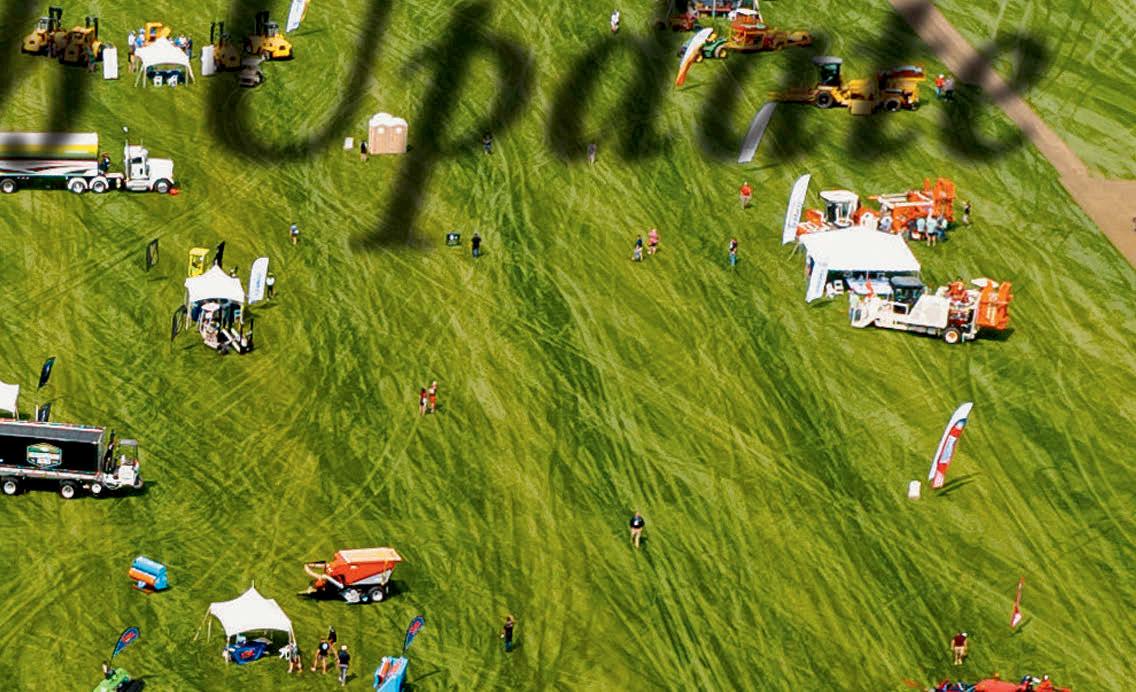


















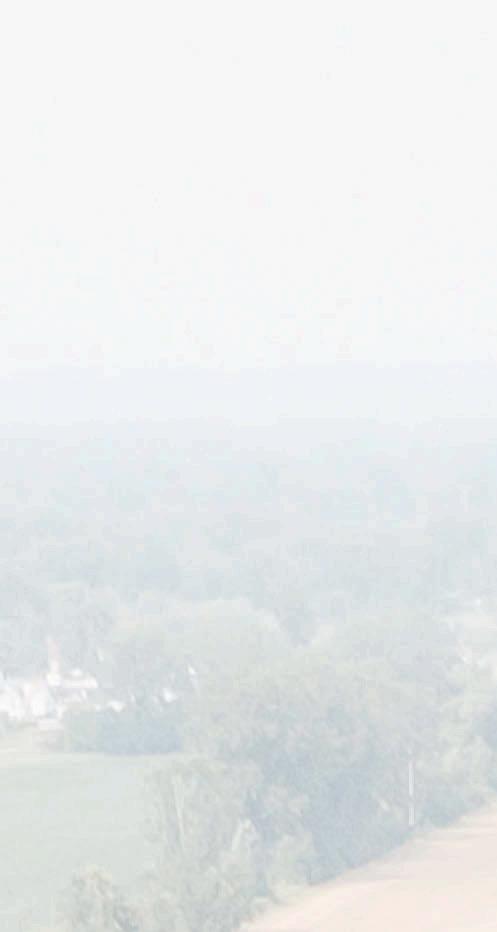

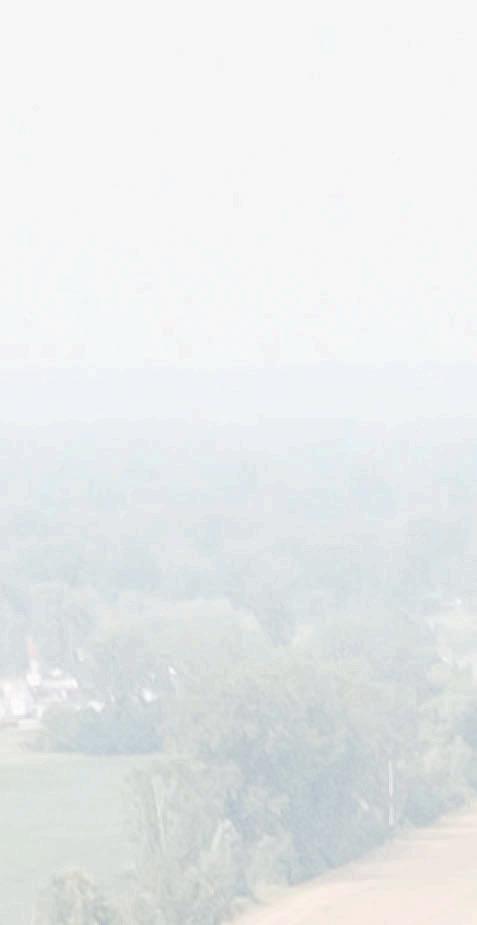






September/October 2023 The only magazine devoted to turfgrass production A publication of Turfgrass Producers International TLI Research Update TPI International Convention & Field Day Recap TPI Future Leaders Fellowship Update Call for Honors and Awards Nominations ... And Much More








THE PREMIER PLACE FOR FIELD NETTING INNOVATION YOU COUNT ON QUALITY YOU DEPEND ON SERVICE YOU RELY ON Phone: 1 (800) 330-0857 | 1 (913) 783-4600 Email: info@magnumenp.com Website: www.magnumenp.com
Cover:
Drone’s View of 2023 Summer Field Day

Photo by BE Videographers
TURF NEWS
Vol. 47 No. 5
September/October 2023

Published by Turfgrass Producers International



4 44 E. Roosevelt Road #346 Lombard, IL 60148
U.S. & Canada
Tel: 800-405-8873
International Tel: 1-847-649-5555
Fax: 1-847-649-5678
Email: info@TurfGrassSod.org
Website: www.TurfGrassSod.org
TPI Contact Information Executive Director Casey Reynolds, PhD creynolds@TurfGrassSod.org
Membership & Marketing Manager
Allie Shriver ashriver@TurfGrassSod.org
Advertising Sales/Classified Ads



Geri Hannah ghannah@TurfGrassSod.org
Co-Editors
Steve & Suz Trusty stevetrusty@TurfGrassSod.org suztrusty@TurfGrassSod.org
Art Director
Jane Tomlinson jane@inkumbrella.com
Director of Meetings
Liz Lonsbrough liz@TurfGrassSod.org
Policy Consultant
Jonathan Moore jonathanm494@gmail.com
Editorial Advisors
John Sorochan, PhD University of Tennessee (warm-season grasses) sorochan@utk.edu
Aaron J. Patton, PhD Purdue University (cool-season grasses) ajpatton@purdue.edu
Turf News is published bi-monthly (January/ February, March/April, May/June, July/August, September/October, November/December) with a $25 subscription fee from Membership dues, by Turfgrass Producers International
444 E. Roosevelt Road #346, Lombard, IL 60148
Periodical postage paid at Jefferson City, MO
POSTMASTER
Please send address changes to Turf News
444 E. Roosevelt Road #346, Lombard, IL 60148
USPS no. 003 255; ISSN 0899-417K

Canadian Post: Publications agreement No. 1479148



FEATURE ARTICLES
FOCUS: TLI Research Update
10 TPI Future Leaders Fellowship Thriving and Looking Forward
This TPI program is helping members grow as turfgrass industry professionals and leaders.
14 Future Leaders Fellowship Spotlight
Get to know two more of the TPI Future Leaders Fellowship cohorts.
16
Irene Gavranovic-Sipes Honored with Female Leader Award
The Brouwer Kesmac Female Leader Award was presented at the Women in Turf Dinner.
18 The Lawn Institute Turfgrass Research Update
Get caught up on the latest results of important research funded by your support of TLI.
46 Rooted in Research—The Big Three Cultural Practices—How Low Can You Go?
What are the economic minimums for mowing, fertilizing, and irrigating turfgrass?

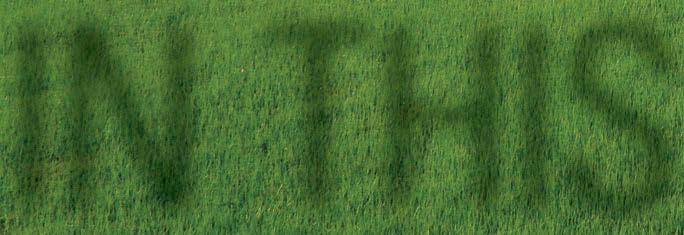
48 National Pesticide Officials Visit McCurdy Sod Farms



The FIFRA SFIREG folks included McCurdy Sod Farms in three-day conference.
50 Call for Honors and Awards Nominations
It’s that time of year again. Submit your nominations for TPI prestigious awards.
52 Dr. Henry W. Indyk Scholarship Opportunities
The deadline for receipt of applications for these scholarships is October 1.
54 TPI International Convention & Field Day Recap
Revive your memories or see what you missed in Michigan the last week of July.
66 Thank You to the Team!
Thanks go to the key team members that made TPI’s Michigan event happen.
68 World Cup Soccer Research
Catch up on the research focused on the playing surfaces for 2026 World Cup Soccer.
70 Preston Pooler Photo Journal

Preston Pooler shares some of his Family Farm Night and Field Day photos.
72 Start Your Planning for February 2024 in Orlando
Check out highlights of TPI’s 2024 International Education Conference & Field Day.
76 U.S. Sod Checkoff Updates
Keep up to date on how checkoff programs can grow a market—in this case for SOD.

78
Five Ways to Incorporate Mindfulness into Your Life
Mindfulness is exercise for the brain to help you better handle life’s daily stressors.
81 Promote Smart Irrigation Year-Round
The Irrigation Association offers resources to share smart irrigation with your customers.

1 TPI Turf News September/October 2023
September/October 2023 The only magazine devoted he ly magaz devoted i y to turfgrass product TLI Research Update T R TPI International Convention & Field Day Recap TPI Future Leaders Fellowship Update Call for Honors and Awards Nominations ... And Much More Th IN THIS ISSUE DEPARTMENTS President's TURF…...…..................……...… 2 Executive Director's TURF …...................... 4 TPI News…………………….…................... 6 The Lawn Institute News ...................... 8 & 9 Association Updates …..…..…................... 80 Happenings.......................................82 & 84 Turfgrass Industry News ................ 86 & 88 Three Month Climate Predictions .... 90 Weather Watch…................................92 Classified Ads.........................................94 Advertisers Index....................................95 Welcome New & Returning Members.....95 Turfgrass Industry Calendar.................96
PRESIDENT’S TURF 2023
Why Do They Call It a Field Day?
When my daughter was in the second grade her teacher sent home a note declaring that the following Friday would be the school’s Field Day. Having grown up on the farm, her thoughts of a Field Day revolved around pulling weeds, stacking sod, or planting grass by hand. I could tell that Liz was troubled by the upcoming event, but she knew that the rest of her class of city kids were excited.
The big day at the park finally arrived, and she went to school with hesitation. Later that afternoon I asked her how her day went. Her response—with a grin—was, “Why do they call it a Field Day?”
Last week was our TPI Convention and Vendor Expo at New Lawn Sod Farm in Michigan. It was anything but just a Field Day. On Monday some toured the Ford F-150 assembly plant and the Henry Ford Museum, while others toured Michigan State University’s turfgrass research facility. On Tuesday, we had great education sessions about succession planning and business management. Then Dr. Casey Reynolds updated us on how TPI is working hard to improve our profession.
Tuesday’s Family Farm Night included the equipment and product parade, a magician, homemade ice cream, and even tricycle races (where mature adults were allowed to make total fools of themselves).
Wednesday the “Field Day” displayed 42 vendors featuring planting stock, harvesters, forklifts, mowers, and more, giving sod producers the opportunity to interact with the suppliers that are so important to our industry.
It required countless hours and two years of preparation by our event planning team, staff, and the TPI Board to put this together.
The DeBucks and their staff at New Lawn Sod Farm were great hosts as they allowed us to take over their farm for a week and interrupt business. The DeBucks are not only in the entertainment business—they are in the business of helping families make memories. I am sure that anyone that attended will agree that they have it figured out.
Many thanks to all of those who made this Convention possible.
There will not be another summer show until July of 2026, at Lake Geneva, Wisconsin. But as soon as February 2024 we will be meeting again in Orlando, Florida, for another TPI International Conference and FIELD DAY. I hope to see you there. Maybe we can come up with another name!
Let’s Grow Together!
TPI Board of Trustees
Officers President B ob McCurdy McCurdy Sod Farms - U.S.A. +1-731-692-3515
mccurdysodfarms@gmail.com
Vice President Diane Mischel DeBuck’s Sod Farm, Inc. – U.S.A. +1-810-653-2201 office@debucksodfarm.com
Secretary-Treasurer
Daniel Huggett Columbus Turf Nursery – U.S.A. +1-740-983-6580 danielh@columbus-turf.com
Past President

Jim Keeven SelecTurf, Inc. – U.S.A. +1-573-634-3444 jim@selecturfsod.com
Executive Director Casey Reynolds, PhD Turfgrass Producers International – U.S.A. +1-847-649-5555 creynolds@TurfGrassSod.org
Trustees
Eric Hjort Tater Farms – U.S.A. +1-904-692-2246 eric_hjort@taterfarms.com
Albrecht Knigge Rasenland – Germany 495 101 915361 knigge@rasenland.de
Larry LeMay A-G Sod Farms, Inc. – U.S.A. +1-559-289-2302 llemay@agsod.com

Lindy Murff Murff Turf Farm, Inc. – U.S.A. +1-281-328-2812 lmurff@murffturf.com
Adam Russell MVP Genetics – U.S.A. +1-971-718-4525 arussell@mvpgenetics.com
Ron Schiedel Greenhorizons Group – CANADA +1-519-778-7500 ron@greenhorizonssod.com
Wade Wilbur Sod Shop – U.S.A. +1-913-814-0044 wade@sodshops.com

2 TPI Turf News September/October 2023
Bob McCurdy








2023 TPI International Convention & Field Day Recap





The intersection of business and family was on full display at DeBuck’s family farm for the 2023 TPI International Convention & Field Day in Belleville, Michigan. Approximately 500 attendees descended onto this unique farm that showcased not just sod, but agritainment as well. A fire truck with a candy cannon on it? Check. Magicians for the kids? Check. A trike race for surprisingly competitive adults? Check. But more on that later… And last, but not least, of course, the latest in equipment and products for the sod production industry? Check that box as well.
TPI summer conventions have always been designed with less time in the convention center and more time on the farm or doing other activities. This year at TPI we wanted to spend as much time as possible on the farm, and if you look through the recap article and pictures starting on page 54 in this issue of Turf News I think you’ll see why.
Tuesday night was dinner at the farm, complete with popcorn, candy, drinks, and plenty of time for TPI members to socialize before a Show & Tell Parade of TPI members’ equipment and products. I have to say I enjoyed that as much as anyone. It was just really fun to see our TPI suppliers showcase their products while listening to narration and commentary by TPI board members Adam Russell, Lindy Murff, and Larry LeMay who came in from the bullpen to help out.
A special thanks as always goes out to our supplier members who really showed up in full force during a twoevent year. I want to give a special thanks also to the host, New Lawn Sod Farm, and all their staff, and the TPI staff who put in the long days and nights to have the farm and field day in great shape to host us. The DeBuck family really went above and beyond, so if you see them at a future event, please be sure to recognize them and thank them for us.
There is no doubt that TPI is a family and our experience at this summer’s TPI International Convention & Field Day certainly highlights that. So much in fact, that one of our newer TPI members contacted me by email after the event to thank me for all of our work and say that he hadn’t seen such a close-knit industry in all of his travels in a long time. This has been my experience at TPI since joining it in 2017, and I look forward to many more events to come. We hope to see you in Orlando in February of 2024, a short six months away!
Oh, and as for my reference to the trike race earlier? We have it all on video and will be sharing it soon! Let’s just say The Lawn Institute wasn’t the only winner at that event! It was a blast!

4 TPI Turf News September/October 2023
EXECUTIVE DIRECTOR’S TURF
There is no doubt that TPI is a family and our experience at this summer’s TPI International Convention & Field Day certainly highlights that.
@TPITurfTalk @TheLawnInstitute Please follow us on Twitter, Facebook and Instagram! @TurfgrassProducersInternational @TheLawnInstitute @TheLawnInstitute
Casey Reynolds, PhD
With all the things that could go wrong with your natural grass crop, isn’t it nice to know that a Progressive Turf Equipment™ mower isn’t the biggest part of your headache? In fact, we at Progressive have worked hard over the past 30 years to bring to the market a Quality built product that just happens to cut grass second to none. These low-maintenance mowers coupled with inventory
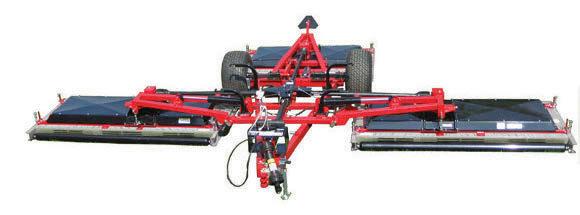



800.668.8873

WWW.PROGRESSIVETURFEQUIP.COM
TD-92™
TDR-30™
TDR-26™
TDR-22™
Quality built in North America and supported by a world-wide Dealer network.
Pro-Max 36™ shown
WHAT TO KNOW
HAVE IDEAS FOR NEW TPI PUBLICATIONS?
Sod as Agriculture and Weed, Insect, and Disease Control for Turfgrass Producers are being updated now and we’re asking what new publications could help TPI members. Contact Dr. Casey Reynolds at CReynolds@TurfGrassSod.org or 847-737-1846 to discuss new ideas.

TPI STAFF & FUTURE LEADERS FELLOWS TO DC
The TPI staff and Future Leaders Fellows are meeting with agencies and legislators in Washington, DC, September 12-14 to discuss legislative and policy updates relevant to our industry. Be sure to be on the lookout for a full recap in the next issue of Turf News
MEMBERSHIP CONSULTANT’S REPORT TO BE SHARED IN ORLANDO
The results of the membership consultant’s analysis will be reported at the 2024 Winter TPI International Education Conference & Field Day in Orlando, February 5-8, 2024. Also keep on the lookout for more information in upcoming issues of Turf News. As you see and hear the comments and suggestions, please be sure to share your thoughts with your TPI board and staff.
TPI STATE AND COUNTRY REPRESENTATIVES COUNCIL IS RETURNING!
We want to hear from TPI members about what is going on in their region and what TPI can do to better serve our members locally. Please contact Allie Shriver at ashriver@TurfGrassSod.org if you are interested in nominating yourself or another TPI member from your area!
EMPLOYEE HEALTH INSURANCE PROGRAM FOR TPI MEMBERS

TPI has made available an Employee Health Insurance Program for TPI member farms! Check out our TPI website or visit https://www.associationpros.com/tpi-inquiryform for more information on how to apply.
2024 TPI MEDIA KITS AVAILABLE SOON
Work on the 2024 TPI Media Kit is underway, and it will be ready soon. Watch for an announcement online and review it and make your plans for using TPI Publications to reach your customers and potential customers to share your information and grow your business. Also, you can still take advantage of some of the advertising opportunities available to TPI members this year if you act quickly. Take full advantage of the opportunities for the Annual Equipment & Product Buyer’s Guide in the November/December issue of Turf News. The deadline for the supplier editorial material is September 13. Please contact Suz Trusty at suztrusty@TurfGrassSod.org or phone 402-6801935. Advertising space deadline is September 29. Please contact Geri Hannah at 847-649-5555 or email ghannah@TurfGrassSod.org. for advertising opportunities. The full 2023 media kit can also be found online at: https://issuu.com/tpiturfnews/docs/tpi_media_kit_2023
INTERESTED IN CROP INSURANCE?
TPI is working with the U.S. Farm Service Agency to develop potential crop insurance plans specific to sod production. If you are interested in learning more or are willing to serve on an exploratory committee, please contact Dr. Casey Reynolds at CReynolds@TurfGrassSod.org or 847-737-1846.
6 TPI Turf News September/October 2023
TPI NEWS
WHAT TO KNOW
INFORMATION ON SOD CHECKOFF PROGRAM
The full text of the U.S. Sod Checkoff Program proposal is available at www.SodCheckoff.org/Resources Read the full order to learn more about this initiative and upcoming referendum. For additional information about the proposed U.S. Sod Checkoff program read the article beginning on page 76 in this issue. See the Turfgrass Industry Calendar on page 96 of this issue or visit www.SodCheckoff.org for a list of upcoming events. You also can contact Dr. Casey Reynolds at creynolds@TurfGrassSod.org or 847-737-1846 to schedule an event near you!
TPI CONTINUES WORK WITH EPA


TPI is continuing its work with the EPA on the proposed 2022-2026 EPA Strategic Plan to make sure that sod farmers are included in important initiatives. TPI is also working with the EPA on proposed changes to the use of the herbicide Atrazine and other pesticides. Please contact Dr. Casey Reynolds at creynolds@TurfGrassSod.org or 847-737-1846 if you have questions.
FOLLOW TPI AND TLI ON SOCIAL MEDIA





Turfgrass Producers International
Twitter: @TPITurfTalk
Facebook: @TurfgrassProducersInternational



MARK YOUR CALENDAR
NEXT TPI CONFERENCE—FEBRUARY 4-8, 2024!

The Lawn Institute
Twitter: @TheLawnInstitute
Facebook: @TheLawnInstitute
Instagram: @TheLawnInstitute
If you joined TPI in Michigan July 24-26 you know how beneficial it can be to attend TPI Events. If you couldn’t make it, you will want to make sure that you don’t miss the next one. See the recap of the July meeting beginning on page 54 of this issue of Turf News. Then check out the article beginning on page 72 and the ad on pages 74 and 75 and make sure next year’s plans include the TPI 2024 International Education Conference & Field Day in Orlando, FL. Check future issues of Turf News, Industry Harvest, and the TPI website for all the details as they continue to be finalized. Also watch for news on the opening date for Registration online so you don’t miss out on this very important event February 4-8, 2024, in Orlando! And bring the whole family!
7 TPI Turf News September/October 2023
TPI NEWS
THANK YOU TO ALL 2023 DONORS
The Lawn Institute sincerely thanks ALL members that have already donated to The Foundation in 2023. In recognition of the Forever Green, Platinum Patron, Gold Benefactor, Green Partner, and 500 Club members, the lists below recognize those who donated as of 8/1/2023.

FOREVER GREEN/LEGACY GIVING
Hank & Mary Kerfoot (Modern Turf)
For more information contact the TPI office at 800-405-8873 or 847-649-5555.
PLATINUM PATRON/over $10,000
Donkey Forklifts —Lon Kraft
Heritage Turf, Inc.—Ron Nixon
Magnum —Steven Dove
Prime Sod—Ryan Thomas
GOLD BENEFACTOR/$5,000–$9,999
Cameron Financial —Darryl Yochem
Turf Mountain Sod, Inc.—Linda Bradley
GREEN PARTNER/$1,000–$4,999
A-G Sod Farms —John Addink
Bethel Farms —Will Nugent
Biograss Sod Farm —Don Heslop
Buena Vista Turf Farm—Mike Selman
Columbus Turf Nursery —Daniel Huggett
Coombs Sod Farms, LLC —John Coombs
DeBuck’s Sod Farm, Inc.—Diane Mischel
DeBuck's Sod Farm of NY, Inc.—Greg DeBuck
Emerald View Turf Farm —Eddie Keeven
FireFly Automatix, Inc. —David Collier
Heartland Turf Farms —Tom Keeven, Jr.
Jasperson Sod Farm—Randy Jasperson
Landmark Seed Company —on behalf of Larry Humphreys
Laytonsville Turf Farm —Doug Lechlider
McCurdy Sod Farms—Bob McCurdy
Milberger Turfgrass, LLC—Arthur Milberger
Modern Turf, Inc.—Hank Kerfoot

Murff Turf Farm, Inc.—Lindy Murff
Progressive Turf Equipment —Luke Janmaat
Sales Midwest, Inc.—Tim Wollesen
GREEN PARTNER/$1,000–$4,999
Saratoga Sod Farm, Inc. Steve Griffen
SelecTurf, Inc. —Jim Keeven
Seven Cities Sod, Inc.—Keaton Frye
Tater Farms —Eric Hjort
Tri-Turf Sod Farms, Inc.—Jason Pooler
Turf Merchants, Inc. —Nancy Aerni
Turf Producers Association —Jenny Carritt
500 CLUB/$500–$999
A & W Southern Sod Farm —William Head
All Seasons Grass, Inc. —Irene Gavranovic-Sipes
Blue Grass Enterprises, Inc. —Michael Loan
Central Turf Farms, Inc.—Keith Wittig
Coosa Valley Turf Farms, LLC —Donald Coyle
DMG Turf, Inc. —Clay Gardner
Eagle Lake Professional Landscape Supply—Eric Heuver
Evergreen Turf, Inc.—Jeff Nettleton
Green Acres Turf Farm —Gary Youmans
JB Instant Lawn, Inc.—Mark Tribbett
Landmark Seed Company —Ben Boehme
M & M Turf Farm—Mike Wagner
McPheeters Turf, Inc.—William McPheeters
Oregon Turf & Tree Farms—Tom DeArmond
Pine Island Turf Nursery, Inc.—Chip Lain
Quality Turf, Inc. —Morgan Heimbach
R.B. Farms LLC —Robbie Brady
Reid Sod Farm—Randall Reid
Sod Solutions —Tobey Wagner
Sporting Valley Turf Farms—Matt Wimer
Todd Valley Farms, Inc.—Wayne Thorson
Vandemark Sod Farms—Trevor Vandemark
Young’s Turf Farm —Daniel Young
West Coast Turf —John Foster
Winstead Turf Farms —Bobby Winstead
Young’s Turf Farm—Daniel Young
For more information on how you can support TLI and make a donation in 2023 contact the TPI office at 800-405-8873 or 847-649-5555 You may also donate at TheLawnInstitute.org. Contributions help support turfgrass research, education, scholarships, and natural grass campaign. Donations made in the calendar year will receive recognition in our publications and personal recognition in The Lawn Institute booth at the following levels:
FOREVER GREEN/LEGACY GIVING PLATINUM PATRON/OVER $10,000 GOLD BENEFACTOR/$5,000—$9,999
Join
GREEN PARTNER/$1,000–$4,999
500 CLUB/$500—$999
8 TPI Turf News September/October 2023
great
it
your peers in contributing to The Lawn Institute to help more consumers tap into the
resources
offers!
AN INVALUABLE RESOURCE
The Lawn Institute provides scientific, fact-based information on the value and management of lawns while funding academic research to advance the industry.

SCIENCE
The Lawn Institute funds research at universities worldwide to better understand the many benefits of natural grass.
EDUCATION
The Lawn Institute’s core mission is to encourage the improvement of lawns through research and education.
ENVIRONMENT
The Lawn Institute is a trusted, reliable resource for the latest scientific research on the many benefits of natural grass lawns.

Scan the QR to visit the Lawn Institute website!
You’ll find invaluable resources on Environmental Benefits, timeless Lawn Care Basics and compelling tips in the Helpful Hints Blog. We invite you to check back often to gain access to the most current updates!
www.thelawninstitute.org
TLI WORKS FOR YOU!
TPI FUTURE LEADERS FELLOWSHIP PROGRAM THRIVING AND LOOKING FORWARD
By Allie Shriver
Editor’s note: This is the TPI Leadership, Innovation, and Technology (LIT) Committee’s article addressing innovative solutions.
In 2022, the newly formed TPI Leadership, Innovations, and Technology Committee met for the first time. They spent an hour discussing new ideas and programs for our TPI members and the need for a new program was born - The TPI Future Leaders Fellowship. They saw an opportunity to help our TPI members grow as turfgrass industry professionals and leaders.
The TPI Future Leaders Fellowship has brought together both producers and suppliers via Zoom and in person over the course of two years. They spent time diving into leadership tactics with our moderator, Nathan Whitaker. Nathan prompts the group to dig deep and reflect on their strengths and weaknesses as employees and leaders. The group has open discussions on ideas for business improvements, industry leadership, and personal goals.
With a heavy focus on peer-to-peer connections and relationship building, the peer group pairs have visited each other’s operations for deep dives into each other’s lives and responsibilities. This has allowed our Fellows to connect on deeper levels and learn more about the industry.
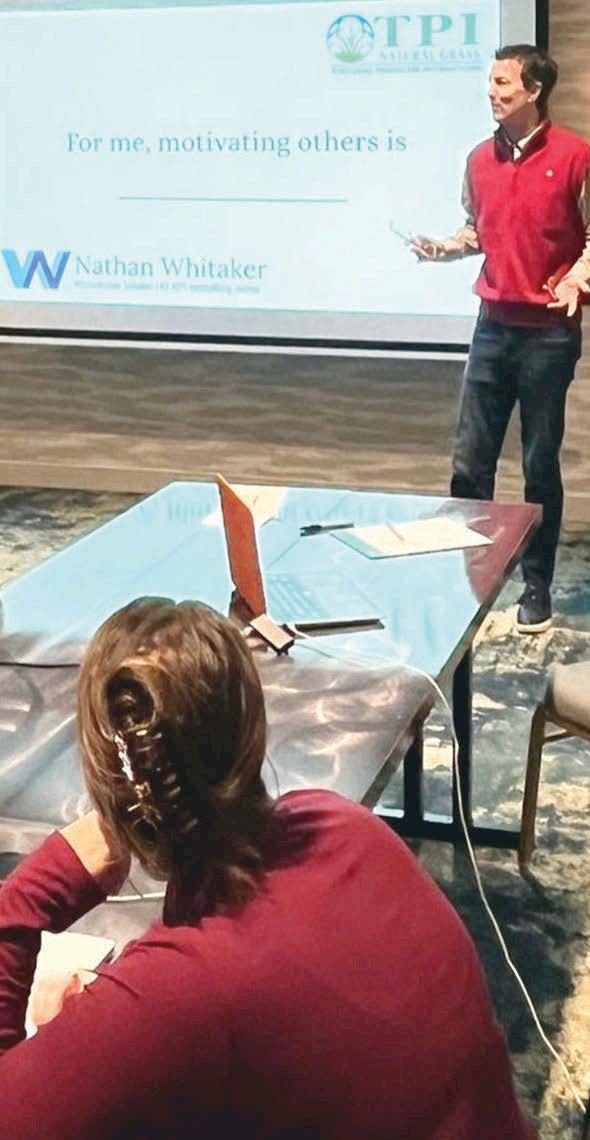
The Fellows traveled to Kansas for two days of education and a tour of TPI Board Member Wade Wilbur’s Sod Shop.
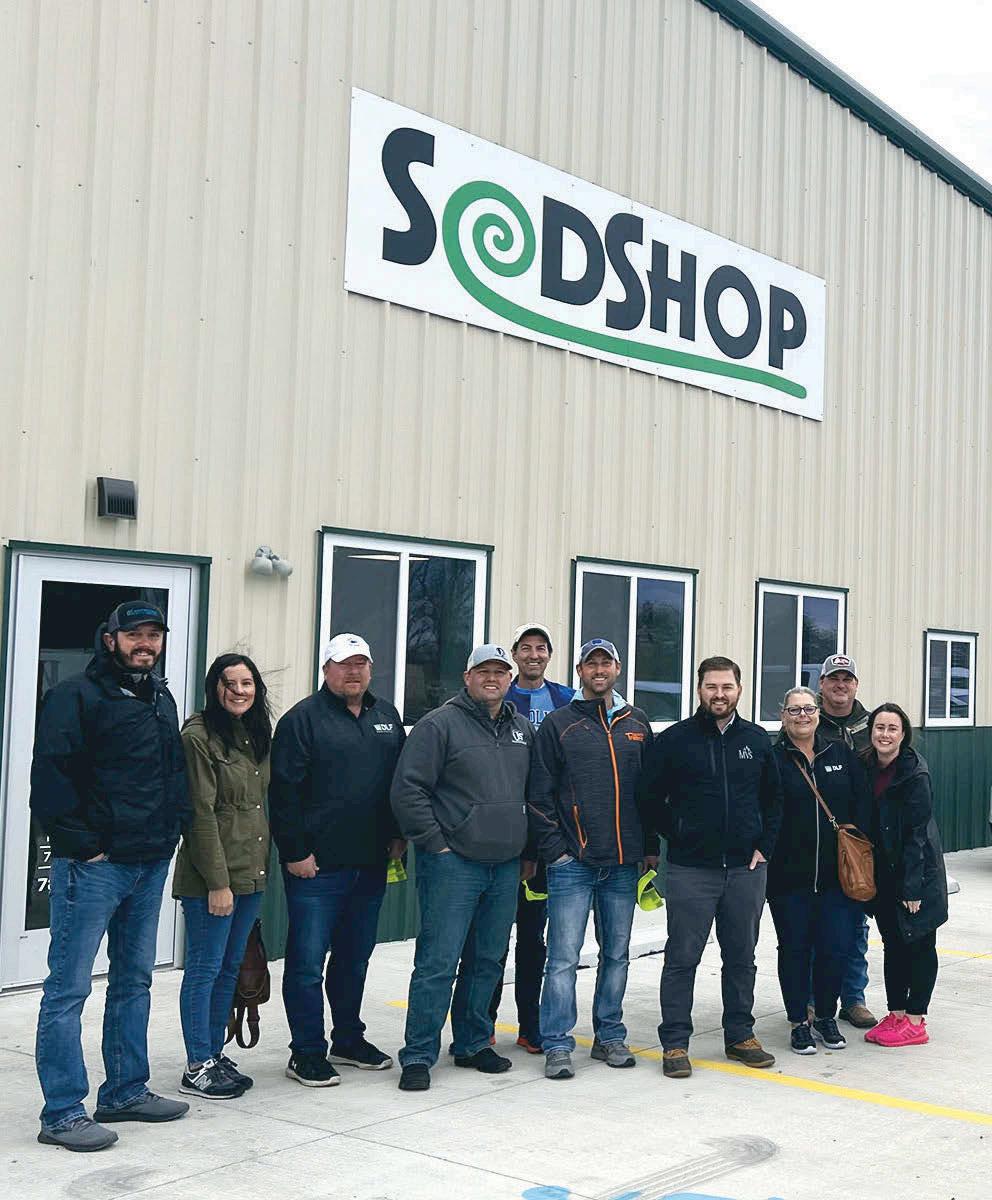
10 TPI Turf News September/October 2023
They also traveled to Germany in the summer of 2022 to the European Turfgrass Producers’ Expo.
In addition, the Fellows toured several European turfgrass enterprises and discovered how they operate. Some brought spouses and other family members to share in the international experience. It was the trip of a lifetime.


11 TPI Turf News September/October 2023
The Fellows gathered to network during the TPI International Education Conference in Nashville, TN, in February of 2023. Pictured in the group photo taken at that event are: (front row, from left to right) Sarah

Their next trip brings them to Washington DC to meet with government agencies and discuss policy with decision-makers.
This group has grown together and continues to foster their relationships each day. This program has given them a group of peers to bounce ideas off, vent frustrations to, and spend time with at TPI events. To learn about each of the Fellow’s personal perspectives on the program, see the Future Leaders Spotlight articles which began in the May/June issue, are on pages 14-15 of this issue, and will continue in the November/December issue.
The TPI Future Leaders Fellowship program has provided the opportunity for each of the Fellows to enhance their leadership skills. This will not only benefit them personally but will also increase their leadership impact within their company, TPI, and the broader natural grass industry. We are anticipating remarkable things to come and wish each of the Fellows the best in all their future endeavors.

Be a TPI Future Leaders Fellow
The 2024-2025 Cohort applications will be available this fall on the TPI website. Much like the previous group, the next cohort will travel to an ETP event, visit each other’s operations, travel to TPI Conferences, and much more! We look forward to fostering the leadership abilities of more TPI members.

12 TPI Turf News September/October 2023
Allie Shriver is membership and marketing manager for Turfgrass Producers International. She is the coordinator for the TPI Future Leaders Fellowship Program.
All photos courtesy of Allie Shiver.
Nolte, Melissa Clark, Program Coordinator Allie Shriver, and Kelsey Sandbothe, (back row, from left to right) Ryan Menken, Mark Graf, Ben
with Trebro Remote Support Services

The latest version of the ultimate, one-man turf harvesting machine.



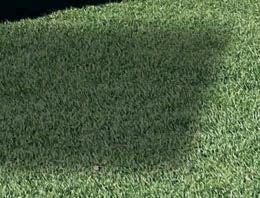

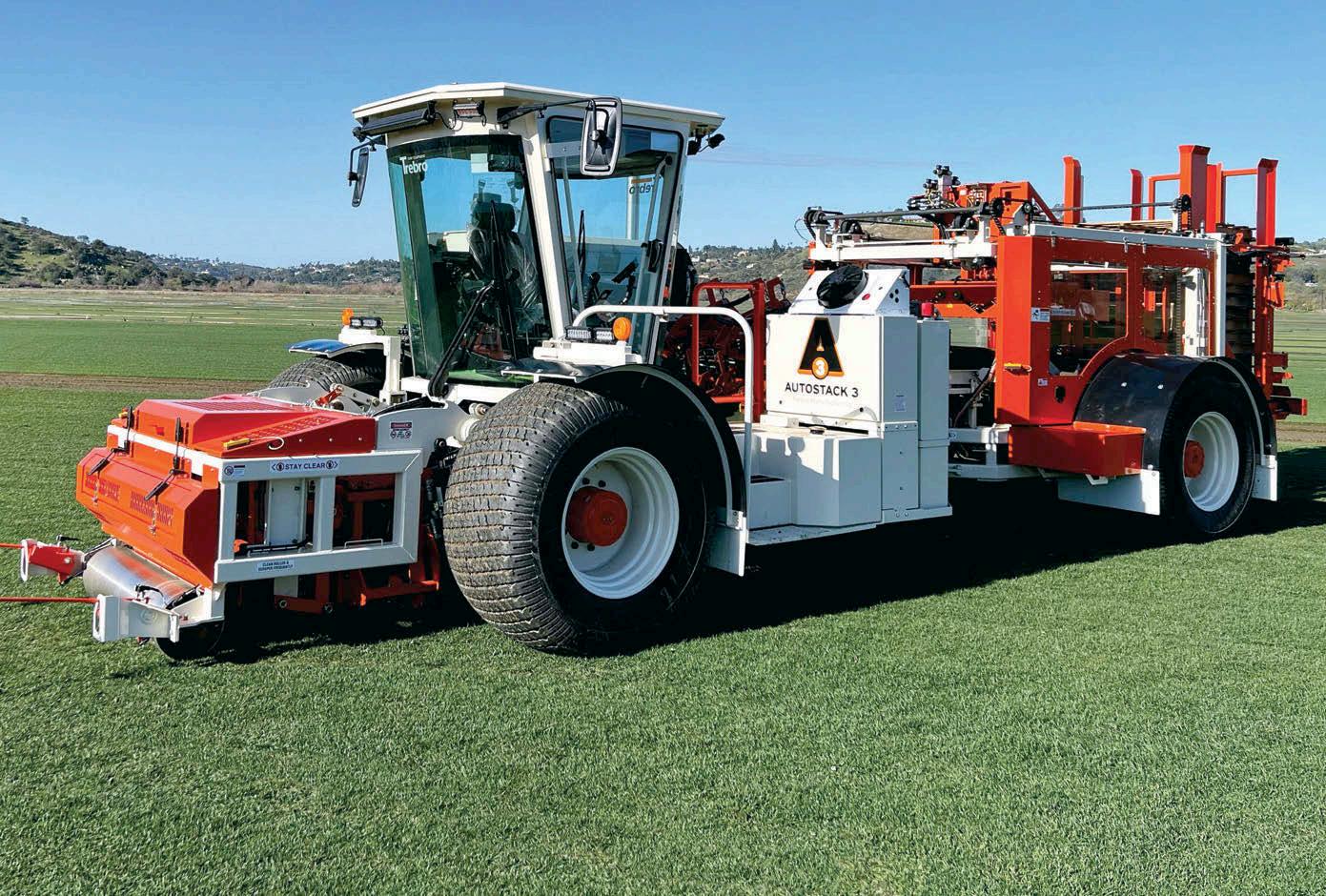
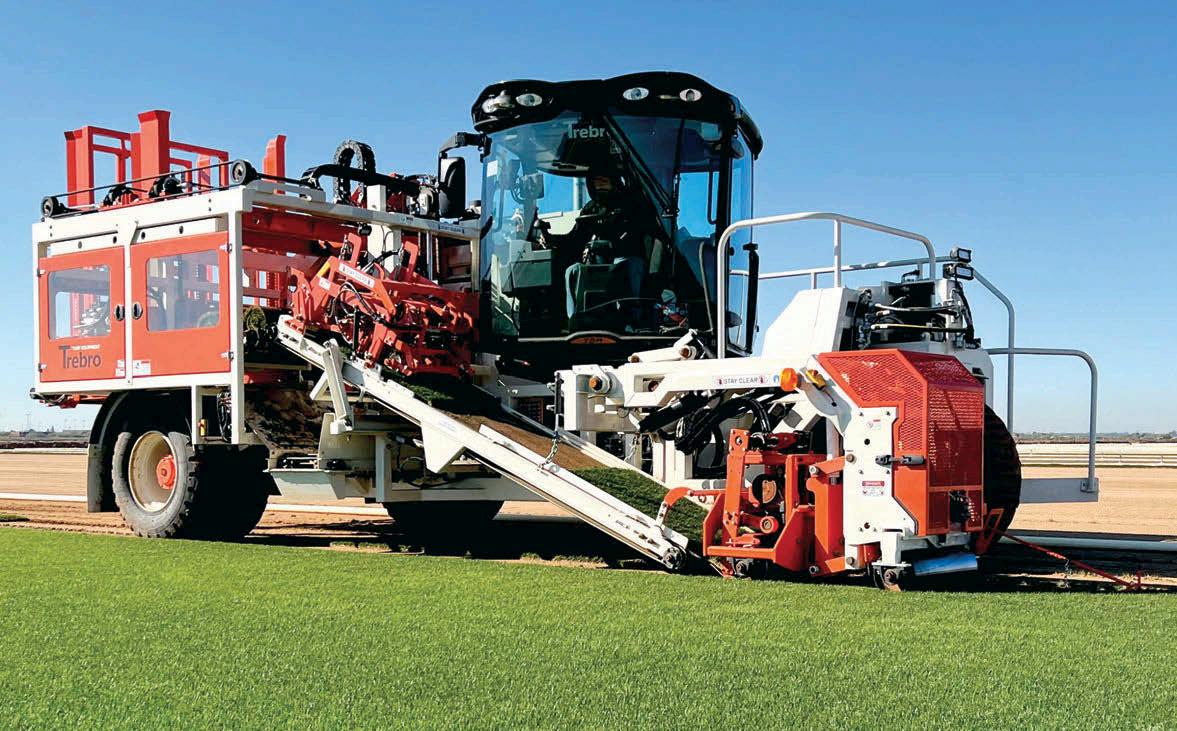
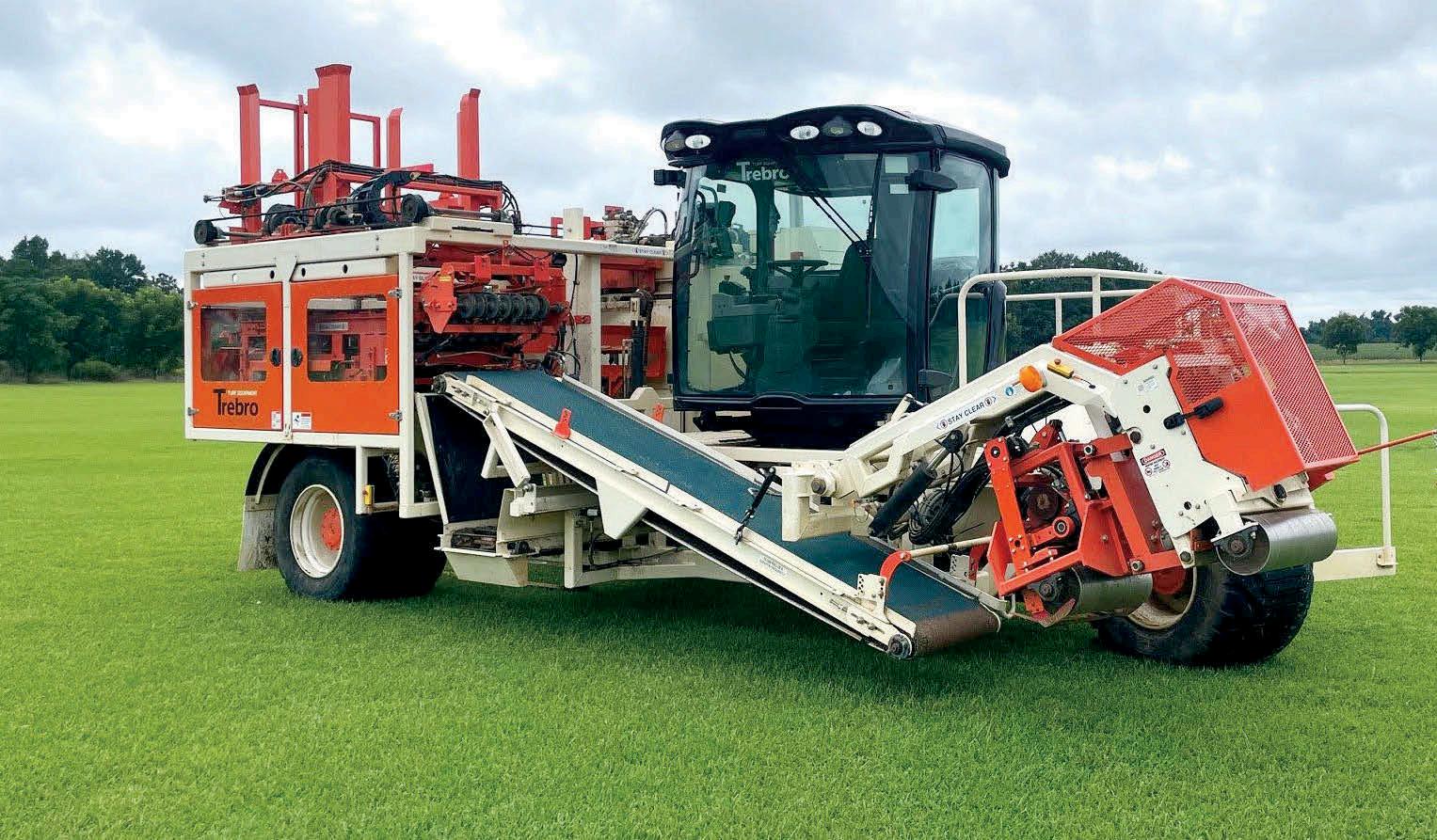
4-way camera screen






Improved power rollup

Updated, user-friendly controls with onboard diagnostics

The new TSS Slab takes production and reliability to new levels. New upgrades for 2023, including hardware and software updates.
The new TSR Roll offers our latest technology to boost your efficiency. New for 2023, this machine features an improved rollup system.
To boost your bottom line, contact Trebro today!

888-395-5867 • 406-652-5867 • www.trebro.com



13 TPI Turf News September/October 2023
FUTURE LEADERS FELLOWSHIP SPOTLIGHT
Compiled by Suz Trusty
TPI’s new members-only program—the TPI Future Leaders Fellowship—is the result of the TPI Leadership, Innovation, and Technology (LIT) committee’s collaboration on developing a small-group leadership experience to bring together new and current leaders in the natural grass industry. It’s an immersive 24-month program, with a balance of dynamic classroom and virtual presentations, experiential learning opportunities, in-depth leadership text analysis paired with travel, service projects, and teamwork, all focused on developing new skills and enhancing existing leadership characteristics. Within this interactive framework, participants individually contribute to the long-term success of their career and their organization and become even more effective advocates for the natural grass industry. As the cohort moves into the second half of the program, we’re sharing the stories of its participants.
Sarah Nolte – Blue Grass Enterprises, Inc.
Sarah Nolte is the third generation of this familyowned business. Located in Alburnett, Iowa, Blue Grass Enterprises, Inc. is a 400-acre sod farm serving the population centers of Cedar Rapids and Iowa City and the surrounding communities.
Growing up, Sarah was active in sod farming with her parents, but she “strayed from the farming path.” She earned her BA from Central College and moved overseas to teach English as a second language in Spain, Mexico, and Japan. Later, she returned to the U.S. and earned her MA from the School for International Training (SIT), planning to travel and teach internationally. Sarah says, “While completing my MA, I got a job with Apple, teaching others how to use tech at home and in the classroom. Through Apple, I met my future husband, Chris, and revised my plans.”
In 2015, an opportunity opened on the family farm just as she and Chris were considering a change from city life. “The timing was perfect for all of us, and the results have grown even better over time.”
Sarah’s diverse background in education, technology, and customer engagement has helped grow the business. In her role as business manager, she swings between the field and the office. Indoors, she handles payroll, insurance, and accounting oversight, manages human resources, completes
the purchasing of equipment and inventory management, and all the website and social media outreach. Tech-wise, she has worked with a local source on custom-designed order management software and keeps the precision ag ticking in the tractors.

In recent years, Sarah has added in more tractor time and collaboration with her Dad, Mike Loan, on sod production decisions and issues. Together, they emphasize research, agronomy, and technology, whether it’s being “wildly picky” with individual cultivar selection of their Kentucky bluegrasses based on NTEP performance and on-site testing, or working closely with Iowa State University, or incorporating practices like prescription-based feeding in the fields. For Sarah and Mike, “Peak efficiency is always the goal.”
Sarah says, “The Future Leaders Fellowship (FLF) program aligns with my goals. I enjoy intentionally creating connections and building relationships with producers who are open and honest about their experiences, are eager to try new things, and who share an understanding of our industry and a vocabulary set. The program facilitates all that, helping us develop camaraderie.”
Sarah and Greg Mischel are partnered through FLF’s one-on-one connection. Greg visited Iowa last year and Sarah visited Greg’s farm as a side trip in conjunction with attending TPI’s S ummer Conference. Sarah says, “Because of our partnership, Greg sent their new farm manager to train in Iowa early this summer. He had specific things he liked about our operations that he wanted to implement, and he wanted her to see the end goal to speed up the process. Cross-training worked well for us, too, because our crew got to hear new ideas from a fresh perspective.”
She adds, “I’ve also enjoyed Nathan Whitaker’s involvement to help us develop new perspectives on problems from other industries. I’m looking forward to the DC trip. I want to learn what’s needed in the political arena to promote and protect our industry.”
And she reports, “FLF recently added a mentorship component, connecting each of the Fellows with a current TPI Board Member to talk with once a month. I hit the jackpot by being partnered with Bob McCurdy. His experiences and humility are refreshing and always give me something to think about.”
Sarah says, “I absolutely recommend this program. The turfgrass industry will really benefit from intentional relationship-building across state and even international lines. Sharing our expertise and experiences is a sign of a healthy industry. We all need to pull in the same direction; this program can help guide the way.”
14 TPI Turf News September/October 2023
Ben Boehme – Landmark Seed Company

Ben Boehme is accounts manager for Landmark Seed Company. In that role he handles the directto-farm sod seed sales across the U.S. He says, “We provide custom seed blends or mixes tailored to the location and to specific end-user demands which vary by market for the homeowner, landscaper, contractor, developer, or other commercial clients such as golf courses or sports fields. I work with all our cool-season grasses.”
Ben grew up in Wapakoneta, Ohio, and was introduced to the green industry by working for a friend’s dad’s landscaping company while in high school. The company did new lawn installations, lawn and landscape renovations, and lots of tile work. Ben says, “The work was hard, but I liked it and appreciated seeing the project develop from start to finish.” Discovering that Owens State College in Toledo, Ohio, offered a landscape and turfgrass management degree, he signed on, specializing in sports turf management. “After graduation, my goal was to work with numerous different sports turf managers, learning as much as possible from each of them,” says Ben. That led him to the Toledo Mud Hens Triple-A affiliate of the Detroit Tigers, the multi-field Pacesetter Park complex, and the Colorado Rapids professional soccer facilities.
Then, back in Ohio, Ben moved in with a buddy who had purchased a house to renovate. His future wife, Kate, a Cincinnati native, was the girl next door. Ben says. “Early in our marriage, Golf Enviro Systems, a distributor in Colorado, offered me a sales position as their sports turf specialist, working with customers on all types of fields across the state. We decided to take that opportunity. Within that role, I was able to share my knowledge with various sports turf managers while also learning a lot from them.”
After several years in Colorado, they moved back to the Columbus, Ohio, area to be closer to family. Ben says, “Now we have a new baby boy, Bryce, six months old in August—an amazing addition. We live on about six acres surrounded by farm ground with all sorts of wildlife sharing our space, a great spot for Bryce to grow up.”
Back in Ohio, Ben initially worked for Scotts Miracle-Gro on the commercialization of grass seed varieties.

Then he learned about an opening at Landmark working with their sod seed sales team. He says, “I was fortunate to get that position and through it meet and work with Larry Humphreys. While I took on some other accounts, my focus was shadowing Larry; working side by side and trying to absorb the vast knowledge he has, meeting the farms he’s dealt with for generations, and learning how each customer was more like a friend or family member for Larry. I couldn’t have had a better mentor.”
Ben saw FLF as an opportunity to further his goal of always learning, growing, and experiencing more personally and professionally. “And thinking about the impact Larry made within the industry, I wanted to become a better leader and hopefully, down the road, become a mentor to others.”
For the one-on-one connections, Ben visited Greg Mischel of DeBucks Sod Farm, Inc. in Davison, Michigan. He says, “Greg’s wife, Diane, is the generational family member. Greg shared how he has joined her in taking on the leadership of the farm in managing operations and finding ways to navigate today’s trends in the market.” Greg visited Oregon for Landmark’s Field Day to see the seed development and production side for the first time.
Ben describes the FLF group as “awesome,” willing to be vulnerable and share their diverse experiences and viewpoints. Another highlight was Dr. Casey Reynold’s session discussing his efforts to stand up for natural grass in legislation that impacts our industry. “That background better equips us for our meetings with government officials during our trip to DC, which Casey also will lead.”
Ben wholeheartedly recommends FLF. “Allie Shriver has done an amazing job of establishing and running the program. Nathan Whitaker sharing his insights on leadership and mentoring is a great combination. As Nathan says, ‘Often some of the greatest opportunities and most exciting things happen when you change things up.’”
Applications for the 2024-2025 Future Leaders Fellowship will open this fall. If you’d like to apply, please email Allie Shriver at ashriver@TurfGrassSod.org.

THANK YOU TPI FUTURE LEADERS FELLOWSHIP SPONSORS


15 TPI Turf News September/October 2023
Suz Trusty is co-editor of Turf News.
IRENE GAVRANOVIC-SIPES HONORED WITH FEMALE LEADER AWARD
After 50 years of business, Brouwer Kesmac recognizes the collective pride and passion that lives within those in the turfgrass industry. Though automated advancements may lead you to think one could do it all on their own, the reality is, we as farmers know that nothing would be possible without a solid team of dedicated individuals behind you.
The Brouwer Kesmac Female Leader Award is presented to a woman that shows a commitment and passion not only to the turfgrass industry but to the education of others and the proliferation of the industry. This individual represents the core and often familial values held by the community and provides overwhelming value and richness to the turfgrass farming collective.
Fittingly, the Award to honor and recognize one of these many worthy individuals was presented on behalf of Brouwer Kesmac and Sales Midwest on July 24, 2023, during the Women in Turf dinner, held in conjunction with the TPI International Convention & Field Day in Michigan. The recipient was not notified prior to the presentation, adding an element of surprise to the muchdeserved honor.

That recipient is Irene Gavranovic-Sipes, the owner and CFO of All Seasons Turf Grass, a family-owned sod business established in 1981 just west of Katy, Texas. She grew up on a farm started by her father Willie and wife Gladys that would later become Horizon Turf Grass. There she learned the ropes along with her brother Will Jr. and her sister Rachel, who now four generations later have been in the sod business for over 40 years.
After high school, Irene earned a double major in Economics and Soviet and East European Studies from the University of Texas, as well as an MBA from Eastern New Mexico University, before returning home to her farming roots in 1999.
Irene saw a need for a sand-based farm in the west Houston area to better serve the golf, sports field, and premier property markets. She seized the opportunity to launch the Brookshire Farm in 2000, forming a partnership with her father Willie in what is now All Seasons Turf Grass.
In 2014, Tiger Woods chose All Seasons Turf Grass as the supplier for the first golf course he designed in the United States, Bluejack National. Irene’s farms have gone on to supply sod for National Football League (NFL) teams as well as the Houston Dynamo Soccer Field and Major League Baseball’s Houston Astros.

Under Irene’s leadership, All Seasons Turf Grass has become an industry leader in new sod varieties, groundbreaking business practices, and new equipment innovation. She is responsible for all budgeting and financial forecasting and even created her own All Seasons Trucking company to better handle deliveries. All Seasons Turf Grass is also part of the Harmony Brands network, producing turfgrass for a large variety of big box home improvement stores throughout the state of Texas. Irene has served as a board member for several industry organizations, including as past President of the Texas Turf Grass Association. She later was elected to TPT (Turfgrass Producers of Texas) President in 2009 as the first woman to receive that honor.
All Seasons Turf Grass, in partnership with its sister company, Horizon Turf, has 11 farms, 12 turfgrass varieties, and over 5,000 acres in production, and Irene is constantly striving to find new varieties to provide customers with even more choices.
Irene is a down-to-earth, hard-working individual who is often the first person you see as Office Director, but she doesn’t shy away from hopping on a forklift to tackle the loading if she needs to. In the words of her husband, Scott Sipes, “It’s a family business that works hard to keep their customers happy – because that’s what the Gavranovic family does.”
16 TPI Turf News September/October 2023
Eric Brouwer (left) and Bubba Simons (right) of Brower Kesmac present the Female Leader Award to Irene Gavranovic-Sipes (center), owner and CFO of All Seasons Turf Grass. Photo by BE Videographers








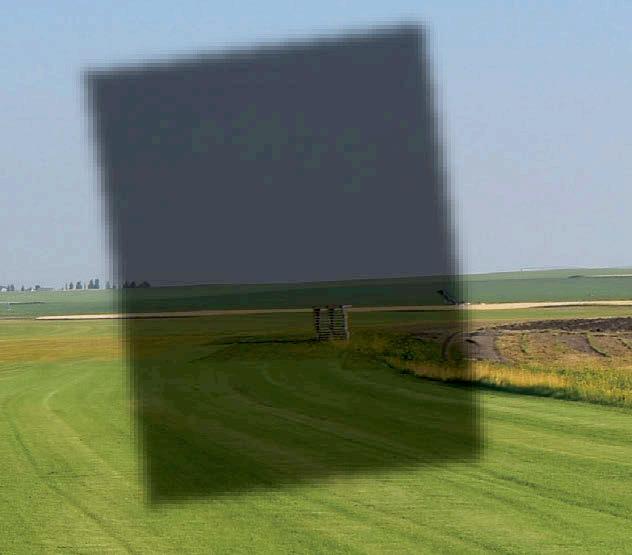



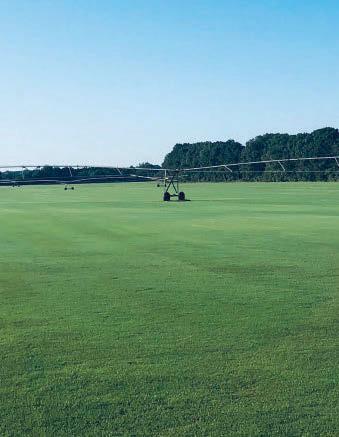
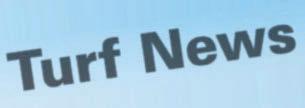




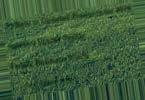














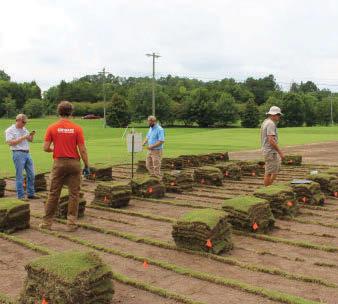

























17 TPI Turf News September/October 2023 Learn About the Many Benefits of a TPI Membership Turf News November/December2018 The only magazine devoted exclusively to turfgrass production News publication TurfgrassProducers International IN THIS ISSUE 25 New orUpdatedProducts for 2019 Industry Leader Profile Family Business Trusts ... And Much More Equipment & EquipProduct Produ Buyer’s Guide Annual • Turf News magazine •TPI e-newsletter •Pest Control Guide ( ) •Members Only Toolkit •Brochures for your customers that can be personalized with your logo Become a member of TPI and you’ll connect with turfgrass professionals all around the world! tc. but ates ng nfall, is TURFGRASS WATERING & CARE FOR NEW SOD 2018 only ded climate fall Perennial turfgrasses are some the most hardy and durable plants often found in urban landscapes. Like any new planting, they require attention and during installation to ensure successful establishment. This guide contains helpful tips to make sure your newly laid sod remains healthy and ready to enjoy! ennt n uc Gu u Turf News The only magazine devoted exclusively to turfgrass production News A publication Turfgrass IN THIS ISSUE More Benefits of Turfgrass TPI Participation in NTEP 2019 Conference Preview ... And Much More TLI Research Update TPI brings similar people, farms, institutions and industry partners together from very different parts of the world to share ideas and information that lead to progress for all. When we all work together we grow and when we isolate ourselves we stagnate. TPI has helped Green Acres Turf Farm grow in many ways that likely would not have happened without the relationships made and information obtained through our TPI membership. Gary Youmans | Green Acres Turf Farm, LLC, South Carolina •Worldwide support of growers and industry suppliers •Annual printed membership directory •Access to TGIF (Turfgrass Information Files) •Networking opportunities ...and so much more! Turf News May/June The only magazine devoted exclusively to turfgrass production publication Turfgrass ducers Internatio IN THIS ISSUE Are YouReady if Disaster Strikes? 2018 ConferenceRecap New Lawn Brochures AndMuch More Protecting rotecti g Your Investments Contact TPI at info@TurfGrassSod.org to join now
THE LAWN INSTITUTE TURFGRASS RESEARCH UPDATE
 By Casey Reynolds, PhD
By Casey Reynolds, PhD
The Lawn Institute (TLI) has a long-standing history of funding natural grass research at nationally and globally recognized universities. Each year, TLI sends out a call for proposals to university researchers throughout the world to be compiled and reviewed by the TLI Research Committee at the TPI International Education Conference. The 2023 TLI Research Committee members listed in Table 1 are comprised of TPI members, staff, university educators, and industry personnel in order to ensure that TPI members and their interests are fully represented in the process while also leaning on university and National Turfgrass Evaluation Program (NTEP) personnel for input on current research at other institutions.
Table 1. 2023 TLI Research Committee Members Committee MemberPosition Company
Duane Klundt Chair Mountain View Seeds
Lindy Murff TPI Board LiaisonMurff Turf Farm
Larry LeMay TPI Board LiaisonA-G Sod Farms, Inc.
Steve Griffen Member Saratoga Sod Farm, Inc.
Spencer Mendenhall Member Raft River Sod
Sarah Nolte Member Blue Grass Enterprises, Inc.
Casey Reynolds, PhDAdvisor TPI
Jay McCurdy, PhD Advisor
Mississippi State University
Aaron Patton, PhD Advisor Purdue University
John Sorochan, PhD Advisor
University of Tennessee
Kevin Morris Advisor NTEP
*Advisors to the committee do not vote on projects but are present to provide technical input on the quality and potential impa ct of proposals.
Applications for research funds can be requested on any topic, but the TLI Research Committee places priority on specific research areas that serve natural turfgrass producers and the turfgrass industry. With the help of the TLI research committee, these areas are updated each year and are listed below. Other basic guidelines of the proposals include: applicants are encouraged to adhere to all TLI forms, formats, and deadlines for full consideration of proposals; proposals for single or multiple-year projects will be considered as long as the years and funding amounts are clearly stated; funds cannot be used for faculty salaries; proposals seeking funds for capital expenditures will be reviewed on a case-by-case basis; and overhead or administrative costs shall be held to an absolute minimum, but will not exceed 16 percent.
TLI Research Focus Areas
• Cultural Impacts of Natural Grass - Research that includes, but is not limited to, societal health and well-being, fitness, athletic field safety, socioeconomics, consumer attitudes, etc.
• Environmental Awareness of Natural Grass - Research that includes, but is not limited to, carbon sequestration, heat abatement, pollution entrapment, soil remediation, run-off reductions, etc.
• Natural Grass Input Reductions - Research that includes, but is not limited to, drought tolerance, reduced water use, nutrient requirements, traffic tolerance, integrated pest management, etc.
• Extending Harvested Shelf-Life of Natural Grass
• Reducing Production Costs of Natural Grass
• Natural Grass Research Communication & Education - Information that can be used to develop content on The L awn Institute website for educating policymakers, homeowners, and the general public on turfgrass science, management, impacts, etc. This can include literature reviews on environmental impacts, natural grass benefits, region-specific natural grass selection and management, weed/insect/disease control, and more.
18 TPI Turf News September/October 2023
This year, the committee received ten research proposals focused on items such as sports field substrates, soil carbon, sod strength, bee lawns, remote detection of weeds, runoff losses, and more. The Lawn Institute Research Committee met in Nashville, TN, during the 2023 TPI International Education Conference to discuss and vote on these research proposals. The university research projects selected for funding in 2023 are listed below in Table 2 along with past projects that are still currently being funded or that were concluded in 2022. These projects represent a wide range of topics that can benefit TPI members both locally and globally.
TLI Research Project TitlePrincipal
Determining the Impact of Post-planting Cultural Practices on Sodded Lawn Water Needs in the Cool-Humid Region
Athlete Hydration during Physical Activity in Excessive Heat on Artificial Turf and Natural Grass
Long-term Environmental Impacts and Energy Balance of Lawn Removal and Conversion to Alternative Landscapes
Sod Strength Characteristics of 24 Fine fescue Cultivars
Irrigation Requirements and Consumer Preference for Six Diverse Landscapes in the Arid Western U.S.
Investigating Environmental Implications of Reclaimed Water Use for Turfgrass Areas
Stress Response Characteristics Facilitated by Endophytes in Commercially Available Perennial Ryegrass, Tall Fescue, and Fine Fescue Cultivars in Oregon
Remote Detection and Precision Control of Bermudagrass in Zoysiagrass Sod Production Fields
Quantifying the Influence of the Aggressiveness and Ratio of Kentucky bluegrass on Sod Strength of Tall Fescue/ Kentucky bluegrass Seed Mixtures
Determining the Impact of PostPlanting Cultural Practices on Sodded Lawn Water Needs in the Cool-Season Humid Region
(2020-21, $20,000)
The overall goal of this project is to document the effects of various post-planting cultural management practices that could help to reduce supplemental water needs of sodded Kentucky bluegrass lawns.
Experimental Procedures
A locally sourced (Purdy Sod, Lafayette, IN) Kentucky bluegrass sod blend was planted in a fixed roof rain-out shelter in the fall of 2019 on a silt-loam soil at the W.H. Daniel Turfgrass Research Center in West Lafayette, IN. The study area was divided in the fall of 2019 to assess the effects of various post-planting cultural inputs for their effect on managing the sod layer. A factorial arrangement of four cultural practices was implemented. They were: spring/fall core aeration (3/4-inch [1.905-cm] tines), spring/fall compost (vermicompost), a surfactant (liquid applied in 2020 and using surfactant on an organic
19 TPI Turf News September/October 2023
Institution ApprovedTotal Grant
Cale Bigelow, PhDPurdue University2020-21$20,000
Chase
Texas A&M2021$5,000
Straw, PhD, and Steven Reichman, PhD
Ben Wherley, PhDTexas A&M2021-23 $30,000
Aaron
Purdue University2021-23$20,351
Patton,
PhD, and Ross Braun
Tony Koski, PhDColorado State University2022-24$9,450
Marco Schiavon, PhDUniversity of Florida2022-23 $19,780
Alec Kowalewski, PhDOregon State University2022-23$20,000
Jay McCurdy, PhDMississippi State University2023-24$11,000
Ross Braun, PhDKansas State University2023-25$31,251
Table 2. Research Projects Funded by The Lawn Institute in 2023.
fertilizer granular carrier in 2021), and overseeding with a turf-type tall fescue blend (10 lbs./1000 sq. ft [4.536 kg/92.903 sq. m]) in the autumn of 2019 and 2020 in conjunction with compost application. Soil cultivation was stripped across each replication while compost, soil surfactant, and overseeding treatments were randomized within each strip with three replications of each treatment. Treatments were initiated in the fall of 2019 with core aeration and .50 cubic ft. (.0142 cubic m) of compost applied on 22 October 2019; 22 April and 5 June 2020; and a liquid soil surfactant applied on 25 October 2019, and 5 June 2020, and watered into the soil. In 2021 and 2022, the surfactant was loaded onto a natural organic poultry-based fertilizer carrier and applied to the turfgrass and watered into the canopy. Overseeding occurred on 24 October 2019, and 22 October 2020, and 15 October 2021, using ‘Hound-Dogs’ turf-type tall fescue blend (DLF-Pickseed, Halsey, OR). The turf was maintained at 3 inches (7.5 cm) using a rotary mower and mowed twice weekly prior to the deficit irrigation cycle. Following study initiation, mowing was only done as needed to minimize any wheel tracking of stressed turfgrass which might affect digital imaging. The area received approximately 3.0 lbs. (1.361 kg) of nitrogen annually from a predominantly controlled-release granular fertilizer and the natural organic fertilizer product.
Supplemental irrigation needs were determined using a deficit irrigation strategy based on a 70 percent green color threshold (GCT70). The deficit irrigation program began on 1 June 2022, and ended on 4 August 2022, (65 days) due to repurposing of the research space for a future study. Prior to the deficit irrigation period, the entire area was uniformly hydrated via overhead irrigation to maximize the soil water reservoir of this silt-loam soil. Thereafter, the center of each plot was imaged using a digital camera and light box every three to four days depending upon the turfgrass drought response. Images were analyzed for digital green color using a Java-based software program, Turf Analyzer (Karcher et al., 2017). Once an individual plot fell below the 70 percent green color threshold that plot received .50 inch (1.27 cm) of water from a hose equipped with a flow meter and the application was split into two .25 inch (.635 cm) applications approximately 30 minutes apart to prevent runoff and allow for uniform soil hydration. The GCT70 threshold was selected based on previous experience in maintaining a lawn turfgrass at a minimally acceptable level of green color and density. Additionally, visual quality was regularly rated on a 0 to 10 scale where 0=brown, dead turfgrass; 6=minimally acceptable lawn turfgrass; and 10=optimal uniformity, density, and color.
Key Findings
In the second year of the study, the supplemental irrigation treatments received 4.75 to 6.83 inches (12.065 to 17.438 cm) of water (Figure 1) for the 65 days of summer measurements. Comparatively, in the first year, supplemental irrigation needs ranged from 7.7 to 8.9 inches (19.558 to 22.606 cm) of water with only slight differences among treatments. As in the previous two years of the study, the core aeration treatment benefits were negligible, and thus the data pooled across cultivation. This is not to say that core aeration of Kentucky bluegrass is not beneficial, but that in this study the amount of surface area affected may not have been beneficial. As with the prior year, the non-treated sod (study control) and the sod receiving only compost required the most supplemental irrigation (6.83 inches [17.348 cm] total). The granular surfactant and surfactant + vermicompost received 6.25 and 5.58 inches (15.875 and 14.173 cm), respectively. The beneficial impact of overseeding with turf-type tall fescue (TTTF) had significant effects with supplemental irrigation ranging from 4.25-5.08 inches (10.795-12.903 cm), or roughly 2-2.5 inches (5.08-6.35 cm) less water required across this summer period to maintain 70 percent green color compared to the sod only control. For seasonal turfgrass appearance (May to early August) values ranged from 4.77.4 (Figure 2). Higher values associated with any compost application treatments, and during the deficit supplemental irrigation phase, those treatments that had been overseeded with TTTF also had a higher visual appearance, due to green color retention. For digital green color during the supplemental irrigation phase, values ranged from roughly 90 percent at the beginning of the trial, and all values declined with time as summer irrigation was not abundant. Similar to the water needs and quality data, in general, those treatments containing TTTF or a surfactant appeared to be more responsive and resilient in terms of summer green color to the supplemental irrigation treatments.
In summary, this study demonstrated a number of beneficial things. This included the occasional green color benefits of vermicompost application for seasonal green color, as well as much stronger benefits for maintaining summer green color where the turfgrass had been overseeded in the autumn with TTTF and the utility of a high-quality soil surfactant that was delivered on a granular carrier. Thus, for the maintenance of green color where reduced water use is needed, overseeding with a more drought-tolerant species like TTTF and applying a soil surfactant can help reduce summer lawn irrigation needs.
20 TPI Turf News September/October 2023


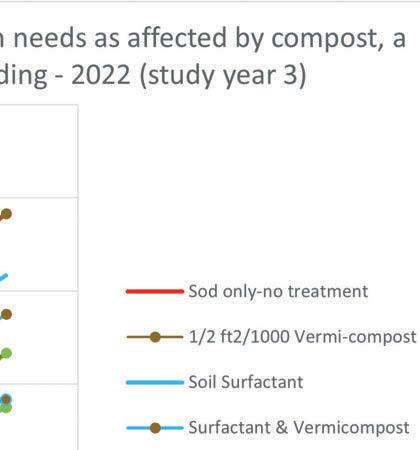




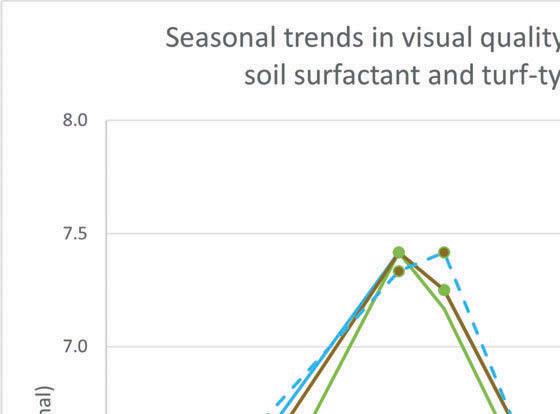






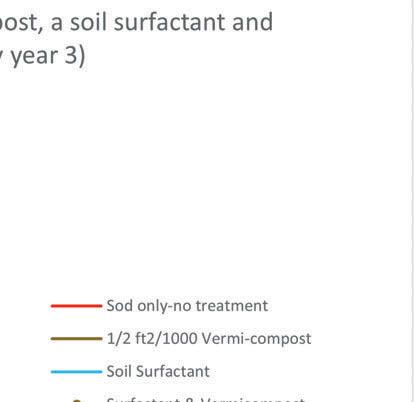

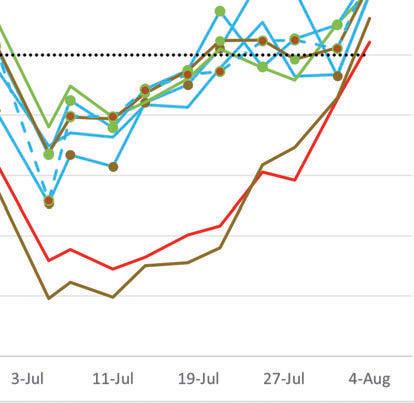
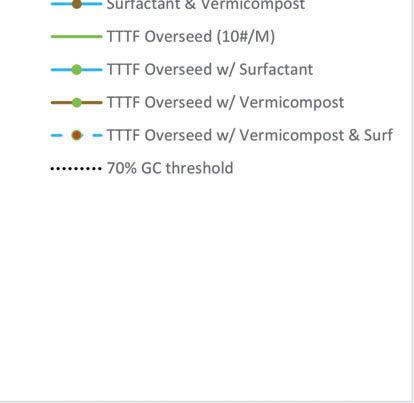
21 TPI Turf News September/October 2023
Figure 1. Cumulative irrigation applied to a Kentucky bluegrass sod in summer as affected by compost and/or soil surfactant application and turf-type tall fescue overseeding - 2022 (study year 3)
Figure 2. Seasonal trends in visual quality for a Kentucky bluegrass sod as affected by compost, soil surfactant application, and turf-type tall fescue overseeding - 2021 (Study year 2) - deficit supplemental irrigation occurred from 1 June to 4 August 2022.
Figure 3. Seasonal canopy digital green color for a Kentucky bluegrass sod as affected by compost and/or soil surfactant application and turf-type tall fescue overseeding - 2022 (Study year 3)
Athlete Hydration during Physical Activity in Excessive Heat on Artificial Turf and Natural Grass (2021, $5,000)
Soccer is the world’s most popular sport and a multibillion-dollar industry worldwide. An essential component of the soccer playing environment is the pitch (i.e., field). Two primary pitch types used at all competitive soccer levels are synthetic turf (ST) and natural turfgrass (NT). On hot, sunny, clear days, the surface temperatures of ST pitches can far exceed the air temperatures at adjacent NT pitches. This occurs because ST typically consists of synthetic pile fibers and rubber granular infill that has low albedo, water holding capacity, and specific heat, resulting in heat absorption and retention. Conversely, NT is a living system capable of cooling itself through evapotranspiration.
The human body maintains homeostasis in hot environments by dissipating heat through sweat. Sweat contains water and electrolytes that are essential for proper body function Intense physical activity, such as soccer, elevates body temperature, causing sweating and possible dehydration. In hot environments, these physiological changes can impede athlete performance. Dehydrated soccer players exhibit impaired decisionmaking abilities compared to well-hydrated individuals. Additionally, playing soccer in hot conditions reduces the total distance ran, high-speed distance, and variable run distance, compared to playing in cooler conditions.
The scientific literature extensively covers athlete hydration and performance in soccer athletes in hot environments. However, there is minimal knowledge regarding the differences in hydration and performance between ST and NT during physical activity in hot environments, despite the known higher surface temperatures of ST. This study aims to compare hydration status, thermoregulatory responses, performance, and perceived thermal stress between ST and NT in a hot environment during simulated competitive soccer matches. Differences between pitch types are hypothesized, which can provide valuable information to assist sports organizations, athletes, trainers, and coaches in preparing for competition on ST and NT under high temperatures. This information has the potential to influence heat and hydration policies/guidelines, as well as field selection for training and competition.
A total of 26 athletes from the Texas A&M University Men’s Club Soccer team participated. Analyses include 19 athletes who had complete performance data for both ST and NT ( = 20.7 ± 2.4 years old). The team competes at a high level in local, regional, and national collegiate soccer competitions, so participants were experienced, highly fit
soccer athletes. A subset of the participants was selected for in-depth monitoring of hydration status during the study (later described); therefore, there was a hydration group (n=6) and a non-hydration group (n=13). The study received approval from the Texas A&M University Institutional Review Board before obtaining consent from the athletes to participate.
The study took place in September 2021 at the Penberthy Recreational Sports Complex in College Station, TX. It was a crossover design with two treatments (ST and NT) and a two-week recovery period between treatments. Participants were divided into groups of three, and each group took part in two simulated (six versus six) soccer matches, playing one match on each pitch type, resulting in six total matches. The matches were held over four days (September 7-8 and 21-22) with two matches from 11:00 to 13:00 CST and four matches from 14:00 to 16:00 CST to achieve hot midday pitch thermal conditions.
Participants wore black shorts during the matches with either their team’s white shirt uniform alone or white shirt uniform with a purple mesh scrimmage jersey overtop. Matches consisted of four quarters, each lasting 22.5 minutes, with a 10-minute break between for data collection in a nearby environmentally controlled fieldhouse. The pitches consisted of a 3-year-old thirdgeneration ST pitch and an adjacent ‘Tifway 419’ hybrid bermudagrass NT pitch that was sand-capped (95 percent sand, 4 percent silt, and 1 percent clay in the top 15.2 cm [5.984 in.]). Cones marked the corners of the pitches, and the targeted pitch dimensions were 64 x 41 m (209.974 x 134.514 ft.). Prior to the matches, various measures were collected to fully characteriz e each pitch, including soil moisture, surface hardness, and infill depth.
Continuous measurement of microclimate conditions, which refer to the meteorological conditions at the human level influenced by nearby natural and man-made objects, was conducted for both ST and NT pitches throughout the study The five microclimate components of ambient temperature (°C), relative humidity (%), wind speed (m/s), wind direction, and solar radiation (W/ m2) were collected at one-minute intervals from 11:00 to 18:00 CST. Additionally, surface temperatures (°C) of both ST and NT pitches were captured every 15 minutes using thermal infrared images taken by a FLIR E5 infrared camera (Teledyne FLIR LLC, Wilsonville, OR). The sensors were positioned at a height of 1.5 m (4.921 ft.) to represent thermal conditions at the chest level of the participants.
Physiological measures including heart rate, body core and skin temperature, and hydration (body weight) were collected during the study. All participants wore a Beyond Pulse heart rate monitor chest strap to continuously track their heart rate. The data were stored and exported using
22 TPI Turf News September/October 2023
the Beyond Pulse app. Body core and skin temperature were measured continuously for the hydration group using the CORE Body Temperature monitor. This wearable device is non-invasive and attached to the Beyond Pulse heart rate monitor strap at the midaxillary position. It utilizes a validated thermal energy transfer sensor for continuous body temperature monitoring, suitable for outdoor exercise in hot conditions and medical applications. Data were obtained from the CORE app using COREresearch mode. All hydration measures were obtained exclusively from participants in the hydration group. Participants' weight was measured using a Mettler Toledo Weighing Platform model BBA231-3CC150A/S, with a readability and repeatability of 10 g, before each match and after each quarter. Prior to the measurements, participants were instructed to remove all clothing except for their compression shorts and ensure they were completely dry by using a towel.
Each participant in every match was equipped with a Titan 2+ GPS unit (76 mm x 38 mm x 6 mm size, 25 Hz sampling frequency, 1,000 Hz accelerometer), which was worn in a vest on their upper back. The GPS units were used to measure distance (km), distance per minute (m), distance at speeds ≥3.0 and 5.0 m/s (m), sprint mean speed (m/s), peak acceleration (m/s2), accelerations ≥+1 and +3 m/s2, and decelerations ≥-1 and -3 m/s2. A sprint was defined as reaching a speed of 4.75 m/s (15.584 ft./s) for at least one second and ending when the speed dropped below 3 m/s (9.843 ft./s). For each sprint, the mean speed was calculated, and the sprint mean speed represented the average speed across all sprints. The accelerations and decelerations were recorded as counts.
The survey included the Borg's Scale of rated perceived exertion (RPE), which assessed the participants' perceived physical work on a scale of 6-20 (where 6 indicates the easiest and 20 indicates the hardest). The Subjective Thermal Stress scale was used to evaluate the participants' thermal comfort level on a scale of 1-7, where 1 indicates very cold and 7 indicates very hot. Additionally, the modified Categorical Thirst Scale was employed to determine the participants' level of thirst on a scale of 1-7 (where 1 indicates not thirsty at all and 7 indicates very, very thirsty).
All participants were advised to consume 0.75 ounces (.022 liters) of water per pound of body weight in the 24 hours leading to a match, and urine specific gravity measures <0.010 were used to confirm hydrated status immediately before the experiment. Core temperatures and behavioral status were monitored in real-time, along with percent body weight loss at quarters, to ensure safety. At halftime and after the third quarter, when the hydration group had lost approximately 3 percent of their body weight, athletes consumed 16.1 ounces (.476 liters) of water. After final measurements, all participants
in the hydration group were fully rehydrated with water and Gatorade before leaving for the day. Non-hydration participants had ad libitum access to water and Gatorade throughout the match.
Results
Microclimate - The mean ambient temperatures ranged from 28.4 to 34.5 degrees C (83.12 to 94.1 degrees F). All ST microclimate measurement values were higher than NT when pooled across match dates, with surface temperature exhibiting the most noticeable difference (mean of 21.1 degrees C [69.98 degrees F] higher on ST). The patterns of ST and NT surface temperatures throughout the study are presented in Figure 1 (see next page). The surface temperature of ST exhibited considerable fluctuations over time, ranging from 40.3 to 71.1 degrees C (104.54 to 159.98 degrees F), while the NT surface temperature ranged from 30.4 to 39.2 degrees C (86.72 to 102.56 degrees F). The peak surface temperatures occurred on the afternoon of 7 September when solar radiation reached 1,000 W/m 2, whereas the lowest temperatures were recorded late afternoon on 8 September when solar radiation dropped to 300 W/m2 and ambient temperatures were lower. The difference in surface temperature between the pitch types reached its highest point at 35.8 degrees C (96.44 degrees F) on 7 September at 14:30 CST and lowest at 8.2 degrees C (46.76 degrees F) on 22 September at 15:30 CST (Figure 2 see next page).
Physiology - Heart rate was not significantly different between the ST and NT for either group within any quarter. Nonetheless, there was a noticeable increase in heart rate in both groups during the fourth quarter on ST. There were no significant differences in mean core body or skin temperature of the hydration group between ST and NT within any quarter (Figure 2). However, the ST consistently showed a trend of higher core body temperature until the fourth quarter and an increasing mean skin temperature as matches progressed.
Percent body weight loss reached 3 percent by halftime, with minimal variability observed between individuals and pitch types. Mean percent body weight change (ST–NT) was not significant after the first quarter (0.05%, p=0.13), yet as the quarters progressed, these changes increased and became significant [0.22% (p<0.05), 0.54% (p<0.05), and 0.72% (p<0.05) for the second, third, and fourth quarter, respectively. Measurements of urine specific gravity confirmed hydration at the beginning of each trial (<0.010). By halftime, the measures had not changed significantly but showed a trend towards minimal dehydration (0.010-0.020). At the end of the experiment, urine specific gravity had significantly changed (p<0.05), with several within the significant dehydration range (>0.020), although there were no differences observed between ST and NT (data not shown).
23 TPI Turf News September/October 2023
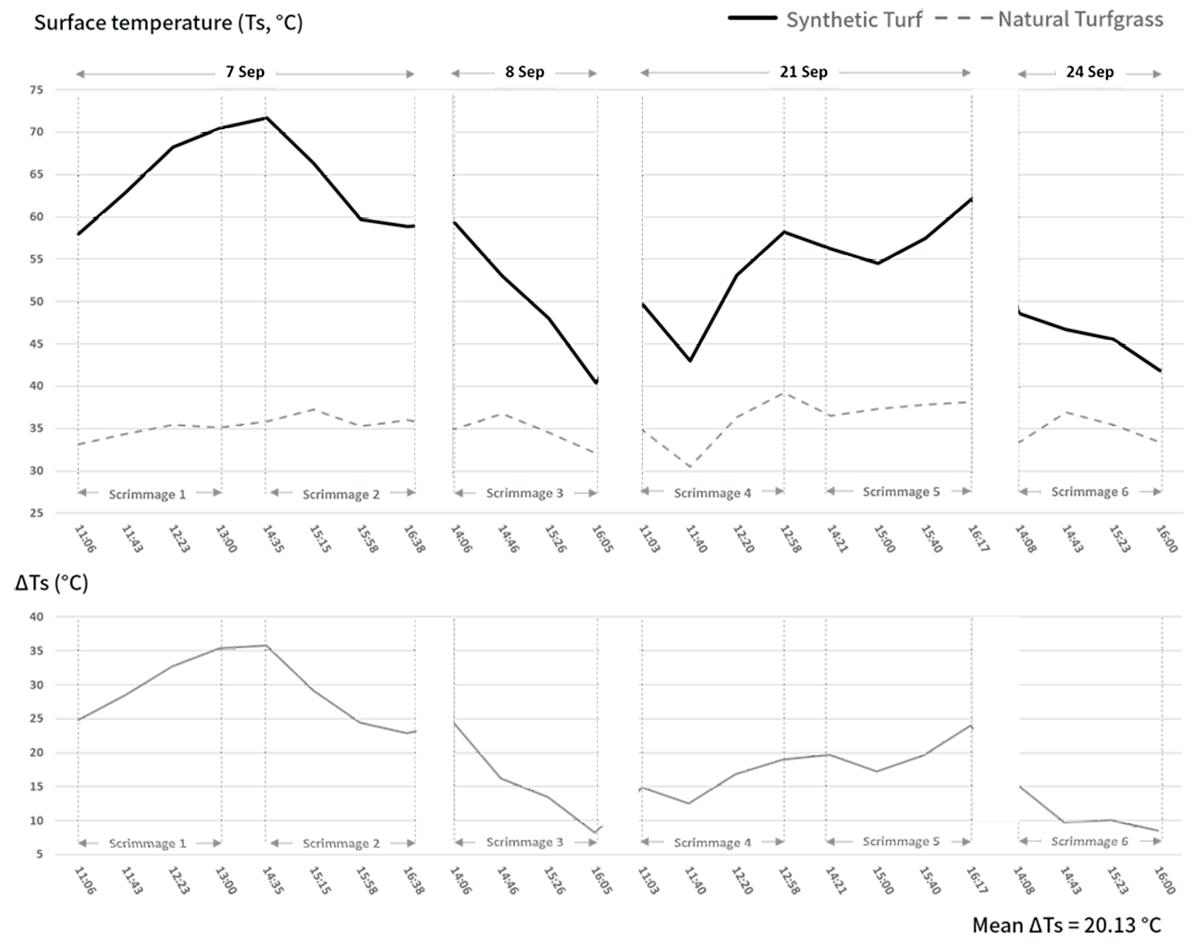

24 TPI Turf News September/October 2023
Figure 1: Surface temperature (Ts) and differences (ΔTs) of synthetic turf and natural turfgrass.
Figure 2: Mean core body (left) and skin (right) temperature of participants in the hydration group each quarter on synthetic turf and natural turfgrass.
Performance - Pitch type and surface temperature had no significant effect on any distance and speed measures for participants in the hydration and non-hydration groups. Although the regression coefficients for pitch type and surface temperature were not significant, they were predominately negative, except for the surface temperature coefficient for speed distance >3 m/s in the hydration group. Conversely, the quarter had a significant negative effect on participants in the hydration group in terms of total distance, distance per minute, and speed distance >3 m/s. These distance and speed measures decreased as a match progressed. In contrast, no speed or distance measures in the non-hydration group were significantly affected by quarter. The only positive quarter coefficients were observed for the sprint mean speed coefficient in the second quarter in the hydration group and the third and fourth quarters in the non-hydration group.
Pitch type significantly influenced accelerations ≥+1 and +3 m/s2 and decelerations ≥-1 m/s2 in the hydration group. These measures were also negative and significant in the non-hydration group, with the addition of decelerations ≥-3 m/s2. Surface temperature had a significant, negative impact on accelerations ≥+1 m/s2 and decelerations ≥-1 m/s2 in both groups. No other coefficients for pitch type or surface temperature were significant for the other acceleration and deceleration measures. The quarter did not significantly affect any acceleration or deceleration measures in the hydration or non-hydration group. Nevertheless, the coefficients for accelerations ≥+3 m/s2 in all quarters and decelerations ≥-1 m/s2 coefficient in the second quarter of the hydration group were positive, while all other acceleration and deceleration quarter coefficients were negative.
Psychology - Mean RPE, subjective thermal stress, and categorical thirst scale of the hydration group were overall higher during the first half of matches. All measures (mean±SD) increased from first to second quarter (RPE
16.30 ± 1.54 to 17.01 ± 1.70, subjective thermal stress 4.30 ± 0.56 to 4.33 ± 0.51, and categorical thirst scale 6.29 ± 0.53 to 6.40 ± 0.62). However, all measures exhibited a decrease from the third to the fourth quarter: RPE from
14.45 ± 2.20 to 13.98 ± 1.55 (p=0.51), subjective thermal stress from 3.89 ± 0.60 to 3.87 ± 0.53 (p=0.92), and categorical thirst scale from 5.37 ± 0.94 to 5.18 ± 0.49 (p=0.53). Nonetheless, the t-test results indicated that the mean differences in all psychological measurements were not statistically significant.
Discussion
Temperature, hydration, and performance differences between ST and NT during simulated soccer matches in a hot environment were evaluated. All microclimate measures were higher on ST compared to NT, with surface temperature being the only measure that showed a significant difference. This finding aligns with prior studies that have reported a significantly higher surface temperature on ST due to its thermal properties.
The heart rate of participants in the hydration group did not show a significant difference between ST and NT, confirming findings from previous studies that have observed overall increases in heart rate during physical activity in hot environments. There was no significant increase in core body temperature among hydration group participants on ST, despite the elevated surface temperatures. Prior research examining fluid intake and temperature regulation in elite soccer athletes demonstrated an increase in core body temperature when athletes were not adequately hydrated before a match. Participants in this study were properly hydrated before the start of a match, yet core body temperatures still increased after the first and second quarters on both pitch types. Furthermore, although not statistically significant, a trend towards increased skin temperature was observed in the hydration group participants on ST. This observation is reasonable considering significantly higher surface temperatures and the wider acceptable range of skin temperatures.
There was a significant difference in the mean percent body weight change of hydration group participants between ST and NT, indicating that pitch type in hot environments affects hydration status. Using percent body weight change, the mean sweat rate was calculated to be 0.83 L (28.066 oz) per 22.5 min quarter (2.21 L [74.729 oz] hr-1). In a different study, soccer athletes playing 90-minute matches on NT in ambient temperatures of 25.4 ± 5.4 degrees C (77.72 ± 41.72 degrees F) had a reported mean sweat rate of 0.94 ± 0.38 L [31.785 ± 12.849 oz] hr-1. Another study with soccer athletes on NT in ambient temperatures of 33.1 degrees C (91.58 degrees F) resulted in a mean sweat rate of 1.53 L [51.735 oz] hr-1 with ad libitum fluid intake. However, it is important to note that these studies did not consider surface temperature or ST, making it difficult to directly compare our findings to theirs. Additionally, sweat rate and composition are highly individualized, although in our study of a fairly homogenous group, there was extremely low variability in water loss as a percentage of body weight within or between subjects, especially in the first half of the simulated match. It is worth mentioning that urine specific gravity measures did not detect dehydration until after the 90-minute match, possibly due to the relatively slow response of renal mechanisms in retaining water (data not shown).
25 TPI Turf News September/October 2023
Pitch type and surface temperature did not have a significant effect on any distance, speed measures, or peak accelerations. However, there was a non-significant trend observed where participants performed these measures less on NT as surface temperature increased (except for speed distance >3 m/s for the hydration group). Acceleration and deceleration counts were significantly less on NT (except for decelerations ≥±3 m/s² for the hydration group) and when surface temperatures increased (except for accelerations and decelerations ≥±3 m/s² in the hydration and non-hydration groups). This result suggests a general trend that participants performed more acceleration and deceleration maneuvers on ST and when surface temperatures were lower. To our knowledge, no other studies have directly compared these performance measures from actual matches between pitch types in hot environments using wearable technologies.
Distance, distance per minute, and speed distance >3 m/s significantly decreased during the second half of matches for participants in the hydration group, but not in the non-hydration group. No acceleration or deceleration measures were significantly influenced by quarter. Overall, the hydration group performed to a lesser degree compared to the non-hydration group, which aligned with their declining hydration status, evident from weight loss and lower RPE in the third and fourth quarters. Previous studies have shown that higher levels of body weight loss (3-4 percent) due to dehydration, especially in hot conditions, can impair performance, accompanied by higher RPE. The dynamic and competitive nature of inmatch scenarios, as opposed to controlled drills, may have contributed to the different RPE results. Furthermore, the participants were highly fit athletes accustomed to training and living in a hot southern climate, which may have impacted their heat acclimation differently from standards developed in milder climates.
Surface temperature was much higher on ST, but heart rate, core body temperature, and skin temperatures did not differ between pitch types during matches. Starting from the second quarter, there was a significant difference in mean percent body weight change between pitch types, which increased as matches progressed. Pitch type and surface temperature generally influenced accelerations and decelerations more than distance and speed measures, but there were certain distance and speed measures that significantly declined within the hydration group in the second half of matches. Mean RPE, subjective thermal stress, and categorical thirst scale were highest in the first half and declined in the second half. These results provide information to better prepare for competition on ST and NT in high temperatures and inform field selection and use decisions in warmer climates.
Long-term Environmental Impacts
and Energy Balance of Lawn Removal and Conversion to Alternative Landscapes (2021-23, $30,000)
Lawns have long been a cultural feature of United States homes, widely preferred by homeowners as a primary residential landscape. However, as population growth in urban areas continues to rise, water conservation is becoming a key priority for many municipalities. In recent years, many municipalities have begun to offer rebate programs which incentivize removal of natural turfgrass areas and conversion to alternative ‘water-efficient’ landscapes, with the goal of reducing outdoor water use. However, the environmental impacts and changes to ecosystem services associated with such landscape alterations are still not well understood. As a result, ‘Ecosystem Services and Impacts’ of lawns was recently identified as one of the top research priority areas through the NTF/FFAR National Turfgrass Stakeholder Summit.
A two-year The Lawn Institute/Scotts Miracle-Gro funded research project was conducted at the Urban Landscape Runoff Research Facility at Texas A&M during 2018 and 2019. The results of this initial two-year study highlighted many differences in rainfall capture and runoff dynamics, surface temperatures, and management requirements between natural turfgrass lawns, xeriscapes, mulched, and artificial turf landscapes. However, as these landscape treatments continue to mature, there is a need to evaluate longer-term environmental impacts/runoff dynamics, and to characterize energy balance, greenhouse gas emissions, and soil nutrient pools.
Methodology
This two-year study has been conducted at the Urban Landscape Runoff Facility located at the Texas A&M University Soil and Crop Sciences Field Research Laboratory, College Station, TX. The facility consists of 24 individually irrigated 13-foot by 27-foot (3.962-m by 8.229-m) plots originally established in 2012 with ‘Raleigh’ St. Augustinegrass. Each plot has its own runoff collection system composed of an ISCO flow meter and sampler. This provides full documentation of the amount of water lost to runoff as well as the collection of water samples for subsequent measurement of the chemical content of the runoff. In August 2018, 16 of the formerly natural grass plots were converted to the following alternative waterefficient landscapes. The treatments were then:
26 TPI Turf News September/October 2023
1. St. Augustinegrass Lawn: Original ‘Raleigh’ St. Augustinegrass (non-converted).
2. Water Efficient Landscape: Xeriscape: Native plants (covers 50 percent of the entire plots) planted on 3 inches (7.62 cm) of compacted decomposed granite following sod removal.
3. Water Efficient Landscape: Mulch: Native plants (covers 50 percent of the entire plots) planted on 2 inches (5.08 cm) of dark shredded wood mulch following sod removal.
4. Artificial Turf: Synthetic turf installed atop of compacted decomposed granite base, with grit silica sand infill following sod removal.
5. Sand-Capped Lawn: Washed Raleigh St. Augustinegrass sod laid atop of a 4-inch (10.16-m) sandcap layer following sod removal.
Data collection for this project was initiated in April 2021 and was continued until June 2023. Parameters of interest in this study included:
Runoff and Rainfall Capture Dynamics: Total runoff volumes and rainfall capture were evaluated for naturally occurring rainfall events (average values will be used for season results). Runoff water samples were collected and analyzed for pH, electrical conductivity (EC), Nitrogen (Total N, NO3-N, NH4-N, organic N), and orthophosphate-P concentrations.
Nutrient losses through denitrification and volatilization: According to Bremer (2006), most N2O emissions occur following fertilization and precipitation. Thus, greenhouse gases were measured prior to, and within three days after fertilization in spring, summer, and fall. When naturally occurring rainfall did not occur following fertilization, irrigation was used to water in fertilizer.
Energy balance: Net radiation, albedo, spectral irradiance (400 to 1100 nm), spectral reflectance, surface temperature, soil heat flux density, atmospheric humidity, and wind speed were measured during the afternoon hours on clear days. Sensible heat flux density (rate of heating or cooling of air) and latent heat flux density (rate of evapotranspiration) were estimated by energy balance theory.
Soil nutrient dynamics: Our approach was similar to that of Heavenrich and Hall (2016). Soil cores (0-12-inch [0-30.48-cm] depth) were taken from each treatment, with three from each replicated lawn and artificial turf treatments and six from water-efficient landscapes (three under the planted and three under the unplanted areas).
Soil nitrate-N, ammonium-N, and total Carbon were analyzed on the soil cores to understand the long-term implications on soil nutrient pools.
Preliminary findings and updates of each measurement from year one are listed below. Data collections for the second season have now been completed and are currently being analyzed. They will be provided in a final report to The Lawn Institute in the coming weeks.
Updates - Runoff
Runoff dynamics have been continually monitored since the start of the study. So far, ten runoff events have been detected with data collected, and the total runoff volume of each landscape type for each event and the cumulative rainfall of each event is shown in Figure 1. As can be seen in the figure, runoff volume is highly correlated to rainfall depth, and a minimum of 20 mm (.787 in.) of rainfall has been required to generate noticeable runoff from most of the landscapes. The effect of landscape type on total runoff volumes determined during the current research stage has not changed much compared to the previous stage which was initiated in the summer of 2018 (results can be found in our published paper). With that, Artificial turf (AT) and Xeriscaping (XE) still always generated the most runoff among all landscapes as shown in Figure 1 (see next page).
St. Augustinegrass lawn plots sometimes also resulted in a similar volume of runoff as AT and XE, especially when rainfall had happened right after irrigation, as a ‘set and forget’ irrigation regime was used to mimic typical homeowners’ behavior. However, when rainfall was greater than 60 mm (2.362 in.), it seems that the difference in runoff volume between St. Augustinegrass lawn and AT and XE became clearer. Also consistent with the previous research stage, the great ability in runoff control of the Sand-Capped lawn is still existing and found irrelevant to rainfall depth four years after the construction.
Regarding runoff quality analysis, all measurements were reported to be carried out in Dr. Aitkenhead-Peterson’s lab, but due to her retirement during the current study period, this part has been delayed. All runoff samples have still been collected for each runoff event, and this time all the filtered subsamples were labeled and kept in the freezer for future testing. We are planning to do the test in another Chemistry lab (maybe in Dr. Julie Howe’s lab) later this year, and this part of the information should be available in next year’s report.
27 TPI Turf News September/October 2023
Updates - Gas Emission
Greenhouse gas emissions including CO2, N2O, CH4, and NH3 were monitored several times during the summer of 2021. The first measurement was conducted on 7/28/21, which reveals the background level of gas emission as it was measured before fertilization and irrigation. All turf plots were fertilized with Scotts Turf Builder at 1 lb. N per 1000 sq ft (.454kg per 92.903 sq. m) on 8/2/21 and several more measurements were conducted one day (8/3/21), one week (8/10/21), and two weeks (8/17/21) afterwards.
Overall, CH4 and NH3 were not detected for all landscapes during all four events, and thus only the results of CO2 and N2O will be presented. Basically, CO2 flux was correlated with the density of alive plants and the overall organic pool of the landscape type. For example, the highest CO2 flux level was found for Sand-Capped lawn and St. Augustinegrass lawn, due to grass respiration (Figure 2). Even though the same plants were used for xeriscape and mulch plots, CO2 flux is relatively higher on Mulch than on Xeriscape, which could be related to the enhanced respiration rate of plants that resulted from the greater surface temperature of dark wood mulch. In addition, the CO2 flux seems unaffected by fertilization, as the level was consistent across events for all the landscape types. It is worth noting that the CO2 flux measured here should not be sensed as the overall Carbon balance, as someone might think the high CO2 flux of lawns means they are more like a Carbon source than a Carbon sink. Actually, the CO2 released through respiration was


28 TPI Turf News September/October 2023
Figure 2: CO2 flux of each landscape type, measured before, 1-day after, 1-week after, and 2-weeks after fertilization. Measurement was conducted in the morning on each day. Error bars represent standard error.
Figure 1: Cumulative rainfall (mm) of each runoff event and total runoff (L of all landscapes for each runoff event during the stu dy period. Error bars represent standard error.
sequestrated by grass earlier from the atmosphere through photosynthesis. The more C was sequestrated, the higher the potential of CO2 flux that can be released back to the atmosphere through either plant respiration (alive plants) or OM decomposition (e.g., thatch, mulch). This also explains why the CO2 flux is minimal for artificial turf.
For N2O flux, it was surprising that Mulch showed the highest N2O flux among all landscapes, and the flux was detected for all four events within mulched plots (Figure 3). This result demonstrated that putting a layer of dark wood mulch could create an anaerobic environment and thus intensify N losses through denitrification as evidence of waterlogging has been noticed within the mulched plots. Fertilization has more or less also contributed to the N2O flux. For example, N2O flux of mulched plots was detected higher after fertilization. In addition, except for Mulch, N2O flux decreases over time after fertilization and no flux can be detected two weeks after fertilization for all other landscapes. The gas emission measurements were again repeated during the 2022 season. Data from these measurements are currently being analyzed.

Updates - Energy Balance
D uring the 2021 and 2022 seasons, surface temperatures and FLIR images were recorded on plots throughout the season, with data modified to show the daily high, low, and average temperature for all landscapes (Figure 4, Figure 5, Figure 6, and Figure 7 - see next page). As seen in all the temperature figures, xeriscaping and artificial turf are more sensitive to ambient temperature changes than the other landscapes. For example, the lowest temperature in daily high, low, and average was seen on Xeriscape and Artificial turf (AT) during a temperature drop in February, with their temperature sometimes even below the freezing points.
However, during spring and summer, their temperatures became greatly higher than that of the Sand-Capped lawn and St. Augustinegrass lawn, especially for the daily high and daily average. The daily high temperature for the two lawn types was always less than 30 degrees C (86 degrees F) during the summer, and in comparison, the daily high temperature of Xeriscape and AT were within the range of 30 to 45 degrees C (86 to 113 degrees F) for the most time. The high subsurface temperature of Xeriscape and AT could have an influence on surface thermal comfort and also could alter the soil microbial activities, which could be of interest for future studies. Comparative FLIR images have been collected at various points in time during the 2022 season and are currently being analyzed.
29 TPI Turf News September/October 2023
Figure 3: N2O flux of each landscape type, measured before, 1-day after, 1-week after, and 2-weeks after fertilization. Measurement was conducted in the morning on each day. Error bars represent standard error.




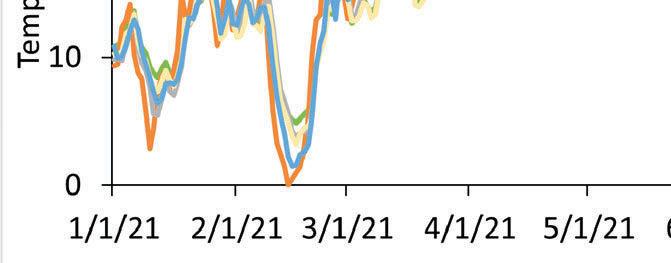


30 TPI Turf News September/October 2023
Figure 4: Daily high subsurface temperature of all landscapes.
Figure 5: Daily low subsurface temperature of all landscapes.
Figure 6: Daily average subsurface temperature of all landscapes.
Figure 7: FLIR Images of the various landscape treatments, taken during Spring and Summer 2023.
Updates - Soil Nutrient Dynamics
Soil samples were collected at each plot at the end of each season of the study, during October 2021 and October 2022, with two cores removed from the center of the plot. Each core was then split into two layers, and the top layer of soil from the two cores was combined as one final sample for analysis. All bottom layer soils were bagged together as well for each plot, so results of two different soil samples will be available for each landscape type. Table 1 shows the exact depth of the top and bottom layers of soil for each treatment and their composition.
The above information gives us the ability to monitor the subsurface status of each landscape. It seems that the top layer of SC, Xeriscape, and AT are stable three years after the installation, as the depth of sand and granite used for those landscapes has not changed much over time. The only plot that surface materials required to be refilled constantly is Mulch, which is mainly due to mulch decomposition, and the mulch materials are prone to be carried away by wind and surface runoff. With that, dark wood mulch has been reapplied to those plots every summer.
For the soil nutrient dynamic analysis, all soil samples for both years have been analyzed at the Texas A&M University soil testing lab. Data have been obtained for testing parameters including NH4-N, NO4-N, and Organic Matter, and these data are currently being statistically analyzed. The results will be available in our final report.
Sod Strength Characteristics of 24 Fine fescue Cultivars (2021-23, $20,351)
Recent genetic improvements in low-input turfgrass species now provide sod farms with options other than Kentucky bluegrass (Poa pratensis) when selecting what to plant (Braun et al., 2020). Since the selection of turfgrasses (either low- or high-input) by sod farms ultimately impacts the level of input required by those receiving sod installations (homeowners), decisions made by sod farmers and landscape contractors can have a tremendous impact on the environment and efforts to manage turfgrass sustainably. Recent survey results from Sanchez et al. (2023) show that larger businesses are the most likely client to purchase lowinput turfgrasses. Further, landscapers were more likely to purchase low-input turfgrasses, especially when availability, distance from the farm, and the drought and shade tolerance of the grass were factored into their purchase.
Data from collaborative research at Purdue University and the University of Minnesota investigating low-input sod production funded by ISDA/USDA-AMS shows promising results with fine fescue (Festuca spp.) sod production, especially with strong creeping red fescue (Festuca rubra ssp. rubra) because of its rhizome system (Braun et al., 2021a,b). Additionally, results from a previously funded experiment by The Lawn Institute (TLI) at Purdue University demonstrated that slender creeping red fescue (F. rubra ssp. littoralis) and Chewings fescue (F rubra ssp. commutata)
31 TPI Turf News September/October 2023
Treatment Top Bottom Sand-Capped Lawn (SC) 0-5 inch (0-12.7 cm) (Sand) 5-10 inch (12.7-25.4 cm) (Soil) St. Augustinegrass Lawn 0-6 inch (0-15.24 cm) (Soil) 6-12 inch (15.24-30.48 cm) (Soil) Artificial Turf (AT) 0-4 inch (0-10.16 cm) (Granite) 0-4 inch (0-10.16 cm) (Granite) Xeriscape 0-5 inch (0-12.7 cm) (Granite) 0-5 inch (0-12.7 cm) (Granite) Mulch 0-6 inch (0-15.24 cm) (Soil) 0-6 inch (0-15.24 cm) (Soil)
Table1. Depth of soil samples collected at the center of research plots.
also can produce desirable sod strength among fine fescues. Hard fescue (F. brevipila) was also tested but it had poor sod strength (Braun et al., 2022; Braun and Patton, 2022). Results from our previous experiments also demonstrate that plant genetics, and not nitrogen fertilization, have the greatest impact on sod strength.

These previous experiments consistently show that there are differences in sod strength among the fine fescue taxa (i.e., species and subspecies), but these experiments tested just a single cultivar of each species. New fine fescue cultivar releases, as well as variable cultivar performance in differing environments (NTEP, 2014, 2018), necessitate further sod strength research to continue to provide more information and options for sod producers. Therefore, the objective of this experiment was to identify the best-performing cultivars of fine fescues for sod production.
This field study was planted on 24 August 2022 at the W.H. Daniel Turfgrass Research and Diagnostic Center in West Lafayette, Indiana. Turfgrass species and cultivars included in this study are listed in Table 1. The field was irrigated frequently to promote establishment and then irrigated at ~1.0-inch [2.54 cm] wk-1 during the growing season. The plots received 2.5 lb. N/1000 sq. ft. (1.134 kg/92.903 sq. m) per year.
The photo on the right shows strong creeping red fescue sod harvested nine months after planting.
Strong creeping red fescue (StCRF)
1. Audubon
2. Boreal
3. Cardinal II
4. Chantilly
5. Marvel
6. Navigator II
7. Orbit
8. Rosecity
9. Ruddy
10. Xeric Slender creeping red fescue (SICRF)
1. Barpearl
2. Seabreeze GT
3. Seamist
4. Shoreline
Chewings Fescue (CH)
1. Bridgeport II
2. Compass II
3. Enchantment
4. Leeward
5. Radar
6. Silhouette
7. Sonar
8. SR5130
9. Woodall
Sheep Fescue (SF)
1. Blue_Hornet
Hard Fescue (HF)
1. Beacon
2. Bighorn GT
3. Hardtop
4. Jetty
5. Minimus
6. ReliantIV
7. SR3150
8. Sword II
9. Tenacious
Kentucky bluegrass (KBG)
1. Arcadia
2. Blue Note
Tall Fescue (TF)
1. Bonfire
2. Titanium II LS
3. Trending
32 TPI Turf News September/October 2023
Table1. Cultivars and species used in this experiment.
2. Blue_Mesa
3. Quatro
Plots were first harvested at 9 months after planting (MAP) on 23 May 2023 and tested with a sod tensile strength device, which provides output to measure the required work (force over distance, Newton-meters) and the peak force required to tear a piece of sod (i.e., maximum tensile load, Newtons) (Friell et al., 2016). Sod handing, turf quality, and soil moisture levels were also measured at the time of sod harvest. The average volumetric water content of the plots at sod harvest was 34 percent. Sod handling was rated on a 1 to 5 scale (1=poor, complete breakage of sod during handling, inability to transport to sod tearing device, unacceptable quality; 3=good, our suggested minimum acceptable quality for industry handling, moderate cracking of the sod may occur; and 5 = excellent, very tight, no cracking, best handling quality) (Gopinath et al., 2015).
Results from this first harvest at 9 MAP demonstrate that there are differences in sod strength among the fine fescue taxa. Strong creeping red fescue (StCRF), Slender creeping red fescue (SlCRF), and Chewings fescue (CF) performed
better than hard fescue (HF) and sheep fescue (SF) (Figure 1). The best fine fescue species performed better or similar to Kentucky bluegrass (KBG) and tall fescue (TF). Hard fescue and sheep fescue had the lowest maximum tensile load and lowest work required to tear the sod. A similar trend was evident with sod handling rating. Chewings fescue had the highest numerical sod handling quality whereas hard fescue had the lowest sod handling quality. Tall fescue performed surprisingly well compared to some of our previous experiments (Braun et al., 2021a; Braun et al., 2022).
The sod strength and sod handling were supported by ground coverage and annual bluegrass coverage data. Turfgrass species having higher sod strength and handling quality had higher turf coverage and quality and lower annual bluegrass coverage (Figure 1 and Table 2). The poor performance of hard fescue and sheep fescue was expected based on previous experiments and is due to both their slow establishment and less resistance to weed encroachment (Table 2 - see next page) and their bunch-type growth habit.
Figure 1: Sod harvest data of the turf species main effect at nine months after planting showing maximum tensile load (N, newtons) to tear sod (a); required work to tear sod (N-m, newton-meter) (b); sod handling (1 to 5 scale, 5=best, no breakage, strongest sod) (c); turf quality (1 to 9 scale, 6= acceptable quality) (d). Means within a response variable with a common letter are not significantly different according to Tukey’s HSD test ( = .05). StCRF; strong creeping red fescue; SlCRF, slender creeping red fescue; CF, chewings fescue; HF, hard fescue; SF, sheep fescue; KBG, Kentucky bluegrass; TF, tall fescue.

33 TPI Turf News September/October 2023
Note: StCRF; strong creeping red fescue; SlCRF, and slender creeping red fescue. Means within a column with a common letter are not significantly different according to Tukey’s HSD test (a = .05).
While species differences are important, we wanted to also examine differences between cultivars within a species. Responses of sod strength, sod handling, establishment, and annual bluegrass coverage among cultivars within each species are presented in Table 3. Based on these initial findings, there was little variation in sod strength or sod handling among cultivars with each species except for sod handling of hard fescue and the maximin tensile load of sheep fescue and tall fescue.
These preliminary results at 9 MAP indicate that there are differences in sod strength and handling among the fine fescue taxa (species) but less differences between cultivars. This is the first harvest of three harvests in 2023, and this TLI-funded experiment will be repeated in 2024. Afterward, two years of data and a total of six harvests will give growers confidence in selecting the best species and cultivars for fine fescue sod production.
34 TPI Turf News September/October 2023 Turfgrass Species Turfgrass Coverage (%) 11/2/2022 Annual bluegrass coverage (%) 5/5/2023 StCRF 73.9 b 8.7 b StCRF 79.6 ab 8.2 b Chewings fescue 73.7 b 9.9 b
Sheep fescue 56.7 c 37.1 a Kentucky bluegrass 71.9 ab 26.3 a Tall fescue 89.8 a 0.8 b p -value <.0001 <.0001
Table 2. Visual turfgrass coverage and annual bluegrass coverage during the establishment of turfgrass species in West Lafayette, IN. Grasses were planted on 24 August 2022.
Table 3. Effect of turfgrass species on required work to tear sod (N-m), maximum tensile load (N), sod handling, turf quality, and annual bluegrass coverage in West Lafayette, IN. Grasses were planted on 24 August 2022.
aSod handling was rated on a 1 to 5 scale (1=poor, complete breakage of sod during handling, inability to transport to sod tearing device, unacceptable quality; 3=good, our suggested minimum acceptable quality for industry handling, moderate cracking of the sod may occur; and 5 = excellent, very tight, no cracking, best handling quality).
bTurf quality was rated on a scale of 1 to 9 scale (6= acceptable quality)
cMeans within a column with a common letter or no letters are not significantly different according to Tukey’s HSD test ( = .05).
35 TPI Turf News September/October 2023 g
Irrigation Requirements and Consumer Preference for Six Diverse Landscapes in the Arid Western U.S. (2022-24,
$9,450)
Home landscapes – of which lawns often comprise 50 percent or more of the total area - provide numerous aesthetic, economic, environmental, recreational, sociological, and psychological benefits to individuals and society. However, not all landscapes are equal in the benefits they provide, and poorly designed and/or maintained landscapes can negatively affect the environment and be expensive to maintain. While only approximately 3 percent of all Colorado water is used to maintain urban landscapes, green landscapes and their irrigation (especially the lawn/ turfgrass part of landscapes) are a constant target of antiturfgrass/green landscape groups – who lobby for lawn replacement and limitations on the size of lawn area in landscape codes. Further, lawns, parks, and golf courses are the first landscape areas targeted for water restrictions or irrigation bans during drought events.
There are numerous unintended consequences of restricting or banning lawn/landscape irrigation – of which these groups and governmental agencies are unaware (or refuse to consider) when implementing restrictions on turfgrass area, turfgrass species, and when instituting irrigation bans. Providing homeowners, government agencies, and anti-turfgrass/landscape groups with factual information on irrigation requirements of lawns and other parts of green landscapes can help them make better management decisions and will better inform policymakers on the benefits of green landscapes and the relatively small amount of water needed to keep landscapes healthy. Unfortunately, information on total landscape water requirement is lacking in the western U.S. - especially measuring lawn water requirement separate from/and in contrast to the rest of the landscape (trees, perennials, shrubs). This project will document total landscape water use – but also compare the irrigation requirement of the lawn (including different turfgrass species) with the other elements of the landscape (trees, shrubs, perennials).
Six different “front yard” landscapes (each approximately 1600 square feet [148.645 square meters] in size; with 800 square feet [74.322 square meters] of lawn, and 800 square feet of mulched ornamentals) were constructed. Each landscape is identical in size but differs from the others in turfgrass type (bluegrass, tall fescue, buffalograss), landscape plant species (trees, shrubs, perennials, groundcovers), or level of irrigation technology. Lawn area size is identical in each “yard” – as is the planting bed size. Each landscape is irrigated independently of the others – according to plant species’ needs and to provide acceptable/desirable plant vigor and aesthetics. The lawns and ornamental beds in
each landscape are metered separately to allow comparisons within and between the individual yards. Wireless soil moisture sensors (developed by and manufactured at Colorado State University) are distributed throughout the landscapes, having the potential to drive irrigation controllers for each landscape and their respective lawn and landscape components. Soil quality development over time under lawns and ornamental beds is being monitored using CO2 respiration/burst, soil amino-N, and aggregate stability. Visitors are encouraged to complete short surveys on preference for landscape type, enhanced understanding of the value of green landscapes and lawns, and knowledge gained during their visit to the gardens. Robotic mowing of the lawn areas is being demonstrated. Construction and maintenance costs of each landscape are provided to visitors, along with plant lists. An unusual – and perhaps controversial - aspect of this study is that one of the lawns is synthetic turf. The goal of including a synthetic lawn in the study is to document the true costs of installing and maintaining a synthetic lawn, and to demonstrate that synthetic lawns do not provide the environmental benefits/services that natural lawns do, including excessive heating effects of landscapes and potential negative impacts on soil health beneath the synthetic surface –and to demonstrate that synthetic lawns require considerable care to maintain their quality.
Investigating Environmental Implications of Reclaimed Water Use for Turfgrass Areas
(2022-23, $19,780)
Residential water use makes up 61 percent of the public supply category for water use, with residential landscaping using over 70 percent of the total residential water use volume. Reclaimed water is defined as a “treated domestic wastewater effluent approved for use as an alternative supply of potable water” and acts as a cheaper, more available, and nutrient-laden alternative to potable irrigation sources. It has yet to be determined if these nutrients and constituents impose a leaching pressure on fertilizers already being applied to turfgrasses. Changing the water source will not only affect the grass itself but might also have an impact on plant-associated microbial communities.
Materials and Methods
A two-year field study is being conducted at the University of Florida’s Fort Lauderdale Research and Education Center (FLREC) in Davie, FL, to evaluate the effects of reclaimed water, obtained from a wastewater plant adjacent to the study site, and different N rates on ‘CitraBlue’ St. Augustinegrass performance and nitrate (NO3-N) ammonium (NH4-N) and ortho P leaching. Fertilization is being applied every other month using a 30-0-10 Polyon controlled-release fertilizer (Harrell’s, 90 percent slow-
36 TPI Turf News September/October 2023
release N) at a rate of 296 kg (652.568 lb.) N ha-1 yr -1 and is being tested against an untreated control.
St. Augustinegrass rhizosphere soil samples were collected for the identification of bacterial and fungal communities. Samples were first collected on 08 September 2022 before the treatment of reclaimed water and the nitrogen fertilizers. The next sampling was done after one month of treatment on 06 October 2022, followed by the quarterly samplings on 17 January 2023 and 04 May 2023. Two intact cores (2.5 cm [.984 in] diameter x 10 cm [3.937 in] height), representing two biological replicates from two different locations, were sampled and a total of 48 soil samples (12 samples per each sampling period) were obtained from the different plots. All samples were stored in Ziploc bags and transported to the laboratory and processed immediately (within 1 hour) for DNA extraction.
DNA was extracted using the DNeasy PowerSoil Kit (Qiagen, Valencia, CA, USA) with a slight modification of the manufacturer’s protocol: the bead beating step after the addition of a buffer C1 was done with a FastPrep-24 bead beater (MP Biomedicals LLC., Solon, OH, USA) at a speed of 6 m/s (19.685 ft/s) for one minute. DNA extracts were quantified with a NanoDrop ND-1000 Spectrophotometer (Thermos Fisher Scientific, Waltham, MA, USA) and diluted to 20 ng μL-1 with TE (pH 8.0) and used as a template for PCR. The V4 hypervariable region of 16S rRNA gene and the fungal internal transcribed spacer 2 (ITS2) region will be amplified with universal primers 515F (5 -GTGCCAGCMGCCGCGGTAA-3 ) and 806R (5 - GGACTACHVGGGTWTCTAAT-3 ), and ITS3F (5 -GCATCGATGAAGAACGCAGC-3 ) and ITS4R (5 -TCCTCCGCTTATTGATATGC-3 ), respectively, at Novogene (Novogene Co. Ltd., Beijing, China). Paired-end (PE) library sequencing (PE 2 x 250 bp) will be performed using an Illumina NovaSeq platform (Illumina, Inc., San Diego, CA, USA).
Preliminary Results
During the first winter of the study, the use of reclaimed water deemed supplemental fertilization unnecessary. However, the environmental impact of the use of reclaimed water is still being evaluated as leachate is being collected weekly, but currently being stored at -80 degrees C (-112 degrees F) waiting for nutrient analysis. Microbial DNA extraction from soil samples was completed (average of 48 samples, 331 ± 75 ng/μL) and the extracted DNAs were shipped out for sequencing on June 28, 2023, for microbial community analysis. The sequencing will be done within the next month and the sequence analysis will be done soon after. The study will be repeated until August 2024.
Stress Response Characteristics
Facilitated by Endophytes in Commercially Available Perennial Ryegrass, Tall Fescue, and Fine Fescue Cultivars in Oregon (2022-23, $20,000)
Endophytes are natural fungal symbionts of many important turfgrass species, including perennial ryegrass, tall fescue, and fine fescues. Endophytes provide several benefits to turfgrass, such as mediated disease resistance, drought tolerance, and insect predation tolerance. For instance, endophyte-mediated disease resistance to dollar spot and red thread diseases has been documented in strong creeping red fescues, hard fescues, and Chewings fescues.
However, a current, comprehensive record of endophyte presence in commercially available cool-season turfgrass cultivars is not available. The last time a comprehensive evaluation of commercially available endophyte populations was conducted was on the National Turfgrass Evaluation Program (NTEP) - 1998 Fine Fescue Trial, 2001 Tall Fescue Trial, and 2010 Perennial Ryegrass Trial. Endophyte persistence from seed to established turfgrass can be difficult. Endophytes will often parish during the process of seed harvest, storage, distribution, and plant establishment. Turfgrass stress and environmental conditions, once the plants are established, can also diminish endophyte populations. An assessment of endophyte after turfgrass stand establishment would be applicable to the end user to show which variety-endophyte combinations are most viable and easy to maintain. Finally, comparing endophyte status and populations to available turfgrass data (germination/establishment rates, color, quality, drought tolerance, and traffic tolerance) collected from a large number of commercially available turfgrass cultivars would also be advantageous in determining which endophytes end users can utilize to improve turfgrass management.
The objectives of this study are to identify endophyte presence and type in large-scale fine fescue and perennial ryegrass cultivar studies at Oregon State University, Corvallis, Oregon, and to correlate endophyte presence with response variable (establishment, visual quality, visual color, drought tolerance, and traffic tolerance) collected from these cultivar studies.
37 TPI Turf News September/October 2023
Preliminary Findings:
Fine Fescue: Fall 2022, we sampled seeds and plants from the Fine Fescue A-LIST trial. In both cases, samples from all 25 cultivars were sampled. Seeds (125 individual seeds per cultivar) that were saved at planting, were placed in a 4-degree C (39.2-degree F) refrigerator until processing. For processing, three replicates of 25 seeds each were extracted using the same nucleic acid extraction method as above (Dellaporta et al. 1983). The Vikuk et al. (2019) primers were used on the seed extracts. Specifically, these primers are used to detect the presence of Epichloë endophytes, and if present, their alkaloid patterns that are associated with toxicity to pests.
Results indicate that 48 percent of cultivars in the A-LIST trial have an endophyte infection (Table 1) and all positive samples had detectable ergot alkaloid gene regions. Samples with detectable peramines and indole diterpenes were less prevalent, and no samples had detectable loline gene regions. These alkaloid profiles will be monitored in plant samples over the life of the A-LIST trial. The first sample of plant tissue was also conducted (5 samples from 3 reps, 15 samples per cultivar as for perennial ryegrass), plant samples have yet to be processed for PCR but will be completed this summer. Further analyses comparing turfgrass quality and endophyte status are underway.
A Presence (+) or absence (-) of the TEF1a housekeeping gene, indicating an endophyte infection of seed; B Presence or absence of one of the four major alkaloid producing genes in Epichloë endophytes that are toxic to pests; C Presence (+) or absence (-) determined after three replications of PCR (25 seeds in each extraction); D Average incidence expressed as a percentage of positive cultivars out of the total number of cultivars for each gene region evaluated in the multiplex PCR reaction.
38 TPI Turf News September/October 2023
Sample Cultivar Fine Fescue Type Seed Endophyte StatusA Endophyte Alkaloid PresenceB Peramine Loline Ergot Alkaloid Indole Diterpene 1 Blue Hornet SheepC - - -2 Jetty Hard + + - + + 3 Cardinal II Strong Creeping - - - -4 Compass II Chewings + + - + + 5 PPG-FRC 130 Chewings + + - +6 PPG-FRC 127 Chewings + + - + + 7 PPG-FFR 127 Strong Creeping + + - + -
- - - - -
PPG-FFR
+ - - + + 10 PPG-FFR 132 Strong Creeping - - - -11 Conductor Chewings + + - + + 12 Clarinet Hard + + - + + 13 Chorus Strong Creeping + + - +14 Woodall Chewings + + - + + 15 Marvel Strong Creeping - - - -16 Minimus Hard - - - -17 DLFPS-FRR3128 Strong Creeping - - - -18 DLFPS-FL-
- -
- -
- - -
-
Chewings
- -
Hard
- - - -
Leeward Chewings
+ - + + 25 DLFPS-FRC3105 Chewings + + - + + Average Incidence (%)D 48 44 0 48 36
8 PPG-FL 128 Hard
9
134 Strong Creeping
3104 Hard - - -
19 Ruddy Strong Creeping - - -
20 Quatro Sheep - -
21 Chantilly Strong Creeping - - - -
22 SR 5130
- - -
23 Leonidas
-
24
+
Table 1. Multiplex PCR results for endophyte presence and alkaloid profile of seeds of each cultivar in the A-LIST fine fescue trial.
Perennial Ryegrass: Spring 2022, plants were sampled from the 2016 Perennial Ryegrass NTEP trial. We sampled 51 cultivars – the 6 standard cultivars and 45 cultivars that have been made commercially available – from the trial. For each cultivar, 5 random samples per plot of 5 tillers each were collected from each replicate (5 samples from 3 reps, 15 samples per cultivar). Collected samples were maintained at -80 degrees C (-112 degrees F) until processing. All samples from the 51 cultivars were extracted for total nucleic acids with the method described by Dellaporta et al. (1983). Multiplex polymerase chain reaction (PCR) developed by Vikuk et al. 2019 was used to determine endophyte presence and alkaloid profile. Endophytes were present in 61 percent of perennial ryegrass cultivars evaluated from the NTEP trial (Figure 1). Moreover, 29.4 percent of all cultivars had a high rate of infection, with 80-100 percent of evaluated tillers infected (Figure 2). The majority of endophyte-positive cultivars contained an ergot alkaloid gene region (EAS), peramine (PER), and indole-diterpene (IDT). However, only 12.9 percent of positive cultivars had a detectable loline gene region (Figure 3). Further analyses comparing turfgrass quality and endophyte status are underway. Researchers will continue to analyze endophyte persistence using fine fescue tissue samples and to compare endophyte presence in fine fescue and perennial ryegrass to turf quality ratings to determine if correlations are present.











39 TPI Turf News September/October 2023
Figure 1: Endophyte infection status of 51 perennial ryegrass cultivars in the NTEP trial.
Figure 2: Percentage of perennial ryegrass cultivars with different ranges of infection rates.
Figure 3: Endophyte-positive perennial ryegrass cultivars containing genes in alkaloid biosynthesis.
Remote Detection and Precision Control of Bermudagrass in Zoysiagrass Sod Production Fields
(2023-24, $11,000)
NEW PROJECT FOR 2023
Bermudagrass (Cynodon dactylon) and zoysiagrass (Zoysia spp.) are desirable turfgrasses vegetatively propagated as turfgrass sod. Pure stands of a single species are desired, but bermudagrass easily contaminates zoysiagrass fields via vegetative and seeded propagation. Bermudagrass is extremely competitive and once established can be hard to eradicate.
Spot spraying areas containing exclusively bermudagrass may mitigate zoysiagrass injury and allow for higher, more lethal herbicide rates to be applied compared with broadcast applications. Reduced treatment with spotspraying reduces pesticide use, costs, and potential nontarget effects. Traditional methods for spot spraying can be labor and time intensive. Bermudagrass is visually distinct from zoysiagrass, especially when covered in earlymorning dew/guttation. However, aerial imagery may be a faster and more precise alternative to visual identification of bermudagrass within large zoysiagrass stands, thus permitting precision spray application for its control.
Previous researchers have evaluated hyperspectral reflectance for identification of bermudagrass, St. Augustinegrass, centipedegrass, and zoysiagrass and were successful in identifying spectral wavelengths for turfgrass and weed classification. The varied canopy architecture of zoysiagrass and bermudagrass impacts the spectral reflectance and absorbance of the two species and may be beneficial in identification using a multispectral sensor. Previous research has focused on the identification of common desirable warm-season turfgrasses and a few weeds. Unpublished research conducted at Mississippi State University suggests that turfgrass species may be differentiated with heat signatures using thermal imagery, presumably due to canopy architecture and dew/guttation retention.
In addition to varied canopy architecture, dew retention may be another identifying feature between species that can be evaluated using a camera or multispectral sensor mounted on an unmanned aerial system (UAS). The volume of dew on St. Augustinegrass and bermudagrass stands has been measured as 12.3 gal/A to 20.5 gal/A (46.561 liter/.405 hectare to 77.601 liter/.405 hectare), respectively and other researchers have found that reflectance values are affected by species, surface wetness, and sun elevation.
Data collection from unmanned aerial systems can be used to create maps for precision-guided pesticide applications. For example, previous researchers have mapped spring dead spot infestations on golf course fairways from aerial imagery to create a site-specific fungicide treatment plan to make targeted applications and reduce overall fungicide usage. In other turfgrass systems, broadleaf and grassy weeds have been identified using machine learning techniques for potential use in spot spraying.

Descriptive Summary of Research Plan
Experiment 1: Determining data acquisition conditions for identifying bermudagrass in zoysiagrass. The effects of sensor, sensor angle, sun angle, and height above ground level on species delineation will be investigated with a DJI Matrice 200 M2 UAS. A Micasense Red-Edge MX sensor, a DJI Zenmuse X5S camera, and thermal sensor will be evaluated, to determine if multispectral reflectance data, red-green-blue digital values, or infrared reflectance are acceptable for species differentiation. The Micasense camera is mounted nadir (i.e., directionally imaging downward), but the sensor angle relative to the ground can be evaluated for the Zenmuse camera. The sun angle relates to the time of day and the amount of dew present, so specific sampling times throughout the morning from sunrise to midday will be tested. The effect of height above ground level will also be tested, at 50, 100, 150, and 200 feet (15.24, 30.48, 45.72, and 60.96 meters) above ground level. Imagery from individual flights with various sensors, sensor angles, sun angles, and heights above ground level will be orthomosaiced in Pix4D Mapper and analyzed in ArcGIS Pro. Standard vegetation indexes and scenariospecific equations, ratioing reflectance band values, and RGB digital values will be evaluated. Workflow-identified patches of bermudagrass will be compared with groundvalidated patches of bermudagrass to test the accuracy of the workflow.
40 TPI Turf News September/October 2023
Drone for aerial imagery acquisition
Experiment 2: Evaluating precision-guided-spraying for bermudagrass control. Geo-referenced locations identified as containing bermudagrass in Experiment 1, will be loaded into a precision guided sprayer such as a John Deere ProGatorTM GPS PrecisionSprayer to make application(s) to control bermudagrass. Injury to surrounding turf will be visually assessed by rating the phytotoxicity/necrosis as well as the distance from bermudagrass area. Aerial imagery will be collected at the time of application and bi-weekly for one month following application, and monthly for months two through 12 (or as necessary) to assess injury, control, and regrowth.
Potential Benefits and Deliverables
This is a multi-disciplinary project, integrating fairly rudimentary to very advanced technology. Developing this workflow will have implications far beyond bermudagrass control in zoysiagrass fields, though initial results will be immediately informative for stakeholders. Results may reveal possibilities for other difficult-to-control weeds, including those of cool-season scenarios.

Research results will be presented at national and international scientific meetings and Extension programs (ex. MSU Field Day, Deep South Turf Expo, etc.) within the state and region. Stakeholders will be engaged throughout the process due to the “on-farm” requirements of the research (ex. Field demonstrations, Mid-South Turfgrass Council, etc.). Hands-on training of stakeholder and industry partners (ex. equipment manufacturers and data processors) will be conducted when appropriate.
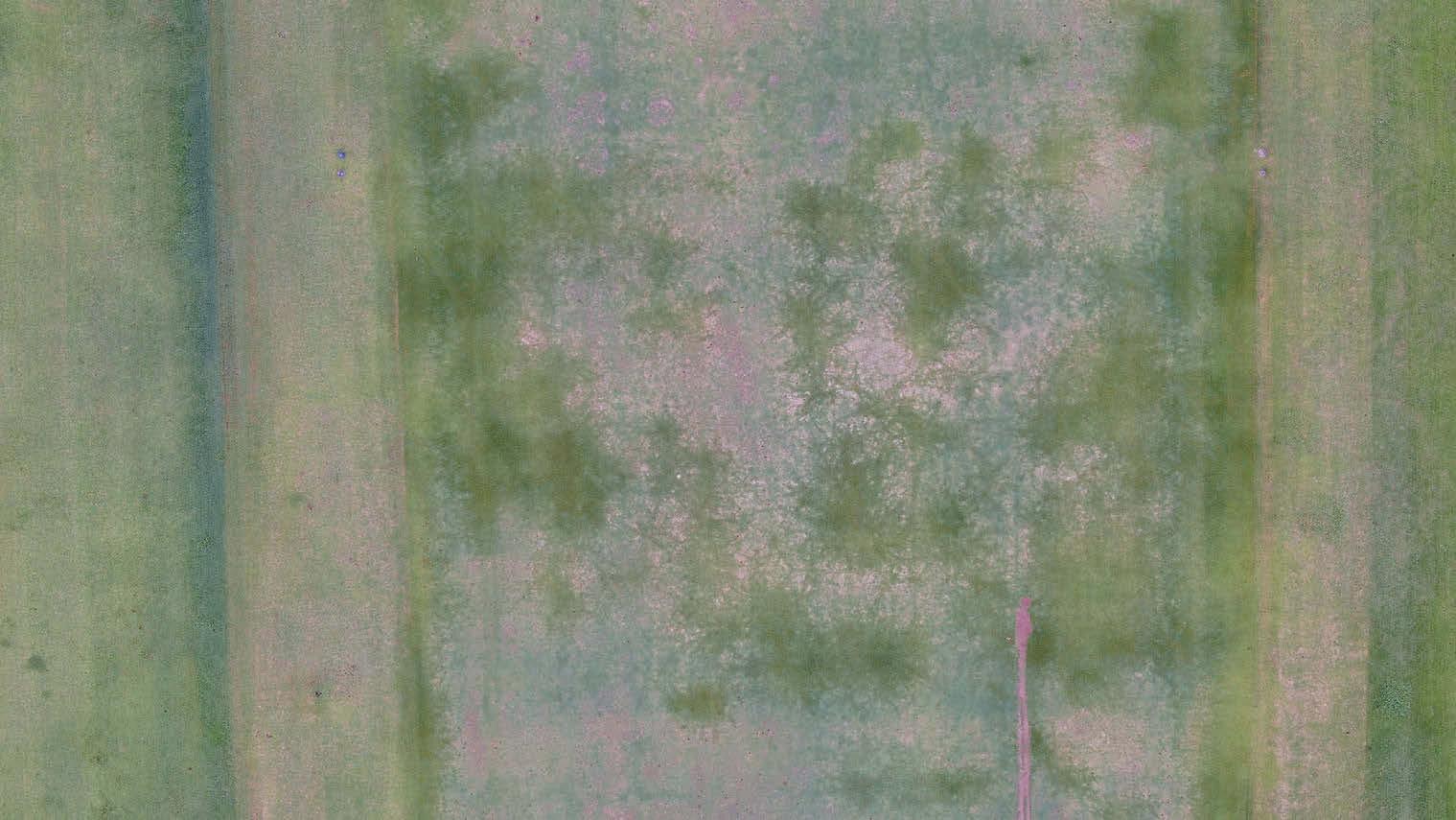
41 TPI Turf News September/October 2023
RBG image of dew patterns in bermudagrass contaminated with zoysiagrass.
Binary photo of dew patterns in bermudagrass contaminated with zoysiagrass.
Quantifying the Influence of the Aggressiveness and Ratio of Kentucky bluegrass on Sod Strength
of Tall fescue/Kentucky bluegrass Seed Mixtures
(2023-25, $31,251)
NEW PROJECT FOR 2023
The sod industr y is a major component of the turfgrass industry and the demand for sod will likely continue to increase with new construction and investment in repairing existing infrastructure in our country. Utilizing mixtures of tall fescue (TF) and Kentucky bluegrass (KBG) for sports fields, lawns, and other turf areas has been common in the past for turf managers and sod producers in the U.S. because it can provide genetic diversity and improved tolerance to environmental stresses compared to a single species. Various cultural practices can affect the longterm composition of TF and KBG mixtures. However, this may be more of a concern for turf managers over time and less of a concern for sod producers because it is out of their control after harvest and delivery. While Kentucky bluegrass (KBG) is still the predominant coolseason sod producer because of its excellent sod-forming characteristics from its rhizome system, tall fescue (TF) is becoming increasingly popular as a lawn species of choice because of its excellent heat and drought tolerance compared to Kentucky bluegrass. Tall fescue can have short rhizomes, but it generally has a bunch-type growth habit; therefore, its sod is too weak for commercial production without the use of netting or mixing with KBG. When mixing TF and KBG, a TF:KBG ratio of 90:10, 95:5, or 97:3 (w/w) is typically recommended and utilized in the sod production industry today. To meet the demands of the current sod market, sod producers growing TF:KBG mixtures may not wish to include higher ratios of KBG at 5 to 10 percent and instead only include <5 percent KBG and utilize netting; however, installation of netting after seeding is another cost and adds additional challenges.
For sod production, the 97:3 to 90:10 TF:KBG seed mixture ratios include just enough KBG to help hold the TF:KBG sod together during harvest; however, different optimal ratios likely depend on the aggressiveness of the KBG cultivar and classification type. Sod producers need more information on not only aggressiveness differences among KBG types/cultivars, but also on optimal ratios depending on the aggressiveness of KBG.
Additionally, the sod strength and handling of various TF and KBG seed mixture ratios requires further research to compare it to other common sod production practices of tall fescue, such as netting at seeding or harvest, recently released rhizomatous tall fescue (RTF) varieties, and the influence of
N fertilization amounts on TF:KBG ratios. However, these additional topics will need to be addressed in the future after the aforementioned topics on KBG aggressive types and ratios are investigated. Since a goal of sod production is to generate a harvestable crop in the shortest time with minimal resources, other TF sod planting options need to be explored. The current research project will provide sod producers with more information on tall fescue sod production to meet market demands and potentially help improve production time with reduced inputs.
The objectives of the two experiments in this research project are to quantify the TF:KBG sod strength differences among Kentucky bluegrass cultivars with known aggressiveness differences (Experiment 1) and to determine optimal TF:KBG seed mixture ratios based on KBG aggressiveness for high-quality sod production (Experiment 2).
Descriptive Summary of Research Plan
Sod harvest data for these two experiments will be collected at Kansas State University and repeated over time.
Experiment 1 is a one-way treatment structure consisting of 10 treatments arranged in a randomized, completeblock design with four complete blocks. The treatments consist of nine KBG cultivars with a classification of either low, medium, or high aggressiveness of growth, and each included in a 95:5 (w/w) TF:KBG mixture ratio and one 100 percent TF blend of turf-type tall fescue; more specifically treatments include: a) High 1 KBG; b) High 2; c) High 3; d) Medium 1; e) Medium 2; f) Medium 3; g) Low 1; h) Low 2; i) Low 3; and j) 100 percent blend of tall fescue [100:0 (w/w) TF:KBG].
Experiment 2 is a 4 (TF:KBG ratio) x 3 (KBG aggressive type) factorial treatment structure in a randomized, complete-block design with four complete blocks. The TF:KBG ratio factor consists of 100:0 (w/w), 97:3, 95:5, and 90:10, and the KBG aggressive type includes low, medium, or high aggressive growth within each ratio.
In both experiments, all respective treatments will receive the same rate of starter fertilizer at planting and the same annual N rate of 3.0 lb. N/1000 square ft. (1.361 kg N/92.903 square m) per year. Sod harvest data in both experiments will occur at 9, 10, and 12 months after planting (MAP) in 2023 and 2024. These timings were selected based on standard industry practices for TF:KBG sod from discussions with sod producers and past sod experiments I’ve conducted at Purdue University. Data collection at each sod harvest timing will include measurements of sod tensile strength and a categorical characterization of sod handling as well as turfgrass quality. In addition, species composition per plot will be recorded monthly starting at 8 months after planting using grid counts. In addition, brown patch (Rhizoctonia
42 TPI Turf News September/October 2023
solani AG 2-2III) will be rated during outbreaks to determine if KBG types or ratios influence severity. Kansas State University does not currently have a tensile strength device, which provides a critical piece of information about sod strength; however, the PI has experience with a sod tensile device from numerous sod research trials funded by USDA-AMS and The Lawn Institute and plans to attain one with funding received for this project.
Potential Benefits and Deliverables
Results from this experiment will be showcased during turfgrass field days and annual turfgrass conferences, discussed at international scientific meetings, and also discussed at a future TPI meeting. A review of the project results will be published in Turf News. Further, results will be distributed via social media (Twitter, Facebook, etc.) and be shared with peers through an open-access, refereed publication and in scientific presentations.

Call for Research Proposals
The Lawn Institute will continue to release its annual Call for Research Proposals each August and work hard to fund research that is impactful to TPI members. If you have questions or comments about this process; or about specific research interests, please contact Dr. Casey Reynolds at creynolds@TurfGrassSod.org




43 TPI Turf News September/October 2023
Casey Reynolds, PhD, is executive director of Turfgrass Producers International. All photos and graphics for this article have been supplied by the research team of the research project in which they appear.
Emmanuel Nwachukwu, MS graduate student at Kansas State University, takes digital images with a modified light box to assess green vegetation cover during establishment in May 2023 at the Rocky Ford Turfgrass Research Center at Kansas State University in Manhattan, KS.
Experiment site investigating the influence of the aggressiveness and ratio of Kentucky bluegrass on sod strength of tall fescue-Kentucky bluegrass seed mixtures and other sod-related experiments.
Sod being harvested to quantify the sod strength and handling differences among Kentucky bluegrass cultivars with known aggressiveness when mixed with tall fescue.
Have you seen one of our service trucks in your area?
Our expanding fleet of Magnum Service Trucks is equipped with all the necessary parts to repair your Magnum Equipment. Our skilled Technicians are traveling nationwide, making farm visits in your area. Let us know if you’d like to be added to our service schedule. Experience the convenience of having a big red Magnum Service Truck arrive at your farm, ensuring your equipment operates at its best. Contact us today for a Technician visit, and your equipment will thank you for the improved performance!




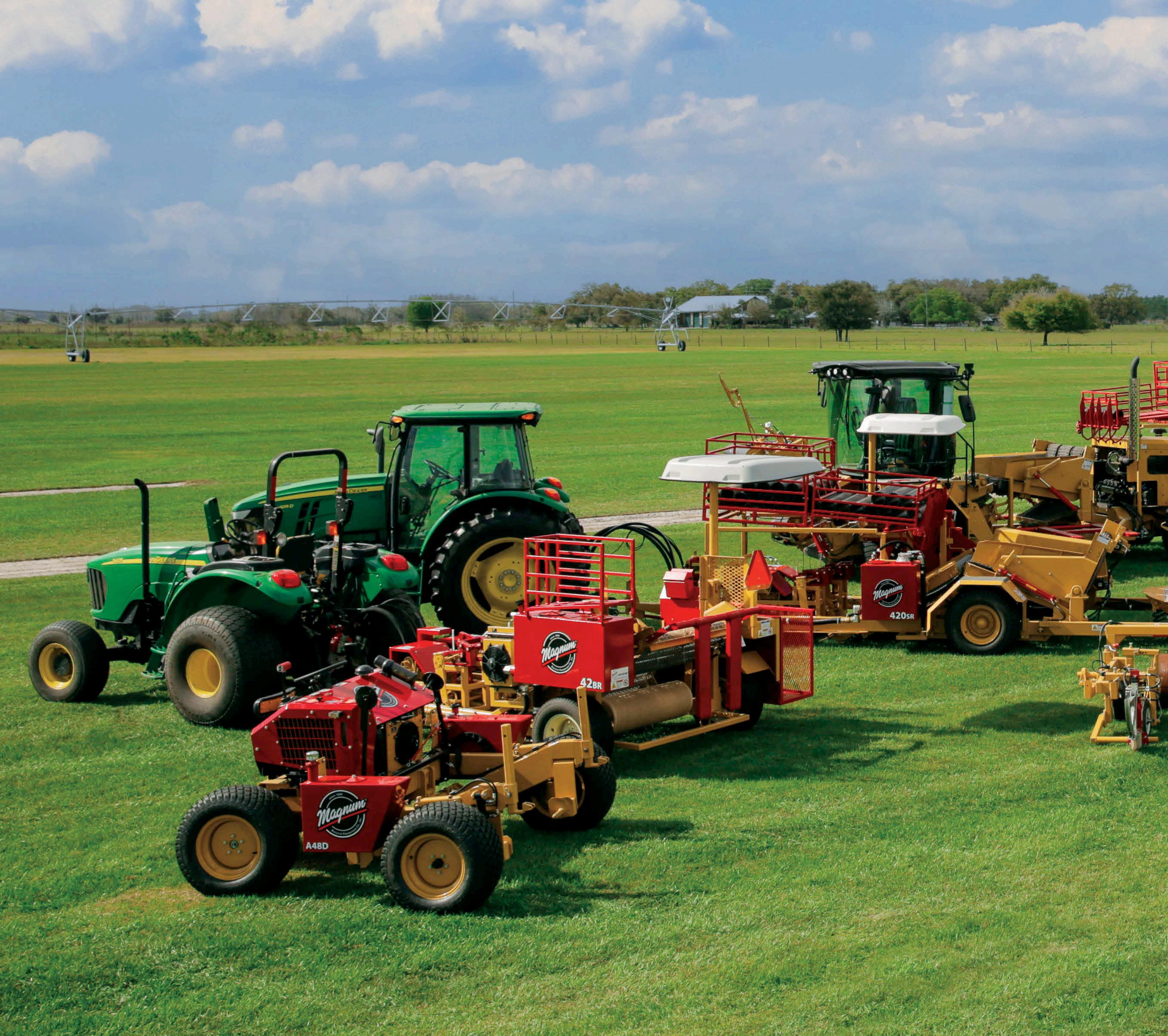







Phone: 1 (800) 330-0857 | 1 (913) 783-4600 Email: info@magnumenp.com | Website: www.magnumenp.com INNOVATION YOU COUNT ON QUALITY YOU DEPEND ON SERVICE YOU RELY ON
ROOTED IN RESEARCH
THE BIG THREE CULTURAL
HOW LOW CAN YOU GO?
By Cale A. Bigelow, PhD
Overall, the Midwest’s prevailing weather for the 2023 growing season has been atypical. Most of fall 2022 was very dry, and winter was generally mild (except for a short, severe, arctic blast right at Christmas). Spring green-up, March through May 2023, was again very dry (there was very little moisture deep in the soil profile and the regional drought monitor map reflected this fact) and then, except for the last two weeks of July, the weather has been comparatively mild for summer (very few 90+ degree days). This has meant that anyone establishing cool-season grasses had challenges. Further, anyone trying to cultivate or establish warm-season grasses, such as bermudagrass or zoysiagrass, also had challenges. Both sustained soil and night-time temperatures have been suboptimal for growth. This created numerous challenges such as very slow spring green-up, poor vigor in trafficked areas, and extremely slow lateral spreading/recovery. The lack of soil heat is out of most turf manager's control and remember you can’t fertilize your way out of suboptimal temperatures. All in all, it’s another practical illustration of what the late great Dr. A.J. Powell would often say; “In the transition zone—it’s a place where we can grow all grasses equally poor.” Having said that, I again want to highlight some of the research literature addressing “The BIG Three” primary cultural practices (mowing, feeding, and supplemental irrigation).
The question: “How Low Can You Go?” or in other words: What are the economic minimums for mowing, fertilizing, and irrigating turfgrass?
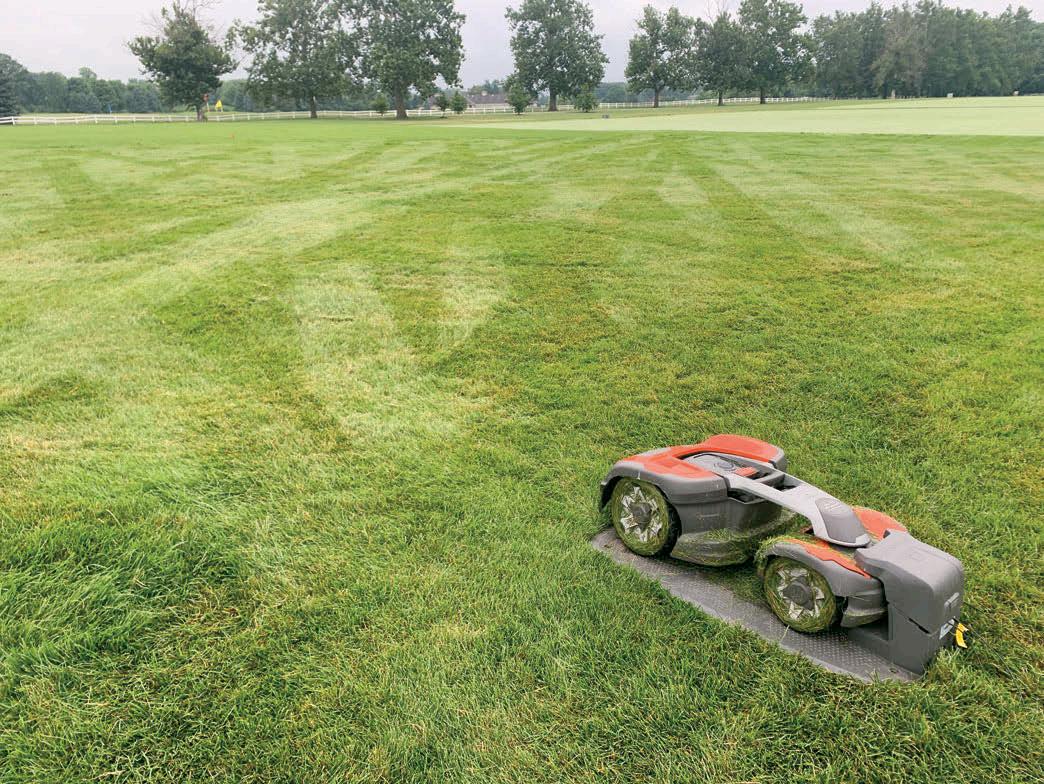
When I say, “How low can you go?” I am not talking about dancing beneath the Limbo stick, but rather where are the low ends of maintenance inputs during an emergency of suddenly scarce resource inputs? But first some historical context. During the initial peak of the pandemic and global lockdown in 2020, there were numerous financial scenarios
PRACTICES—
being played out regarding resource input allocations across all industries. This was very much heightened where public funds and national/local tax revenues were in question. As difficult projected budgetary decisions were being discussed, amenities like the maintenance of parks, sports fields, large expanses of lawns, etc. became one possible place to quickly reduce public expenses. Since turfgrass and landscape areas are not food, fiber, or fuel (e.g., nonessential) this was a natural target for reducing expenses.
In response to these looming questions, a national group of my research colleagues took time to generate fact-based information to remind the general public about the benefits of greenspace/turfgrass (especially the mental health benefits of being outside in maintained landscapes during something as isolating as a pandemic) and ultimately help guide discussions on what is minimally required to maintain a wide range of turfgrass areas.
This group published a pair of papers in the journal Agricultural and Environmental Letters. The first, “A justification for continued management of turfgrass during economic contraction,” set the stage for why we should continue maintaining many of the existing turfgrass areas. The second,

46 TPI Turf News September/October 2023
Robotic mowers may potentially reduce mowing inputs.
“Estimating economic minimums of mowing, fertilizing, and irrigating turfgrass,” provided some nuts and bolts of very generalized costs regarding mowing, feeding, and supplemental irrigation across many different geographic regions.

In the first paper, they outlined and justified many reasons that properly maintained turfgrass and landscape areas are environmental assets that contribute in multiple ways to ecosystem services (e.g., producing oxygen, mitigating runoff/ sediment loss, increasing property values, cooling temperatures in the concrete jungle, providing wildlife habitat, etc.). Further, they outlined the importance of greenspaces on human mental health and social well-being. Again, making the case for the value of urban landscapes and continuing to maintain these areas. The authors ultimately painted a cautionary tale for policymakers and concluded that “In the absence of allocable resources, these greenspaces will deteriorate, leading to concomitant reductions in aesthetics, function, and recreational quality.” In short, completely stopping maintenance would have long-term negative impacts for both the vegetation, community health and those that use these areas.

In the second paper, the authors made some educated assumptions about the cost of minimum maintenance for a spectrum of turfgrass use areas ranging from high intensity (e.g., golf putting greens) to low intensity (parks, cemeteries, etc.). They outlined that, with turfgrass areas, it is indeed difficult to quantify the economic benefits, since these areas are unlike other agricultural/plant commodities in that there is no profit to be gained by maximizing yield using minimum input costs. Nonetheless, the authors addressed the “BIG THREE,” mowing, feeding, and supplemental irrigation.
Of course, mowing always is the focus of any turfgrass, as the critical definition of a turf area is “a covering of mowed vegetation.” Within mowing there are multiple possible areas for costs. These range from cutting height, frequency, clipping collection, and labor, fuel, and equipment costs, as well as the specific species/cultivar and use area, and the list goes on and on. As has been well documented, mowing more frequently results in higher energy requirements, greater equipment emissions, and increased labor/fuel costs. Thus, it is important to establish standards (height of cut, frequency, etc.) that balance functional needs, plant health, and optimized growth rates. For a cool-season, high-cut sports or lawn/park they set the mowing heights at 2 and 4 inches (5.08 and 10.16 centimeters), respectively, with mowing once weekly using a large acreage production mower and the U.S. federal minimum wage of $7.25 per hour. Thus, they calculated that the monthly cost per acre (.405 hectare) would be roughly $11. What is exciting for the future is every year the potential for robotic mower equipment to aid in this all-important maintenance input and reduce overall costs becomes more of a reality.
In addition to mowing, the authors also evaluated the nutritional and supplemental irrigation need minimums. Again, there are numerous facets to these two inputs across the geographical United States. For nutritional inputs, the authors focused on the fact that nitrogen would be likely the most limiting macronutrient for mature, established turfgrass areas. Thus, the most economical nitrogen source would be urea or in some cases ammonium sulfate. They calculated that the fertilizer inputs (not including labor, equipment, etc.) based on turfgrass growth potential would range from $95 to $224 per acre (.405 hectare).
Lastly, they looked at supplemental irrigation needs, which had the widest variation in cost due to so many factors in the different geographic regions. Obviously, water either through rainfall or irrigation is essential to the survival of any organism, animal or plant. These costs ranged from $295 per acre (.405 hectare) in a wet location like Vancouver, WA, to more than $3,600 per acre (.405 hectare) in Albuquerque, New Mexico.
In conclusion, this pair of papers is helpful in many ways. First, there will be another period of resource limitations for turfgrass areas. Second, there will always be questions related to sustainable management or economic operational efficiencies, especially when it comes to questions from policymakers in municipal roles. In other words, “How low can you go?” is a complex question with numerous “It depends” factors. Thus, the fact that we as a research community have at the very least tried to put some general values on turfgrass maintenance inputs to maintain various turfgrass areas at a minimally viable level for emergencies is a helpful place to begin discussions. The fine print, however, is what are “minimum expectations?” as these will vary widely with respect to turfgrass use, aesthetic expectations, and quality. Until next time.
47 TPI Turf News September/October 2023
Cale Bigelow, PhD, is a professor of Turfgrass Science and Ecology in the Department of Horticulture and Landscape Architecture at Purdue University in Indiana. Mike Fidanza, PhD, is a professor of Plant and Soil Science at Pennsylvania State University, Berks Campus. They are teaming to provide a Rooted in Research article for each issue of Turf News Photos courtesy of Cale Bigelow, PhD.
Supplemental irrigation is a widely variable input cost but in cool-humid locations may be necessary for turfgrass areas receiving moderate to highintensity traffic for establishment or recovery vigor.
NATIONAL PESTICIDE OFFICIALS VISIT MCCURDY SOD FARMS

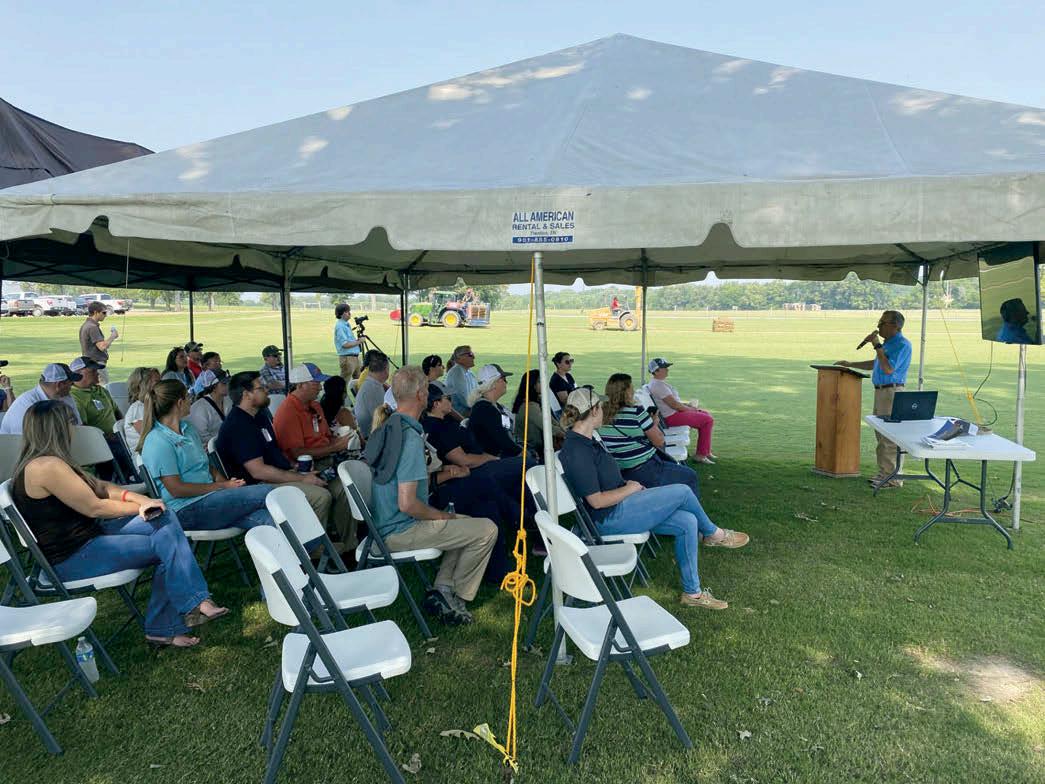
As reported in TPI’s Industry Harvest, the State Federal Insecticide, Fungicide, and Rodenticide Act (FIFRA) Issues Research and Evaluation Group (SFIREG) was in West Tennessee from June 5-7, 2023, to tour farms and discuss pesticide issues relevant to U.S. farmers. As part of their conference, they spent the morning of June 6th on TPI President Bob McCurdy’s sod farm in Dyer, TN, where Bob McCurdy and TPI Executive Director Dr. Casey Reynolds shared information about the sod farming industry.
Thanks to Kim Brown, Extension specialist at the University of Tennessee Institute of Agriculture (UTIA) and lead organizer of the event for organizing this tour. You can read more about the event, as reported by UTIA, below.

National Pesticide Officials Visit UTIA for Three-Day Conference
You may not think about the registration, distribution, sale, and use of pesticide products that help control insects, weeds, and diseases, but a lot of people in state and federal government do. They meet annually to discuss developments that can affect your health daily. From June 5-7, 2023, the State Federal Insecticide, Fungicide, and Rodenticide Act (FIFRA) Issues Research and Evaluation Group (SFIREG) hosted their national annual in-person meeting at the University of Tennessee’s West Tennessee AgResearch and Education Center in Jackson, TN. This was the first time the meeting has been hosted outside of Washington DC.
“With multiple types of row crop agriculture in the area, West Tennessee is the perfect location to discuss ongoing developments in pesticide regulation and application,” said Kim Brown. “We were honored to host the SFIREG conference, and I know participants were able to attend the annual conference at a beautiful location at the forefront of pesticide regulation discussions, as well as witness firsthand what pesticide application in the Mid-South is all about.”
The meeting featured reports and presentations from numerous pesticide research and regulation organizations from across the country. Represented groups included the Association of American Pesticide Control Officials (AAPCO), the National Association of State Departments of Agriculture (NASDA), the Association of Structural Pest Control Regulatory Officials (ASPCRO), the Tribal Pesticide Program Council (TPPC), the Association of American Pesticide Safety Educators (AAPSE), and the Certification and Training Assessment Group (CTAG), in addition to all ten Environmental Protection Agency (EPA) regions.
48 TPI Turf News September/October 2023
TPI President Bob McCurdy speaks to attendees about sod production as harvesting takes place, adding the show to his tell.
TPI Executive Director Dr. Casey Reynolds speaks to the group about the turfgrass industry and the benefits of natural grass.
Attendees gather around the pallet for a closer look at the harvested natural grass sod.
Guests included AAPCO President Megan Patterson, AAPCO Executive Secretary Amy Sullivan, SFIREG Chair Gary Bahr, NASDA Manager of Public Policy Josie Montoney-Crawford, and many others.
Researchers and Extension specialists from UTIA hosted the event and gave presentations on the latest developments in West Tennessee pesticide research, regulation, and application. Members of UT faculty


included Brown, whose expertise is focused on turfgrass and pesticide safety education; Larry Steckel, UT Department of Plant Sciences professor and row crop weed specialist; and Sebe Brown, UT Entomology and Plant Pathology assistant professor and research entomologist.




Attendees were taken on day-long field tours at the West Tennessee AgResearch and Education Center followed by on-site visits to McCurdy Sod Farms and Meadow’s Farm. Guests also visited AirWorks Flying Service where they witnessed aerial pesticide application demonstrations from the National Agricultural Aviation Association (NAAA) and JBI Helicopter Services.
AAPCO, which oversees SFIREG, is a collective of pesticide officials from U.S. states, territories, federal agencies, and Canadian provinces. SFIREG and its working committees provide a platform for states and the EPA to resolve challenges to the successful implementation of pesticide programs and policies in the USA and territories. For more information about the Association of American Pesticide Control Officials, please visit aapco.org.
Through its land-grant mission of research, teaching, and extension, the University of Tennessee Institute of Agriculture touches lives and provides Real. Life. Solutions. For more information, visit the website: utia.tennessee.edu
49 TPI Turf News September/October 2023
Bob McCurdy (at center of photo, in blue shirt) interacts with a group of attendees eager to learn more about the insect, weed, and disease challenges of turfgrass production.
g, g te fe
CALL FOR HONORS AND AWARDS NOMINATIONS
By Geri Hannah
The TPI Board of Trustees feels it is important to acknowledge individuals for their contributions to TPI and the turfgrass industry. If you know someone who deserves to be honored, you are encouraged to submit their name for consideration.
Watch for the easy-to-use award nominations form coming to you via email from TPI Headquarters or access it at the following link: https://www.surveymonkey.com/r/Q2DZBJ2. If you have questions or would prefer to submit a nomination via email or mail, please contact TPI Administrative Manager Geri Hannah at ghannah@TurfGrassSod. org or 847-649-5555.
Award nominations open on October 2, 2023. The deadline for submitting a recommendation is November 1, 2023. The honors and awards categories and the criteria for them follow.
HONORARY MEMBER
Outstanding contribution to the research, planting, growing, and marketing of turfgrass sod. (Need not be a current TPI member.) See the list of past recipients.
YEAR HONORARY MEMBER RECIPIENTS COMPANY
2022 John Addink
A-G Sod Farms, Inc., Riverside, CA
2019 Dr. Richard White Texas A&M University, College Station, TX
Ian True Trebro Manufacturing, Inc.
2017 Ray Weekley (deceased 2022)
2016 Dr. John R. Hall III
Professor Emeritus, Virginia Tech, Blacksburg, VA
2008 Dr. Harry D. Niemczyk (deceased 2020)
2006 Dr. Wayne Hanna
University of Georgia, Tifton, GA
2005 Kenneth E. Dawson Rolawn Limited, York, N. Yorkshire, England
Douglas Fender (deceased 2012)
Ike Thomas Granbury, TX
2004 Doyle Jacklin Jacklin Land Company, Post Falls, ID
Peter McMaugh Carlingford, NSW, Australia
2002 Dr. Glenn Burton (deceased 2005)
Earl Nystrom (deceased 2012)
Woodrow Wilson (deceased 2001)
2001 Dr. Wendell G. Matthews (deceased 2016)
1999 Dr. Paul Ricke
Michigan State University, Lansing, MI
1992 Robert W. Garey (deceased 1995)
Dr. Thomas L. Watschke (deceased 2020)
1987 Dr. C. Reed Funk, Jr. (deceased 2012)
1986 Dr. Richard W. Smiley
Oregon State University, Pendleton, OR
1981 Dr. William Daniel (deceased 1995)
1979 Tobias Grether (deceased 1985)
Gene Johanningsmeier (deceased 2011)
Wiley Miner (deceased 1997)
J.E. Ousley, Sr. (deceased 1982)
Ben Warren (deceased 1992)
1976 Parker Shirling (deceased 1986)
1975 Dr. James B Beard (deceased 2018)
1973 Dr. Henry W. Indyk (deceased 2005)
50 TPI Turf News September/October 2023
DISTINGUISHED SERVICE
Outstanding devotion of time, talent, and energy to TPI, its programs and objectives for five or more years. (Need not be a current TPI member.) See the list of past recipients.
YEARDISTINGUISHED SERVICE RECIPIENTSCOMPANY
2019Ian TrueTrebro Manufacturing, Inc.
2017Michelle WilliamsSiteOne Landscape Supply, Clinton, NJ
2016Dr. Michael KennaUnited States Golf Association, Stillwater, OK
2013Don HeslopBiograss Sod Farm, Sandy, Utah
2012Mike BlairGreen Velvet Sod Farms, Bellbrook, OH
2008David Doguet, Sr.Bladerunner Farms, Inc., Poteet, TX
2006Louis and Ginger BrookingBrookmeade Sod Farm, Inc., Doswell, VA
2005Randy L. TischerGreen Velvet Sod Farms, Bellbrook, OH
2004Ben I. CopelandPatten Seed Co./Super Sod, Lakeland, GA
TURFGRASS INDUSTRY INNOVATION AWARD
Unique and significant achievement that advances turfgrass sod production through research, engineering, training, marketing, public relations, or environmental improvement, etc. (Must be a current TPI member.) See the list of past recipients.

YEARTURFGRASS INNOVATION RECIPIENTSCOMPANY
2017Ken EnsorQuality Corporation, Denver, CO
2008Dr. Doug BredeJacklin Seed of the J.R. Simplot Co., Post Falls, ID
2006Gary DoverBucyrus Equipment Co., Inc., Hillsdale, KS
2005Don, Mike & Gregg TveteneTrebro Manufacturing, Inc., Billings, MT
2004Gerry BrouwerKesmac, Inc., Keswick, Ontario, Canada
TURFGRASS EDUCATOR AWARD OF EXCELLENCE
Outstanding contribution to the turfgrass industry in one or more of the following areas: academics, public outreach, involvement with turfgrass associations, turfgrass producers, suppliers, manufacturers, researchers, etc. (Need not be a current TPI member.) See the list of past recipients.
YEAREDUCATOR EXCELLENCE RECIPIENTSFACILITY
2019Dr. J. Bryan UnruhUniversity of Florida, Jay, FL
2017Dr. Clint WaltzUniversity of Georgia, Griffin, GA
Dr. William MeyerRutgers University, New Brunswick, NJ
2016Dr. Grady MillerNorth Carolina State University, Raleigh, NC
2014Dr. M. Ali HarivandiUniversity of California Cooperative Extension, Alameda, CA
2008Dr. Lauire TrenholmUniversity of Florida, Gainesville, FL
All the award recipients will receive recognition in Turf News, the Turfgrass Producers International 2024 Membership Directory, and during the TPI 2024 International Education Conference & Field Day in Orlando, Florida.
51 TPI Turf News September/October 2023
Geri Hannah is administrative manager for Turfgrass Producers International. ghannah@TurfGrassSod.org
DR. HENRY W. INDYK SCHOLARSHIP OPPORTUNITIES
By Geri Hannah
The application process for the 2024 Dr. Henr y W. Indyk Scholarship began on July 1, 2023. The deadline for receipt of applications is October 31, 2023.

The Dr. Henry W. Indyk Scholarship was established by The Lawn Institute (TLI) in 2006 to honor a founding father of Turfgrass Producers International (TPI) while demonstrating TPI’s commitment to education and offering a valuable member benefit. For 2024, TLI will be awarding two scholarships: a one-time $2,500 scholarship and a four-year scholarship valued up to $10,000 (U.S.), which consists of an initial award of $2,500, renewable up to three times, pending certain criteria.
Any current TPI Class A Turfgrass Producer or Class B Supplier/ Manufacturer member in good standing is eligible to apply. Furthermore, the immediate family of a Class A or Class B member or an employee, or the employee’s child, is eligible to apply. Scholarship applicants can major in any given field but must plan on attending, or be attending, an accredited educational facility as a full-time student to be eligible.

For more information, visit www. TurfGrassSod.org. To access the application, please go to the link that follows. https://files.constantcontact. com/2f3c209b001/c7da4c0c-471b-4977bf97-86ad41943718.pdf?rdr=true
Obviously, the scholarship funds are a huge benefit to the students and their families. TLI’s investment in the future of these young people also reaps huge benefits for the turfgrass industry. The outstanding past Dr. Henry W. Indyk Scholarship recipients (listed here) make the future even brighter for natural grass!
Geri Hannah is administrative manager for Turfgrass Producers International.
ghannah@TurfGrassSod.org
YEARRECIPIENT COMPANY
2023Weston GuettermanGrassroots Sod LLC, Bucyrus, KS
Avery LawrenceHelt’s Turf Farm, LLC, Pleasant Hill, MO
2022Andrew James SmithSandy Plain Sod, LLC, Beulaville, NC
Krystal DixonDeBuck’s Sod Farm of New York, Inc. Pine Island, NY
2021Carlie GardnerDMG Turf and Farms, Angier, NC
Lillie GardnerDMG Turf and Farms, Angier, NC
Aidan CooperRed Hen Turf Farm, Inc., Carlisle, IN
2020Nathan HeuverEagle Lake Prof. Landscape Supply, Alberta, Canada
Mikhail KiddCloverdale Nursery & Turf Farm, Boise, ID
2019Sara LechliderLaytonsville Landscaping, Inc., Laytonsville, MD
Krista BouchardKingston Turf Farms, West Kingston, RI
2018Lanie Carl Carl & Son Turf, Harrisonville, MO
Emma HedgpethColumbia River Seed, Plymouth, WA
2017Amy Wilber Oakwood Sod Farm, Inc. Delmar, MD
Sara LechliderLaytonsville Landscaping, Inc., Laytonsville, MD
2016Andrew AposhianFireFly Equipment, Farmington, UT
2015Adam AposhianFireFly Equipment, Farmington, UT
2014Cody AndersonK’ntucky Turf, Othello, WA
Molly MaroneyHope Plantation Turf, Telephone, TX
Taylor ThompsonRed Hen Turf Farm, Inc., New Carlisle, IN
2013Cameron BlairGreen Velvet Sod Farms, Bellbrook, OH
Grant YoumansGreen Acres Turf Farm, Furman, SC
2012Chase CochranTurf Merchants, Inc., Tangent, OR
William WarpinskiCentral Sod Farms, Inc., Centerville, MD
2011Trevor SmithSouthwest Sod Inc., Maricopa, AZ
Christopher UtterbackUtterback Sod Farm, Sacramento, CA
2010Michael AndersonK’ntucky Turf, Othello, WA
Sarah WilberOakwood Sod Farm, Inc., Delmar, MD
2009Amanda BushBush Sports Turf, Milan, IL
Kelsey Lain Pine Island Turf Nursery, Pine Island, NY
2008Kevin CoombsCoombs Sod Farms, LLC, Elmer, NJ
2007Jaclyn ThorsonTodd Valley Farms, Inc., Mead, NE
Nathan BushBush Sports Turf, Milan, IL
Michael AndersonK’ntucky Turf, Othello, WA
2006James (Jay) McCurdyMcCurdy Farms, Dyer, TN
Mindy BrandtAmerican Sod Corp., Palatine, IL
52 TPI Turf News September/October 2023
High quality, low input turf varieties.




A-LIST APPROVED VARIETY STANDARD VARIETY
Use 40% less water without sacrificing turf quality with A-LIST approved varieties.

The A-LIST is an independent, non-profit, industry initiative, fostering development of sustainable turfgrass varieties and related products that perform their function with less maintenance inputs, thus benefiting the environment. A-LIST monitors a voluntary evaluation program including metrics like water conservation, reduced fertility and traffic, heat, and drought stress tolerances, all with no fungicide or insecticide applications.
Products that meet the acceptance criteria can utilize the A-LIST Approved symbol in their marketing and receive the A-LIST Approved tag for use in packaging.
To become an A-LIST Approved Variety, a variety must have demonstrated superior performance in A-LIST trials as defined by:

The top LSD group for drought tolerance as measured by percent green cover for each of two years in at least two locations.
Acceptable or better turf quality for each of the two years in at least two locations.

Have been entered into an NTEP trial for the species. For new cultivars that have met the approval standards for performance in A-LIST trials, final approval will be withheld until the cultivar(s) have been entered into an NTEP trial.


Members
FOR APPROVED VARIETIES VISIT WWW.A-LISTTURF.ORG
ALLIANCE F OR LOW INP U T SUSTAINAB L E TURF
TPI’S 2023 INTERNATIONAL CONVENTION & FIELD DAY RECAP
MA DE IN TH E M EN
It was amazing! Turfgrass Producers International held its International Convention & Field Day July 24-26, 2023, at the MGM Grand Detroit with the Family Farm Night and Field Day hosted by New Lawn Sod Farm. Gathering to take part in this event were close to 500 TPI members and guests representing 97 farms and ten countries— Australia, Brazil, Canada, Chile, Germany, Israel, Netherlands, Panama, South Africa, and the United States. This truly global event is a networking bonanza that combines educational advancement with personal growth, raising the bar throughout the association and the industry.

This special section of Turf News, compiled by Steve and Suz Trusty, captures many highlights of the event. Share it with your team via the online version. To view even more convention photos, visit TPI on Facebook @ TurfgrassProducersInternational or go to SmugMug at www.tpiphotos.smugmug.com/

Networking abounded as attendees arrived seizing opportunities to meet, greet, and mingle.


54 TPI Turf News September/October 2023
Convention photos by BE Videographers and Steve and Suz Trusty unless otherwise noted.
OPTIONAL TOURS KICK OFF THE CONVENTION


Two choices of optional activities were offered for Monday giving the group more opportunities to meet up and network.
Greenfield Village - Many opted to explore Greenfield Village, where over 300 years of American resourcefulness and ingenuity are on display. Jutt Howard of NG Turf shares photos of their family’s visit below.





MSU Tour - Others opted for the tour of Michigan State University’s Hancock Center and sports facilities. One photo, below, shows Dr. Trey Rogers at one of the Hancock Center’s World Cup Soccer research areas. Learn more about the World Cup research in the article beginning on page 68 of this issue. The other photo below shows the group at Spartan Stadium getting the inside scoop on maintenance of the football field.

55 TPI Turf News September/October 2023
PRESIDENT’S RECEPTION A HUGE HIT
Conversation, handshakes, and hugs highlighted the President’s Reception as attendees welcomed the opportunity to connect and network.




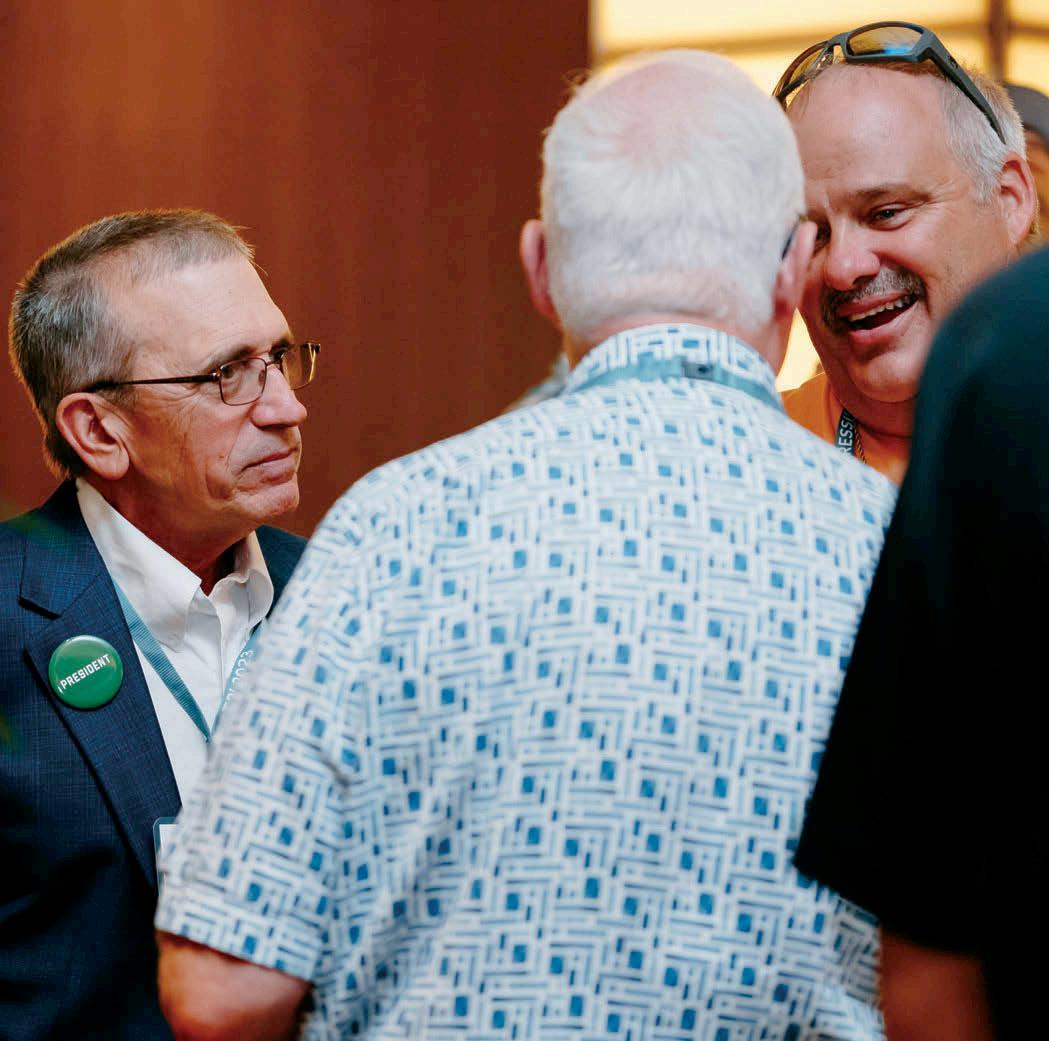

56 TPI Turf News September/October 2023
CHATTER AND LAUGHTER FILLED THE AIR
The always popular President’s Reception was so much fun no one was eager for the evening to end.
Parent’s Night Out/Kid’s Night In
It’s hard to tell if this new feature added to the TPI Convention was a bigger hit with the parents—or the kids!



Women in Turf Dinner Rated as Excellent

The annual Women in Turf event, sponsored and coordinated by the Turf Producers Association, Barenbrug, and Brouwer Kesmac, provided a great opportunity for the women of this industry to make and strengthen their networking connections. Learn about the Brower Kesmac Female Leader of the Year Award, which was presented during this event, and its recipient, in the article on page 16 of this issue.

57 TPI Turf News September/October 2023
EDUCATION SESSIONS THOUGHT-PROVOKING
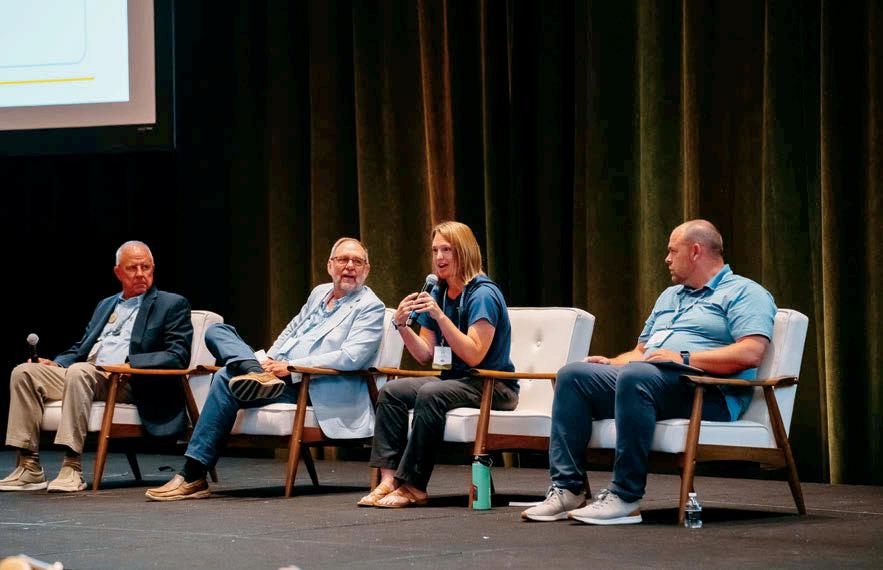
Navigating the dynamics of a family business was the overriding theme of the Tuesday morning Education Sessions. Keynote Speaker Jolene Brown gave a dynamic, hard-hitting presentation on, “Stop the Fighting on the Way to the Funeral Home!” Dick Wittman followed with an eye-opening presentation on “Financial Literacy.” Next, TPI Executive Director Dr. Casey Reynolds served as moderator for a panel of farmers who shared their experiences in “Working with Family.” Following the lunch break, Dr. Reynolds gave a “TPI Update,” addressing key issues impacting the association and its members. He closed the education program with a question-and-answer session.






58 TPI Turf News September/October 2023
FAMILY FARM NIGHT— PART 1
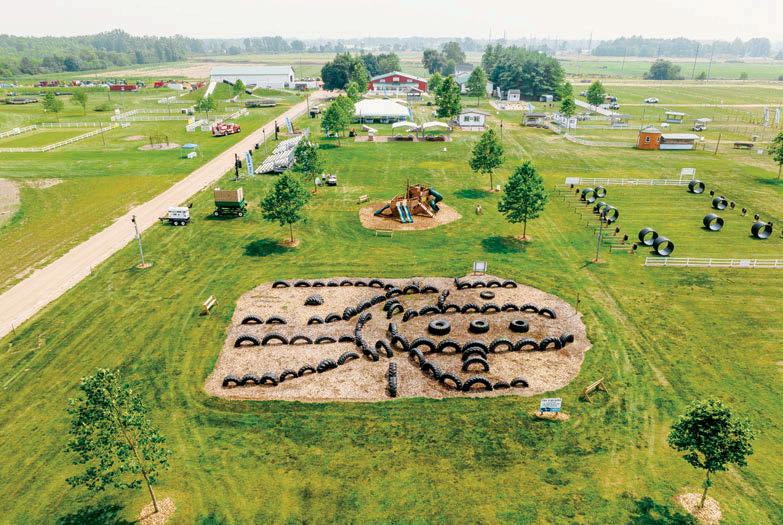

Tuesday evening was Family Farm Night. Attendees boarded buses for the short ride to New Lawn Sod Farm and an amazing dose of agritainment at its best! This family business has fine-tuned the art of delivering incredible experiences to its guests and their red carpet was out for the TPI family. The next four pages are filled with photos of fun-filled experience.




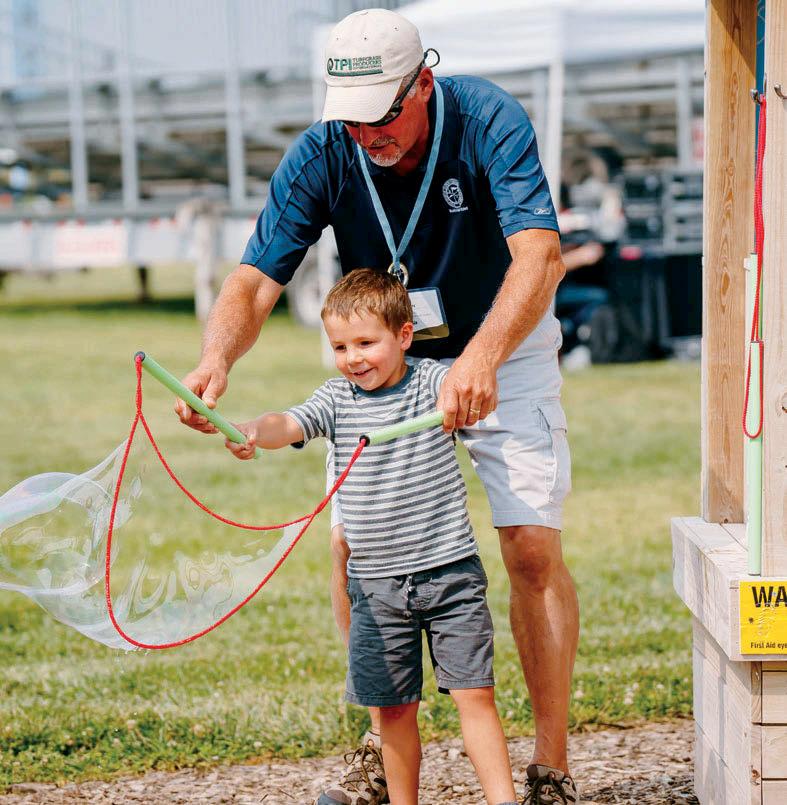



59 TPI Turf News September/October 2023
FAMILY FARM NIGHT— SHOW & TELL PARADE
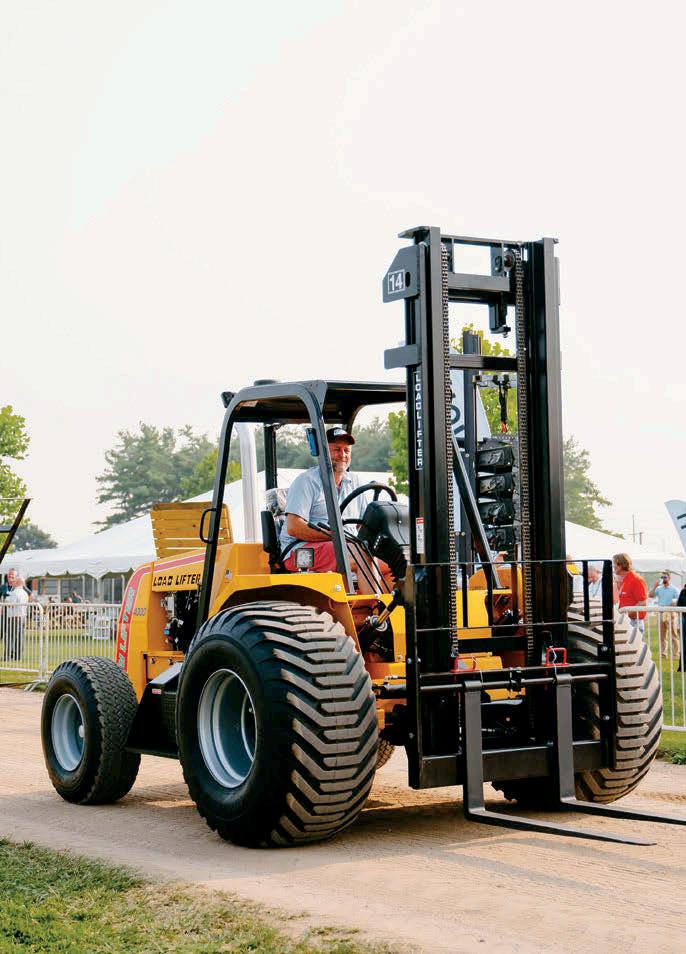






Everyone loves a parade! And Wow, did the TPI exhibitors put on a great one! Orchestrated by the team of Liz Lonsbrough and Mike Blair, the lineup of featured equipment and supplies rolled past the crowd. Many viewed the parade from the bleachers installed specifically for this event. Others gathered along the fence to watch the action. The candy cannon had delivered goodies just minutes before the parade started and kettle corn and assorted beverages were available for the viewers. The night’s MC was aided by a trio of TPI Board members—Larry LeMay, Lindy Murff, and Adam Russell—who announced each entry as it passed, all adding to the anticipation of the Field Day on Wednesday.
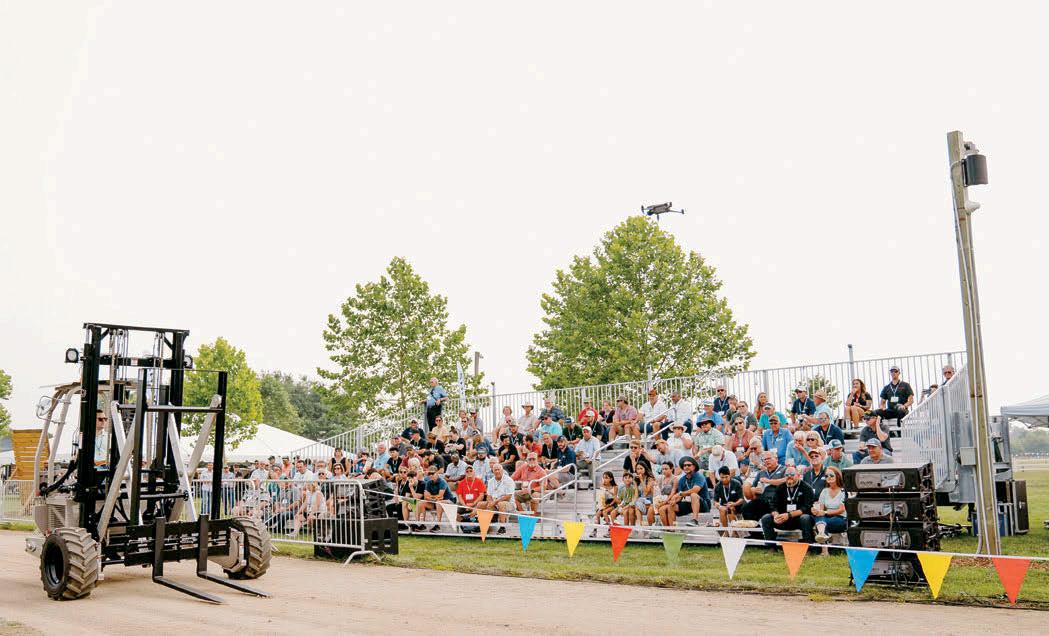
60 TPI Turf News September/October 2023
FAMILY FARM NIGHT— PART TWO

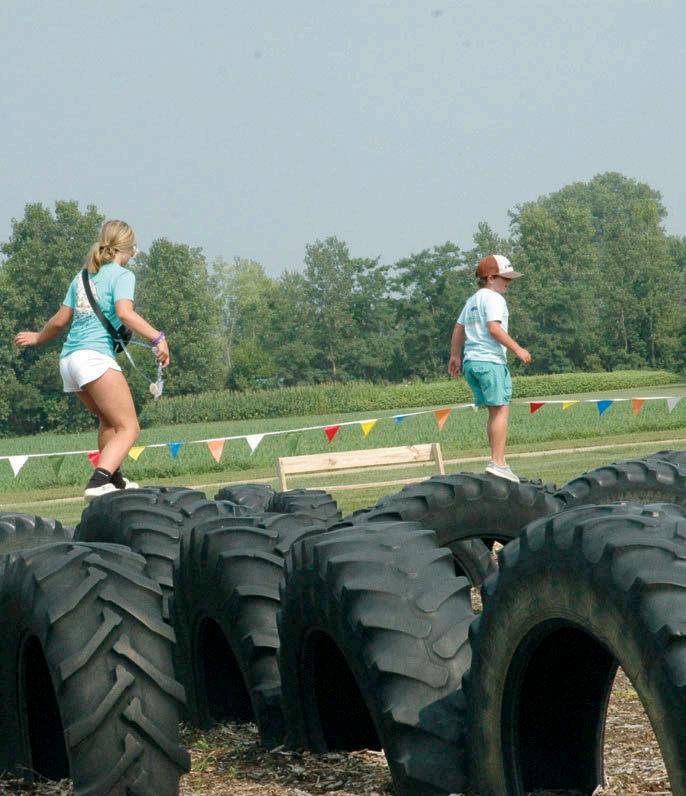





With the Show & Tell Parade wrapped up, the TPI crowd had a cornucopia of options available. Head for the delicious dinner the New Lawn Sod Farm staff had prepared, try out a few more of the agritainment offerings, dig into an amazing ice cream treat, or like most of the group, enjoy them all!


61 TPI Turf News September/October 2023
TRIKE RACES A RESOUNDING SUCCESS!
Trike Races, a fundraiser for The Lawn Institute, were a resounding success. The entry fee (and donation) was $400 per four-person team. The teams: Geriatric Trike Team, Kid’s Table, Sod-dle Up, Young Leaders & Big Rolls, Future Scholarship Winners, The DeBuck Girls, The “OG” (Old Guy) DeBucks, Team Magnum, The Sod Busters, and Prime Sod. The TPI family once again showed their competitive spirit with a crowd of cheering onlookers adding to the fun. One fall; no injuries, but lots of exclaiming, “Wow! This is hard!” After several races of three or four teams, with the winning team moving to the next round, the Trike-Off results were awarded: in third place – Prime Sod, runner-up - The OG DeBucks, and race winner - Team Magnum.

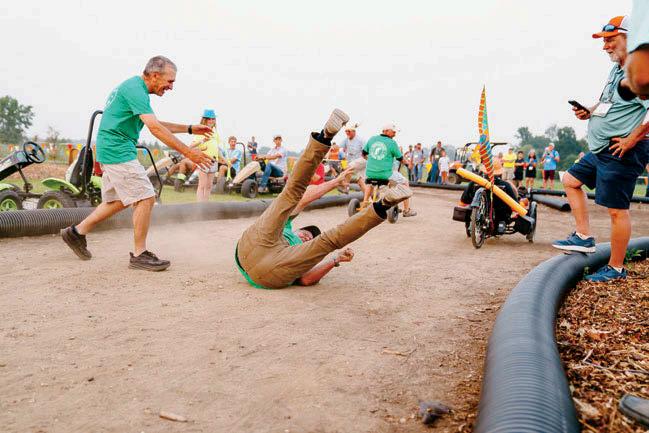
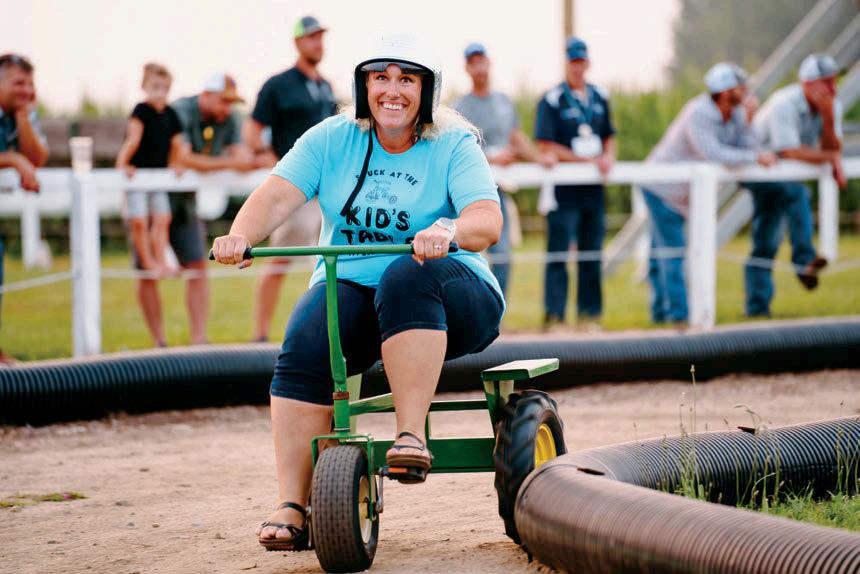

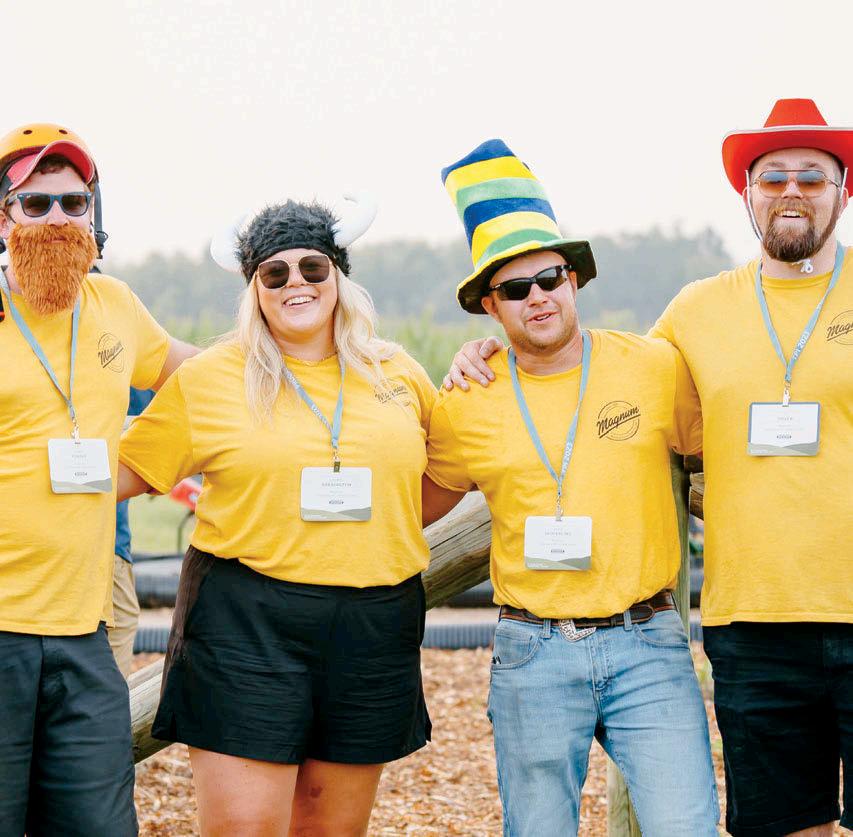



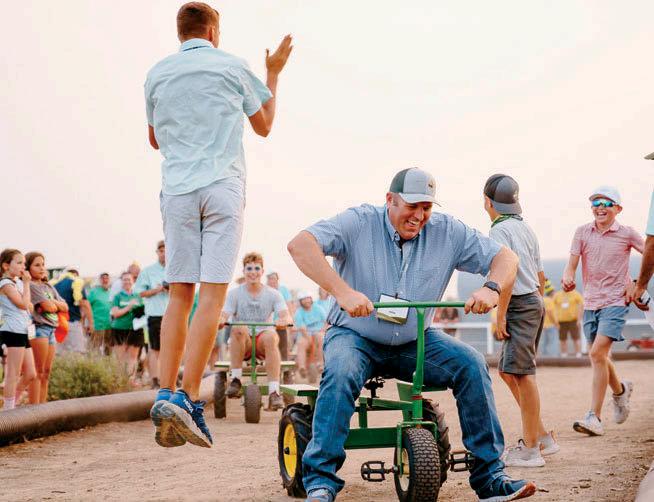

62 TPI Turf News September/October 2023
FIELD DAY SUPER-SIZED!
With over 20 acres available for the Field Day, exhibitors had ample room to display their equipment and, in many cases, demonstrate how well it performs “in the field.” Cutting-edge technology in both sod harvesters and mowers was a major talking point, with several companies introducing autonomous machines. A wide range of other products were also showcased with suppliers’ exhibits on view in individual display tents. Thank you to New Lawn Sod Farm and the DeBuck family for opening your farm to Turfgrass Producers International!



THANK YOU TO OUR EXHIBITORS!
A-List
Advanced Equipment Sales
Advanced Turf Solutions
AgChimp LLC
Ag Logic Distributors
APV America
Aqua-Aid Solutions
Barenbrug
BigYellowBag
Brouwer Kesmac
Cameron Financial
Donkey Forklifts
D.W. Lift Sales (Princeton)
E-Cargo Tarps
Farm Services, Inc.
Firefly Automatix, Inc.
First Products
HH Spray
Harmony Outdoor Brands
HAULIT
Helena Agri-Enterprises LLC
Jonathan Green, Inc.
Landmark Seed Company
Load Lifter Mfg.
Magnum
Mountain View Seeds
MVP Genetics
Pennington Seed
Poyntz Inc.
Progressive Turf Equipment, Inc.
R & R Products
RhinoAg
Sabanto
Sales Midwest, Inc.
Sod Solutions
STEC Equipment, Inc.
Summit Seed - Profile Products
TAMANET (USA)
Trebro Manufacturing, Inc.
Trimax Mowing Systems
Turf Producers Association
Wessex International USA Inc.
63 TPI Turf News September/October 2023
FIELD DAY SUPER-SIZED!
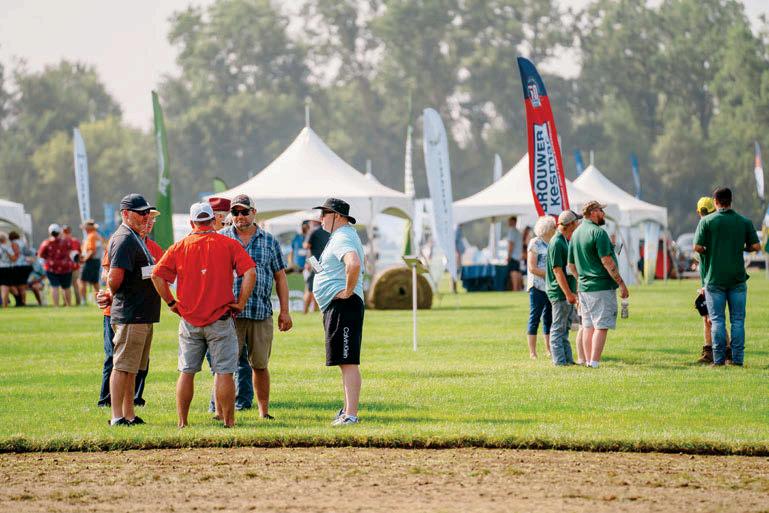








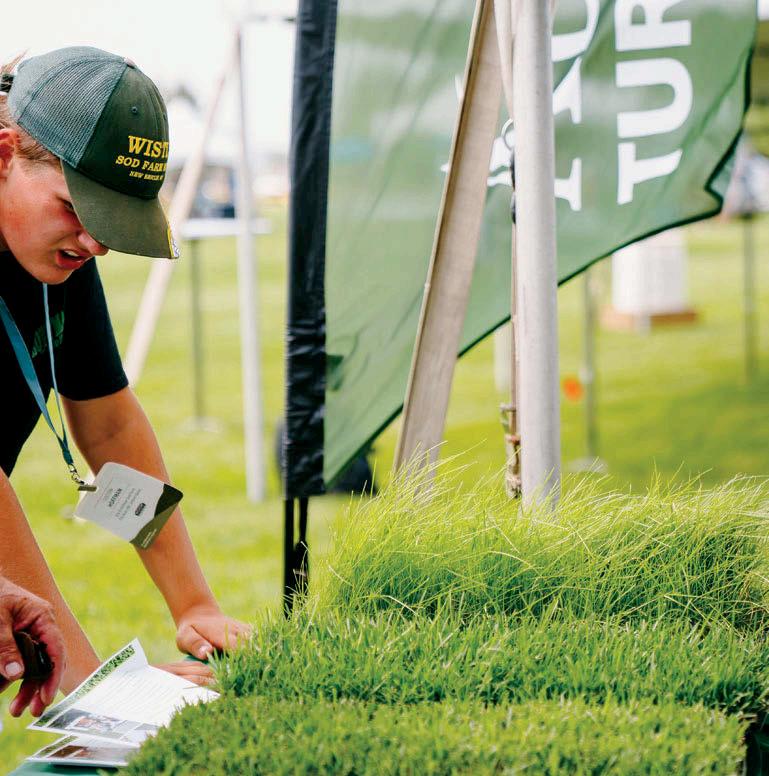

64 TPI Turf News September/October 2023
TLI FUNDRAISERS AGAIN A SUCCESS!


The Donkey Forklift that led the Show & Tell Parade was the item to be auctioned off as a fundraiser for TLI. Tim Wollesen of Sales Midwest served as auctioneer. The high bidder for the Donkey Forklift was Ryan Thomas of Prime Sod. The Thomas family and Jamie Holder of Donkey Forklift are shown in the photo with the forklift.

A raffle was also held in support of TLI. Raffle Winners:
Fanus Cloete, Evergreen Turf, South Africa, won two full conference registrations for the 2024 TPI International Education Conference & Field Day in Orlando, Florida.
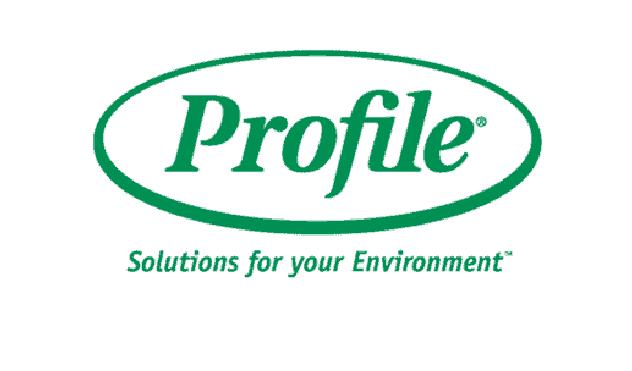
The second raffle prize had not yet been claimed when Turf News was printed. That prize is two tickets to Disney/Universal at the 2024 TPI International Education Conference & Field Day. The winning ticket was Ticket # 187004-Red. If you hold that ticket number, please contact Geri at 847-649-5555. If the prize is not claimed by October 1, 2023, a second raffle ticket will be drawn.
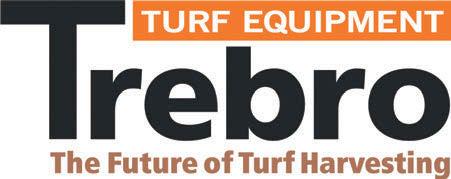
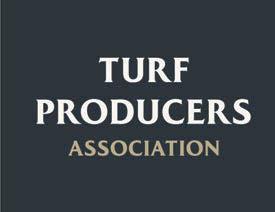
THANK YOU TO OUR 2023 SPONSORS!



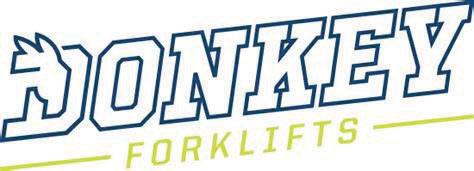

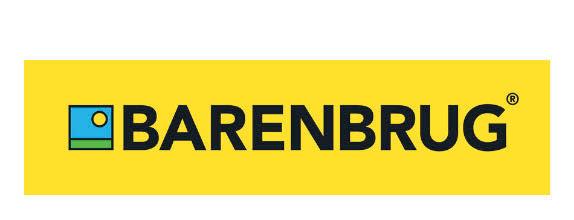


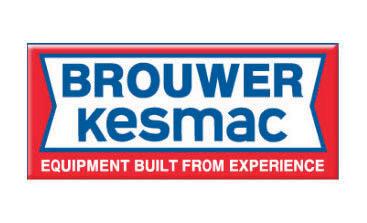

65 TPI Turf News September/October 2023
THANK YOU TO THE TEAM!
TPI President Bob McCurdy, TPI Executive Director Dr. Casey Reynolds, and the TPI Board of Trustees extend a huge Thank You to the Team that made the 2023 Convention & Field Day such an incredible event. Attendees, exhibitors, and sponsors all individually interact with some team members onsite and likely see other team members working on onsite tasks—and while that is all extremely important, it is just the tip of the iceberg. Planning, organizing, coordinating, and presenting the 2023 event was a two-year process, with so much going on behind the scenes it would make your head spin!
The pre-event onsite coordination is like an enormous jigsaw puzzle that requires all the pieces to fit together precisely to create a positive experience. Then, much more difficult than a jigsaw puzzle, Mother Nature can throw in additional challenges to the pre-event preparations and the event itself that prompt alternative plans and the flexibility to execute them. Director of Meetings Liz Lonsbrough, the Field Day Team, headed by Mike Blair, and the New Lawn Sod Farm Team handled the weather challenges masterfully, including the thunderstorm that required an early shutdown of the Field Day and getting all attendees, exhibitors, equipment, and other display items off the field and out of danger within minutes of heavy rain and lightning arriving onsite.
Event Director and All-Event Coordinator
Liz Lonsbrough
Hotel Set-up, Registration, and Event Coordination Team
Maureen Borland
Tanya Cook
Marin Goldberg
And TPI Staff:
Allie Shriver and Geri Hannah
Field Day Team
Coordinator – Mike Blair
Cameron Blair
Tina Lykins
Sadie Lonsbrough
John (Johnny) Martin
Farm Night Show & Tell
(Equipment and Products Parade)
Headed by Liz Lonsbrough and Mike Blair
Volunteer Board Member Narrators
Larry LeMay
Lindy Murff
Adam Russell
TLI Auction Coordinator

Geri Hannah
Auctioneer
Tim Wollesen
TLI Fundraising Team
Coordinator – Geri Hannah
Jenny Carritt
Doug Lechlider
Tim Wollesen
The Photo and Video TeamBE Videographers
Brooks Gatewood
Angie Auth
Jack Hanrahan
Shawn Wehland
Special Thanks to the Family Farm
Night and Field Day Hosts
New Lawn Sod Farm
Thanks to the DeBuck family and their entire staff who displayed their “whatever it takes” mindset, along with their wonderful hospitality.
66 TPI Turf News September/October 2023














TPI Turf News September/October 2023 67 TP I f 2 02 3 r
PRESTON POOLER PHOTO JOURNAL

Editor’s note: As TPI Executive Director Dr. Casey Reynolds stated in his column on page four of this issue, “There is no doubt that TPI is a family and our experience at this summer’s TPI International Convention & Field Day certainly highlights that.” And, because many TPI members are part of a family business, multiple generations of that individual’s family often take part in TPI Conventions, Conferences, and Field Days. Jason and Tina Pooler, owners of Tri-Turf Sod Farms, Inc. of Paris, Tennessee, told your editors that their youngest son, Preston, who has attended many TPI events over the years, was interested in photography, perhaps as a future career path. We asked Preston to use that skill during this summer’s Family Farm Night and Field Day. This photo journal of those events is just a small sample of his work.
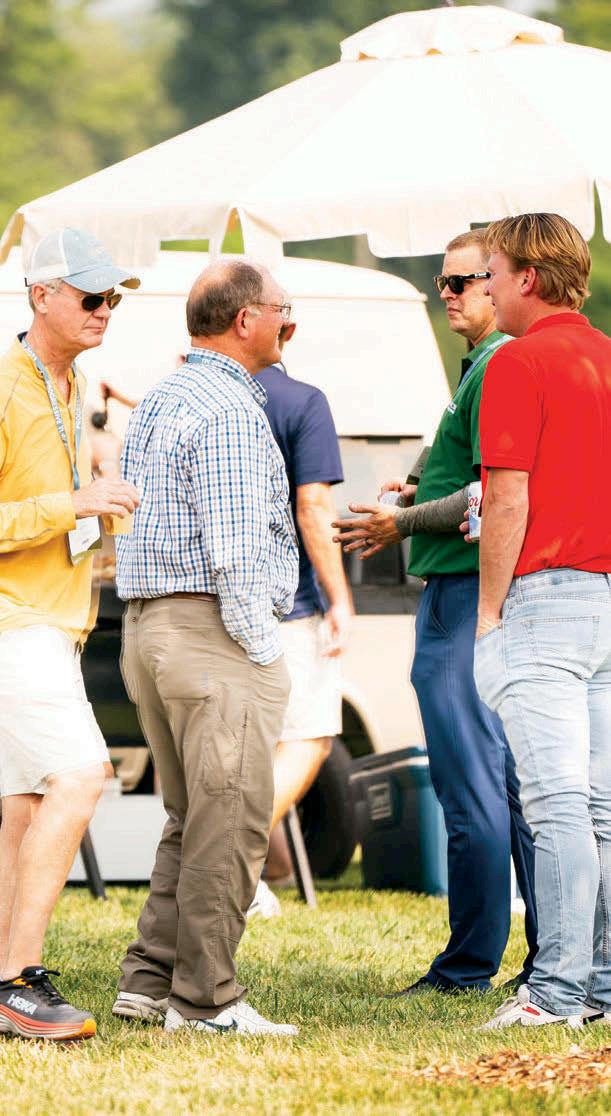




FAMILY FARM NIGHT FUN!

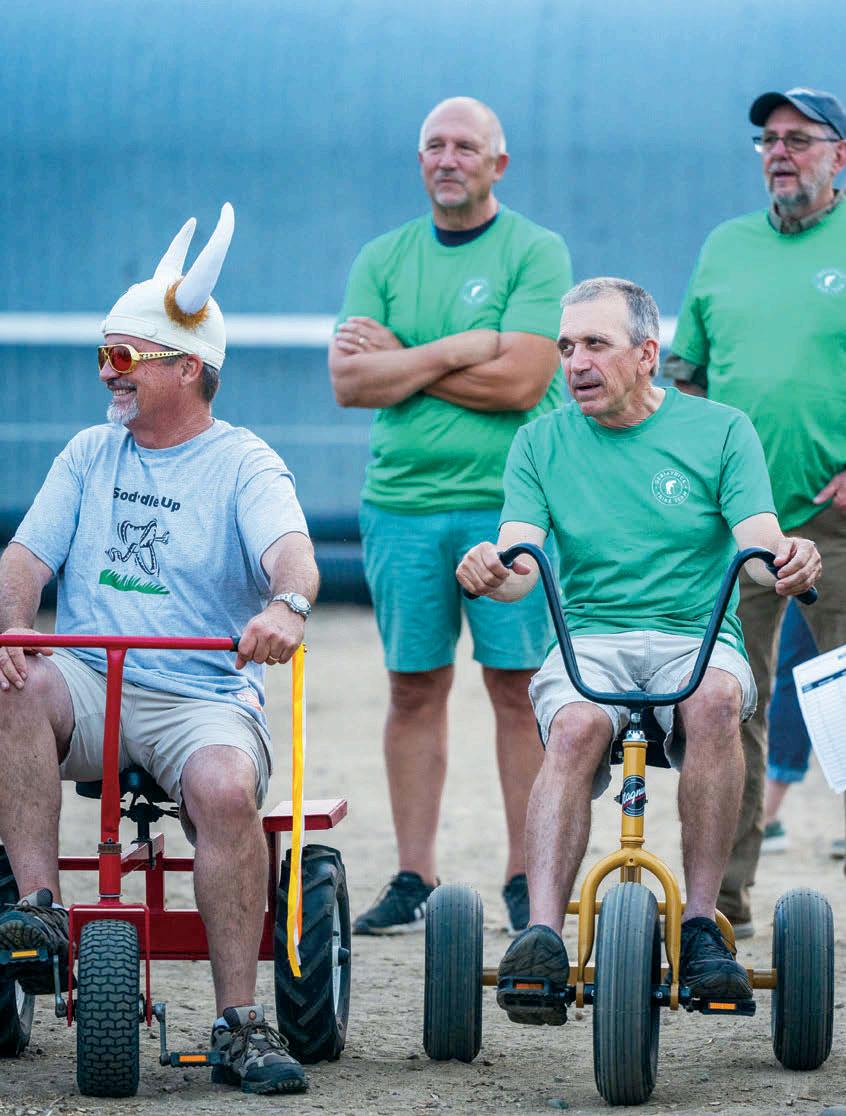
68 TPI Turf News September/October 2023
NETWORKING ON THE FARM



DELICIOUS FOOD!

69 TPI Turf News September/October 2023
WORLD CUP SOCCER RESEARCH

TPI’s 2023 International Convention & Field Day offered an optional tour to Michigan State University. The highlight for many attendees was the tour of MSU’s Hancock Turfgrass Research Center to see the extensive World Cup Soccer Research that is underway there. As the “World Cup Research Update” article in the July/August issue of Turf News reported, since 2021 the MSU research lab, under the leadership of Dr. Trey Rogers, and the University of Tennessee research facilities, under the leadership of Dr. John Sorochan, “have been working to develop a natural grass playing system that offers uniform playing conditions across all the upcoming World Cup host stadia.” As Dr. Rogers explained, “Sod on plastic is key to the equation.”


Dr. Rogers led the tour, with support from his research team, backed by Dr. Sorochan and some of his research team. Representatives from FIFA were also on hand and joined in the tour, interacting with the TPI group. The tour’s showand-tell format provided insight into the multiple aspects of research taking place and its focus on perfecting the processes to have the data sod producers will need. The photos below show just a snippet of that research.

70 TPI Turf News September/October 2023
Dr. Rogers provided the details on establishing, and then maintaining, the turfgrass plots grown on plastic on top of a paved area of the research center.
Dr. Rogers pointed out two hybrid systems that are integrated into some of the plots, displaying cut-out sections of those plots so attendees could examine them. This plot section is SISGrass, a hybrid system that stitches polypropylene fibers into established natural grass. On fields in Europe, this stitching goes to a depth of seven inches (177.8 mm). For sod on plastic, the depth is limited to no more than 2.4 inches (60 mm).
HERO is the hybrid system being examined here. It is positioned on top of the plastic, with the growing media placed over it and the grass seeded or sprigged into it. HERO has an open grid structure, rather than solid backing, with the fibers anchored to the grid.
This is a close-up view of the underside of a cut-out from the HERO plot.
In this area, Dr. Rogers explains they are researching different seeding rates for perennial ryegrass and bluegrass mixes to determine the minimum amount of ryegrass needed to achieve a harvestable product within a predetermined short time span while maintaining the health of both species.


The researchers demonstrated the testing process for sod tensile strength and for ball drop and roll. The testing apparatus shown here is the fLEX developed at the University of Tennessee by Dr. John Sorochan and Dr. Kyley Dixon. It simulates an athlete and measures the force of the interaction of the shoe and the playing field to determine its impact on the body. The apparatus can use different foot sizes and different shoes and adjust the force to the weight of an athlete. It can measure a stop (deceleration condition), start (acceleration condition), and turn (cutting condition).

At this tour stop, Dr. Rogers reported the researchers are comparing the performance of five different hybrid companies’ systems in varied setup situations within the parameters of World Cup requirements.
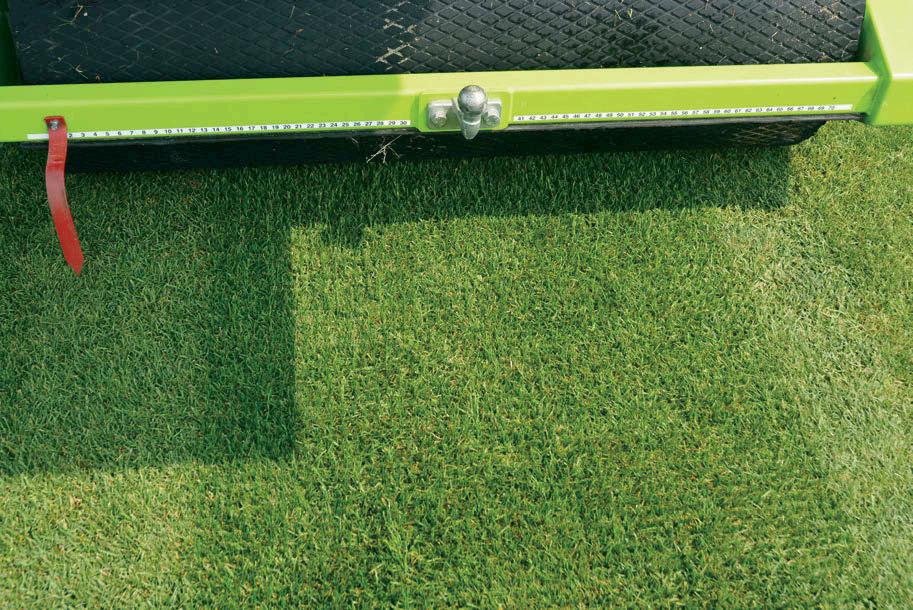



71 TPI Turf News September/October 2023
Attendees were able to observe the SISGrass installation process. This is a front and side view of the machine.
This photo shows the back of the SISGrass machine as it is “sewing” fibers into established grass and a view of the surface of the grass where the fibers have been inserted.
Suz Trusty is co-editor of Turf News
Photos by BE Videographers and Steve and Suz Trusty.
NETWORK, LEARN, AND GROW!


Hotel InformationRoom Blocks will open in October
Host Hotel: Marriott Orlando World Center
•Rates open three days pre-and-post-event based on availability.
•All event functions will be at the host hotel.
Secondary Hotel: Wyndham Lake Buena Vista Disney
Springs Resort Area
•Rates open three days pre-and-post-event based on availability.
•Dedicated hotel shuttle between the host hotel and the Wyndham during main conference hours.

Area Attraction Specials
Planning to extend your stay? There will be a dedicated TPI discounted ticket website for area attractions.




Optional Activities
The Florida area is teeming with optional activities. Join fellow TPI members to explore one of these three excursions.
Celebration Bike Tour: These 90-minute private-guided bike adventures are the perfect way to experience the Town of Celebration, famous for its nostalgic hometown flavor and elegance. Discover picturesque neighborhoods with world-class architecture, native Florida wildlife, and a vibrant downtown area while pedaling along quiet streets, scenic winding trails, and waterfront pathways. Guests will have leisure time following the bike tour to enjoy lunch and shopping on their own.
Citrus Showcase: Visit a family-owned and operated 2,500acre estate which began back in 1989 and is still cultivating over 50 varieties of citrus. Guests will enjoy a 4x4 monster truck tour through native woodlands and grove lands, U-pick citrus, and get to feed the farm animals in their onsite petting farm. This, coupled with a wonderful, boxed lunch will create a truly unique and “Florida” experience.
Winter Park Boat Tour: Located on Lake Osceola in the quiet suburb less than ten minutes from downtown Orlando, this boat tour offers hour-long, guided cruises through three of the seven lakes and two, narrow, manmade canals on the tranquil Winter Park chain. On any given tour, participants may observe large cranes swooping waterside to snag a large fish or a lazy alligator languishing on a nearby bank.
72 TPI Turf News September/October 2023
TPI INVITES YOU TO JOIN YOUR PEERS IN ORLANDO, FLORIDA, FEBRUARY 4-8, 2024, TO
TPI INVITES YOU TO NETWORK, LEARN, AND GROW!


REGISTRATION FOR THE TPI 2024 INTERNATIONAL EDUCATION CONFERENCE & FIELD DAY OPENS IN OCTOBER
Keynote Speaker– Nathan Whitaker
Nathan Whitaker is a Duke University and Harvard Law School graduate, with a background that varies from practicing law to working in administration for the Tampa Bay Buccaneers to authoring or co-authoring 31 books. TPI members may remember him from his 2020 Inspirational Message explaining how he connected with Tony Dungy, beloved Super Bowl-winning coach, who is known for his uncommon character as a coach, a dad, and a mentor. The two have co-authored nine books. Building uncommon character didn’t happen overnight, for Dungy or for Whitaker. Whitaker also has been working with the TPI Future Leaders Fellowship cohort as moderator, prompting the group to dig deep and reflect on their strengths and weaknesses as employees and leaders, and earning rave reviews from the participants.

Jolene Brown, CSP, CPAE
During TPI’s International Convention in Michigan, keynote speaker Jolene Brown was a dynamo, meeting and mingling with the crowd at the President’s Reception, the Women in Turf dinner, and during the breakfast prior to her onstage presentation. That same energy captured attention and prompted laughter during her hard-hitting, thought-provoking presentation, “Stop the Fighting on the Way to the Funeral Home!” And it left audience members wanting more. TPI listens and delivers! Dig into the details with Jolene Brown’s Family Planning Workshop during the Orlando Conference.
Field Day at FloriTurf
Field Day host FloriTurf has been in the sod industry for over 20 years.
Buses will be provided from both hotels to the Field Day host farm.
73 TPI Turf News September/October 2023
Photo by Steve Trusty
Photo by BE Videographers
...And Much, Much More!















Turf News
LEARN & NETWORK
DATE & PLACE:
FAVORITES
Nathan Whitaker as Keynote Speaker
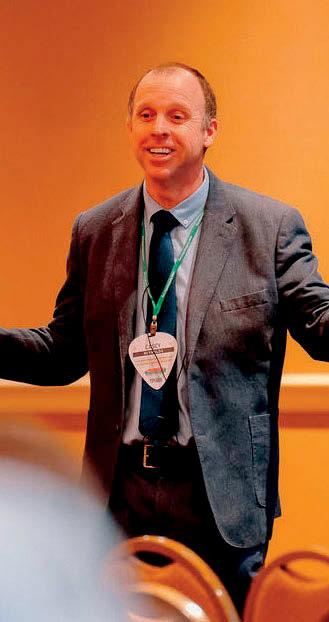
Jolene Brown Family Planning Workshop
Florida Area Optional Activities
TLI Fundraising Event Farm Show and Tells Committee Meetings & much more!

FEBRUARY 4-8
ORLANDO WORLD CENTER MARRIOTT
The TPI Room Block at the Host Hotel and our overflow location will open this fall. Shuttle service will be provided between hotels.
FIELD DAY AT FLORITURF
Buses will be provided from both hotels to our field day host.
75
TPI INVITES YOU TO
2023
RETURNING
REGISTRATION OPENS OCTOBER
GROW
U.S. SOD CHECKOFF UPDATES
By Casey Reynolds, PhD
As I reported during the TPI International Convention, we are still likely more than a year away from an industry-wide referendum on the proposed U.S. Sod Checkoff, and there is plenty of time to learn more, provide public comments, and ultimately vote. I’ve provided an update in this article, and there will certainly be other opportunities to learn more ahead of the upcoming referendum.
There are currently 22 USDA Research and Promotion Programs (aka checkoffs). Checkoffs have a long, proven history of funding research and promotion of agricultural products and have been around since the 1960s. To combat the decline in the demand for cotton brought on by competition from manmade fibers, particularly polyester, the cotton industry proposed legislation designed to strengthen cotton’s competitive position. The resulting statute is the Cotton Research and Promotion Act of 1966, which created the Cotton Research and Promotion Program.
While early checkoffs like cotton had to go through Congress, that all changed in 1996 with the passage of The Agricultural Improvement and Reform Act of 1996, also known as Freedom to Farm Act or the 1996 Farm Bill. This bill contained legislation that became the Commodity Promotion, Research, and Information Act of 1996, and it delegated checkoff programs to the USDA. Now, instead of industries having to go through Congress to get a checkoff passed, they simply go through the USDA. This bill was sponsored by Rep. Pat Roberts (R-KS) and 15 Republican co-sponsors and passed the House (318-89) and the Senate (74-26).
Since then, the current 22 checkoffs combined routinely raise up to $1 billion each year to fund research and promotion of their products. Just like the cotton checkoff, many checkoff programs arise out of an industry’s need to push back against market threats, misinformation, and shifting consumer trends. Just google the term “lawns are” and you will see that our industry is no different. The top hits include colonialism, useless, bad, a waste, stupid, ecological disaster, and so on. There is no doubt that consumers simply do not understand the benefits of natural
grass for lawns and sports fields. The good news for our industry though is that the science behind natural grass is on our side. We simply need to fund the research to show it, package it, and then shout it from the rooftops both locally and nationally.
So how do we get there and what’s the latest update? The proposed U.S. Sod Checkoff Program was submitted to USDA for review in late 2020. Since then, I have been traveling the country to visit with sod producers to get feedback on the proposed checkoff as well as discuss any changes to it. One of the most important components of implementing any checkoff program is industry feedback. In talking with checkoff directors at the 22 USDA Research and Promotion programs, they all spent significant time in promoting their programs ahead of the vote, getting input from industry stakeholders, and making sure that they did everything they could to widely publicize the program.
Also, why not? Checkoffs are not designed to be programs that can be implemented overnight. There are many checks and balances at USDA to make sure that checkoffs are properly written before coming up for an industry-wide vote and of course that takes time. For example, our initial submission of the proposed checkoff was in 2020 and was 39 pages long. It included an industry analysis and justification, market threats and opportunities, a proposed budget, initial language, and more. One of the primary objectives of this process being a rather lengthy one is that it allows industries an opportunity to discuss the checkoff, suggest any proposed changes, and ultimately make an informed decision on it prior to the referendum.
Much of the discussion at meetings over the last 18-24 months has revolved around key details of the proposed program such as board formation, nomination and selection; voting; costs; compliance; and what type of research and promotion could or should be funded with checkoff dollars. The proposed program would be administered by a board of 13 sod producers with four producers from northern states, five from southern states, and four from transition zone states. They would be nominated by other sod producers and/
76 TPI Turf News September/October 2023
or associations such as the Turfgrass Producers of Florida (TPF) which are made up of sod producers, and they’d each have three-year rotating terms.

As it stands now, the proposed sod checkoff program could raise as much as $14 million or more annually to fund research and promotion of natural grass. These funds would be raised through an assessment of 1/10th of one penny per square foot of sod sold and would be submitted to the sod checkoff quarterly. All information obtained from books, records, or reports would be kept confidential. It would not be available to Board members, or Natural Grass Sod Producers, and only those persons having a specific need for such information solely to effectively administer the program would have access to such information. This has been a question that has come up at various meetings, and it has been reassuring to many that the 1996 Act contains strict guidelines on confidentiality.
Another question that often comes up is, “Can producers pass this assessment on to their customers?” And the answer is yes. In doing so, it becomes a small price for each individual customer. The associations that represent these customers strongly support the checkoff program and are willing to communicate it to their industries. They feel the same pain we do when lawns and other green spaces come under attack, and they understand that any program that promotes natural grass also benefits the industries whose jobs rely on it.
Two recent changes to the proposed checkoff that have come up at various meetings revolve around the idea of board seats and research/promotion dollars. As a result, in December of 2022, we proposed new language to the USDA that would 1) allow the three highest-producing states to have first right of refusal at a board seat and 2) would direct 50 percent of all funds raised in a state, minus administrative costs, to be set aside for funding research and promotion in that state. Additional language around Qualifying Organizations lays the framework for state associations such as TPF to be in charge of directing state funds.
So what are the next steps? We have passed several of the key milestones to this point and continue to work through the appropriate steps at USDA. As it stands now, we are still awaiting final approval to open the 60-day public comment period. Once that happens, our industry (and
anyone else for that matter) will have the opportunity to provide public comment on the proposed checkoff. Once that public comment period closes, the USDA will then have to review and compile all the comments, and provide responses to each of them, before announcing the details and date of the referendum, of which there will be plenty of notification. For example, the most recent checkoff to come up for a vote was the Concrete Masonry Products Research and Promotion Order, and there were around 17 months between the time the public comment period opened and the voting period closed. So, it is sufficient to say that the voting period shouldn’t sneak up on anyone, and we will do our best to make sure everyone is fully aware of it as soon as it is announced.
Can checkoffs be effective at changing the narrative of an agricultural product? Absolutely. Just look no further than beef, dairy, eggs, almonds, and others who have funded research to tell their story and then packaged it in meaningful, widespread marketing to consumers. Scientists used to say red meat is bad, but now, maybe not so. Butter and eggs used to be the enemy, but new scientific research shows differently. The almond industry funded research to produce an FDA heart-healthy claim and demand has tripled in the last 20 years. All these stories share the same formula. Fund the research, package it, and market it to consumers in a way that changes the narrative in favor of producers. For more information about the sod checkoff, to see webinars, and to stay up to date on the latest details please visit www.SodCheckoff.org.
77 TPI Turf News September/October 2023
Casey Reynolds, PhD, is executive director of Turfgrass Producers International.
Checkoffs can: Fund the research, package it, and market it to consumers in a way that changes the narrative in favor of producers.
FIVE WAYS TO INCORPORATE MINDFULNESS INTO YOUR LIFE
By Nabil El-Ghoroury, PhD, CAE
What do you think of when you hear the term mindfulness? You might think of a new-age person sitting on the floor in a lotus position while chanting. However, mindfulness is likely the most powerful, evidence-based strategy we have for reducing stress and preventing burnout. Simply put, mindfulness is exercise for the brain, and a healthy mind is better able to handle the daily stressors of life. Mindfulness is about being present and noticing your senses (what you can see, hear, touch, taste, smell). Being mindful typically means trying to quiet your thoughts and taking some deep breaths.
If you’ve ever seen a basketball game, you’ve seen mindfulness in action. Every time a player takes a free throw, particularly when they are facing the opponent’s crowd, they are faced with multiple distractions. But if you watch them carefully, they usually do some kind of routine with the basketball, perhaps two dribbles with one hand, then transfer to the other hand, combined with a quick deep breath, then they take the shot. Mastering this mindfulness is the difference between a good and a great free throw shooter.
So how can you, as a turfgrass producer, incorporate mindfulness into your daily life? Here are five easy tips for building mindfulness into your regular routines.
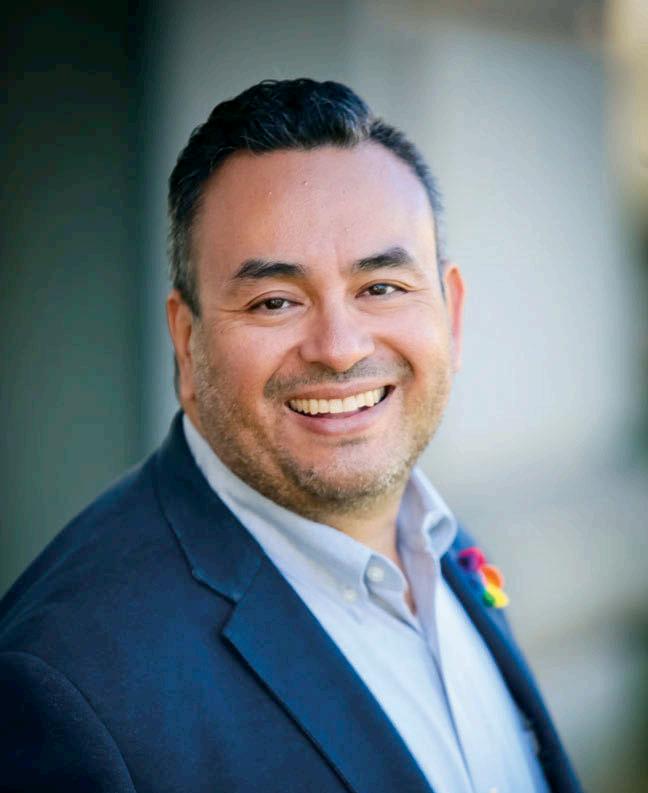
Guided Mindfulness Exercises
Guided mindfulness exercises are the most direct and effective way to engage in mindfulness. It’s hard to let go of your thoughts on your own, so most beginners appreciate a guided exercise. Typically, this involves using an app, watching a video clip, or listening to a podcast. You are instructed to close your eyes and visualize whatever the speaker describes verbally while engaging in deep breaths the whole time. After five to 15 minutes of such guided exercises, most participants feel calmer and more relaxed.
Ideal times to try this out are as part of your morning routine (sometime between waking up and starting work) or as part of your transition out of work in the early evening. Apps that I’ve enjoyed using include Calm, Mindfulness (which has an Apple Watch feature), and UCLA Mindful. On YouTube, you can search for “mindfulness clips” and find ones that match the length of time you’re willing to dedicate to this exercise.
Deep Breathing
Deep breathing is the faster, less complicated, approach to mindfulness. Diaphragmatic breathing involves a routine of slowly inhaling through your nose, holding your breath for a few moments, breathing out slowly through your mouth for a few moments, then holding again.
One version of deep breathing used by the U.S. military is box breathing, which involves doing each of these steps for a count of four seconds (inhale for 4 seconds, hold for 4 seconds, etc.). The great thing about deep breathing is that you can do this at any time, such as while you are stuck in awful traffic or after a stressful meeting.
Try deep breathing before a meeting that you anticipate will be difficult and see for yourself how effective it can be. If you want to show your team that you value mental health and wellness, start a meeting with three deep breaths and see how your team responds.
Build Mindfulness into Your Daily Routines
Mindfulness can be built into your daily routines, such as while you’re prepping a meal or when you are eating. Take a moment during this routine to take some deep breaths and notice your senses: what do you see, hear, touch, taste, and smell?
78 TPI Turf News September/October 2023
Nabil El-Ghoroury, PhD, CAE
Simply put, mindfulness is exercise for the brain, and a healthy mind is better able to handle the daily stressors of life.
I’ll share my coffee routine, which has become my mindfulness moment. In the silence of the early morning, I slowly smell the coffee beans after I grind them. While I pour water over the grounds, I listen to the water drip into my Yeti coffee cup. I feel the heat of the coffee as I carry the mug to my mouth. Finally, I slowly taste the coffee and cream in my drink. Throughout all of this, I’m engaging in slow deep breaths. This process, which generally takes less than five minutes, has become a habit that helps me prepare for the day’s challenges. Explore your typical routines and see where you can incorporate mindfulness into things you already do.
Incorporate Mindfulness When Outside in Nature
A particularly valuable time for mindfulness is while you are outside in nature. You might be walking or just standing somewhere appreciating the greenery that surrounds you. What do you see, hear, touch, taste, or smell?
I love going for a walk at a local park every morning, and I always take a moment to listen to the birds chirping. It was a special treat when the honeysuckle flowers were blooming, and I could smell and even taste the sweetness in the air.
For turfgrass producers, noticing the nature surrounding you might be something you can do daily as you tend to your farms. While you are outside, take a moment to pause and refresh. Stand on the soft cushion of natural grass, breathe deeply, and notice your senses. Feel the heat of the sun; watch the breeze ripple through the blades; savor the aroma of freshly mown grass.


Build Mindfulness into Your Sleep Routine
A final time for engaging in mindfulness is as part of your sleep routine. If you’re like most business owners, your mind is probably racing through different thoughts at the end of the day. Incorporating a guided mindfulness routine as part of your steps before you go to sleep can slow those thoughts down and get you ready for sleep.
You can find guided exercises on YouTube or other apps that are specifically designed for going to sleep. The Calm app has bedtime stories read by Matthew McConaughey if you want a mellow way to go to sleep.

Conclusion


If mindfulness is exercise for the brain, doing one set one time is insufficient to demonstrate a meaningful effect, just like going to the gym once won’t lead to muscles you can see. After one set of deep breathing or mindfulness, you’ll likely feel a bit more relaxed. To build the habit and grow your mindfulness muscle, you’ll need to practice daily for two to three weeks to start to notice bigger impacts. Hopefully, these suggestions will give you ways to incorporate mindfulness into your daily life.
Nabil El-Ghoroury, PhD, CAE is a seasoned clinical psychologist with over 25 years of experience in psychology and mental health. In addition, he has over 13 years of experience in organizational leadership, including a successful four-year stint as the chief executive of a $6 million association. He uses both his clinical acumen and business savvy to provide high-quality, evidence-based psychologic al services to executives and leaders under stress.He is authorized to provide telehealth services to individuals in over 30 states.
79 TPI Turf News September/October 2023 TurfTick Universal 2316 www.vuuren.com sales@vuuren.com +31306661348 Dealers wanted! Big Tick 1040/ 1048 •40 or 48” Big Rolls • TurfTick 1016/ 1024 •16 or 24” Rolls or Slabs •Ergonomic hand stacked TurfTick Universal 2316 •16” Rolls •Automatic stacked on universal pallet sizes, in universal stacking patterns •Universal tractor choice
If mindfulness is exercise for the brain, doing one set one time is insufficient to demonstrate a meaningful effect, just like going to the gym once won’t lead to muscles you can see.
ASSOCIATION UPDATES
ETP Farm Tour 2023
This year, European Turfgrass Producers (ETP) decided to organize a Farm Tour in Autumn: 25-27 October 2023, in Izmir, Turkey.
In an intense two-day program attendees will see and learn how turfgrass is grown in Turkey. There will be time to interact and network with each other and enjoy the atmosphere. We hope that ETP members and potential new members will appreciate the opportunity to meet in such a beautiful Mediterranean location.
The Registration Page Will Be Online Soon, Save The Date in The Meantime!
For more information, visit:
https://www.ETP Farm Tour 2023: 25-27th October, Izmir –Turkey – European Turfgrass Producers





Turf Australia Restructuring Staff
The Turf Australia e-newsletter received on August 7, 2023, reported a recent restructuring of the Turf Australia staff. TA President Bec Sellick wrote, “We have thoroughly assessed our staffing requirements and organizational structure in the past few months to ensure sustained growth and success. Our primary objectives were to streamline operations, enhance productivity, and foster collaboration. As a result, we decided to change roles within the organization to ensure that we can provide our Turf Australia members and Levy payers with the best possible return on their investment in us. Unfortunately, aligning these changes with Turf Australia's goals and objectives meant we had to bid farewell to Matt Lunn. We are grateful for his contributions and wish him the best in his future endeavors.
“Throughout our evaluation of aligning our staff structure with our goals, we identified three areas and roles that have always been of utmost importance to us: advocacy, communication, and research, development, and extension (R, D & E). We are delighted to announce that the restructuring has allowed us to address these areas effectively.
“Eva Ricci has recently joined Turf Australia in a part-time capacity. Eva brings over 15 years of experience as the Turf WA IDO and will serve in an Advocacy and Liaison role, providing valuable support to Turf Australia. Additionally, Eva will assist Nadene in the four Hort Innovation projects that Turf Australia is involved in.
Nadene Conasch will continue to fulfill her role as the Strategic Project Officer, working closely with Hort Innovation and our contractors. We are also pleased to welcome Peter Conasch as an R, D & E contractor for a year. Peter will work on our NSW Local Land Services Grant and provide technical assistance.
The Board remains committed to working closely with Turf Australia Staff to enhance the outcomes we deliver to our members continually. We sincerely appreciate your ongoing support and belief in our vision. We eagerly anticipate the exciting opportunities that lie ahead for our organization.” The full e-newsletter can be found on the TA website, https://www.turfaustralia.com.au.
Australian Horticulture Lifting Heavy in Pursuit of $100 Billion
This information also was shared in the Turf Australia e-newsletter. A report released in early August confirms the Australian horticulture industry will be making an essential contribution to attaining the ambitious goal of $100 billion in national agricultural value by 2030. Commissioned by Hort Innovation and delivered by The Centre for International Economics, the Contribution of Australian horticulture industry report predicts the sector will witness a 22.5 percent increase in combined value by 2030, to reach $21.8 billion.
Jolyon Burnett, Chair of the NFF Horticulture Council, said the anticipated additional $4 billion generated by horticulture equated to half the value needed across the whole of agriculture to hit the $100 billion target on today’s figures. “The horticulture sector, including fruits, vegetables, nuts, and also our turf, nursery, and garden industries, has experienced solid growth over many years, backed by strong demand and innovation, with this trend set to continue,” said Mr. Burnett. “We continue to punch well above our weight, being among the most efficient industries in converting valuable land, energy, and water resources into more jobs and greater wealth across regional Australia.”
Mr. Burnett added, “The Council welcomes the investment by Hort Innovation in foundational economic research to ensure there is a better-shared understanding of the sector among all stakeholders, including industry advocates and all levels of government. Too often we are held back in deliberations by a want of evidence, and by extension, a lack of appreciation for what is a complex and dynamic industry. This is something all parties must address collaboratively.”
.”
80 TPI Turf News September/October 2023
02 3 tr y.
PROMOTE SMART IRRIGATION YEAR-ROUND

As the Irrigation Association (IA) reported, it shared the importance of efficient irrigation practices with a month-long initiative to raise public awareness this past July, as it does every year. The initiative promotes the social, economic, and environmental benefits of efficient irrigation technologies, products, and services in turfgrass, landscape, and agricultural irrigation.
The irrigation industry is providing solutions to some of the most critical challenges facing society, including supporting global food security and protecting the water used in thriving, healthy communities. Nathan Bowen, IA advocacy and public affairs vice president, reported that the Irrigation Industry contributes over $23 billion to the U.S. economy.
In 2023, IA’s Smart Irrigation Month theme was “What’s the value of smart irrigation?” which highlighted how the industry is continually finding new ways to bring value to irrigation expertise through improved water stewardship. Along with irrigation’s role in global food security, the campaign focused on several other key topics, including irrigation’s impact on the environment, job creation, and the potential for cost and resource savings.
Sod producers have been using smart irrigation for decades, seeing water as an extremely valuable resource that is necessary for the survival of natural grass. Smart irrigation—using water wisely—is a message that all green industry partners can—and should—share yearround. To make that easier, the IA website (https:// irrigation.org) offers resources including irrigation facts and information to share with customers.
The 2023 Irrigation Show and Education Week, scheduled for November 27 to December 1, 2023, in San Antonio, Texas, provides additional opportunities for professionals in agriculture, turfgrass, and landscape irrigation to get a firsthand look at new technologies and products hitting the irrigation and specialty markets. The Show also will offer “Industry Insights” presentations on the exhibit floor to cover relevant business- and irrigation-related topics to help attendees grow their businesses and better understand the state of the industry. For more information, go to the link that follows. https://qr.irrigation.org/tn/



EXPLORE. Connect. Learn.

81 TPI Turf News September/October 2023 Learn more and register at irrigationshow.org. Nov. 27-Dec. 1, 2023 | San Antonio
Join the Irrigation Association and the rest of the industry at the largest trade show dedicated to irrigation for access to •hundreds of exhibitors, including landscape irrigation tech startups. •the latest products and technologies in landscape irrigation and lighting. •industry experts who can answer your most pressing questions.
and education opportunities to advance your career.
social activities like the River Walk Fiesta and Craft Brewfest.
BIRD
START AT $89
•certification
•unique
EARLY
RATES
HAPPENINGS
John Patton Promoted to Director at Landmark Seed Company

John has a lifetime of experience in the turfgrass industry as he grew up working on his family-owned sod farm in Maryland. After graduating from Virginia Tech with a BS in Agronomy, John started his own landscaping business specializing in hydroseeding and sod installation serving the BaltimoreWashington area. After nine years, John sold his business and began his seed career in 1992 with Lofts Seed as General Manager of their Beltsville, Maryland office. Thanks in large part to acquisitions, mergers, and promotions, John’s seed industry career has included positions at Sunbelt Seeds, ABT, Seed Research of Oregon, and DLF Pickseed USA as Vice President of International Sales.
In his role as V.P. of Sales for GreenTech, a modular sports field company, John was involved with installations of the Virginia Tech and Michigan State football fields, and in 2004, with the Olympic Stadium field in Athens, Greece. Since 2015, John has worked with the Landmark Seed Company as Director of International Sales. As Director, John will oversee the sales staff and direct all sales activities and be responsible for pricing and growing the Landmark brand through strategic partnerships around the globe. John, and his wonderful wife of 39 years, Julie, have three sons and four grandchildren. His hobbies include angling, hunting, and pursuing his passion for golf. Contact John at jpatton@landmarkseed.com.
Harriet
Beard Obituary
Turf News respectfully reports the passing of long-time industry icon Harriet Beard. She passed away in her sleep of natural causes at home on the morning of April 25, 2023. She was 89 years old.

Harriet (Coon) Beard was born in Covington, Ohio on August 2, 1933, during the Great Depression. Her parents, Harry and Dessie Alpha Coon, raised Harriet and her five elder siblings on the family farm. As a child, Harriet displayed personality traits that she carried throughout her life... caring, determination, fierceness, poise, feistiness, and grace.
Harriet’s passion for reading and books evolved during primary school in Covington. An avid, life-long reader, she would later pass along the love for reading to her sons. She graduated high school in 1951 and gained employment at a local Covington bank. While working in Covington she met and began dating a local boy, James B Beard, while he attended college. Many letters were exchanged over the following years.
In 1955, Harriet married James and moved to join him while he worked his way through earning his Bachelors, Masters, and doctoral degrees. She assumed a new role as typist, proofreader, and transcriptionist.
Harriet shaped a home around herself and Jim in every college town they lived in, regardless of their lack of resources. While at Lansing, Michigan, she gave birth to her first son, James C. Beard, on September 27, 1961. She added the role of caring mother to that of assisting her husband as he gained his PhD in turfgrass science. Harriet and Jim remained in Lansing as he worked at Michigan State University as a professor and researcher. Soon she was listed by James as a contributor, then coauthor, of several turfgrass books spread across five decades. They traveled together as Dr. James worked as a consultant on sports fields in Japan, Australia, most of Western Europe, and most of North America. Harriet explored the world with infinite curiosity, wonder, and enjoyment.
In Lansing, Harriet shaped a new house into a family home and was an excellent home chef and baker. She welcomed all friends, old and new, into her home with grace, and none left hungry or unheard. Her husband’s graduate students were equally welcomed, and she encouraged and celebrated their accomplishments.
Harriet ensured seasonal flowers and roses surrounded her home and enjoyed feeding and observing the birds. Her love for family expanded to accommodate her second son, John Beard, who was born in April 1971.
Harriet and Dr. James moved to College Station in 1975, when he joined Texas A&M University as a researcher and professor. There, she shaped a new home for her family and raised her two precocious boys to adulthood. She continued to love and support them after they left home.
This was Harriet’s busiest period of life. She continued to work with her husband on his books, articles, and correspondence; as well as cooking and baking to feed her family and friends. She hosted social bridge games regularly, traveled the world, welcomed visitors from overseas, attended Aggie sports regularly, seldom missed an at-home baseball game, and was a patron of the arts and local library.
Harriet’s loving heart expanded again when her granddaughter, Amanda Jeanette (Beard) Harrison, was born on April 24, 1993, to her eldest son James C. Beard and his wife Kathey. Harriet joyfully taught Amanda good home cooking and baking.
At the turn of the century, Harriet’s life slowed as Dr. James fully retired from most work, aside from writing several more books. They wisely spent the summers at their Michigan lake house, and equally wisely returned home to Texas for the winter. Family and friends, old and new, were always welcome visitors.

82 TPI Turf News September/October 2023


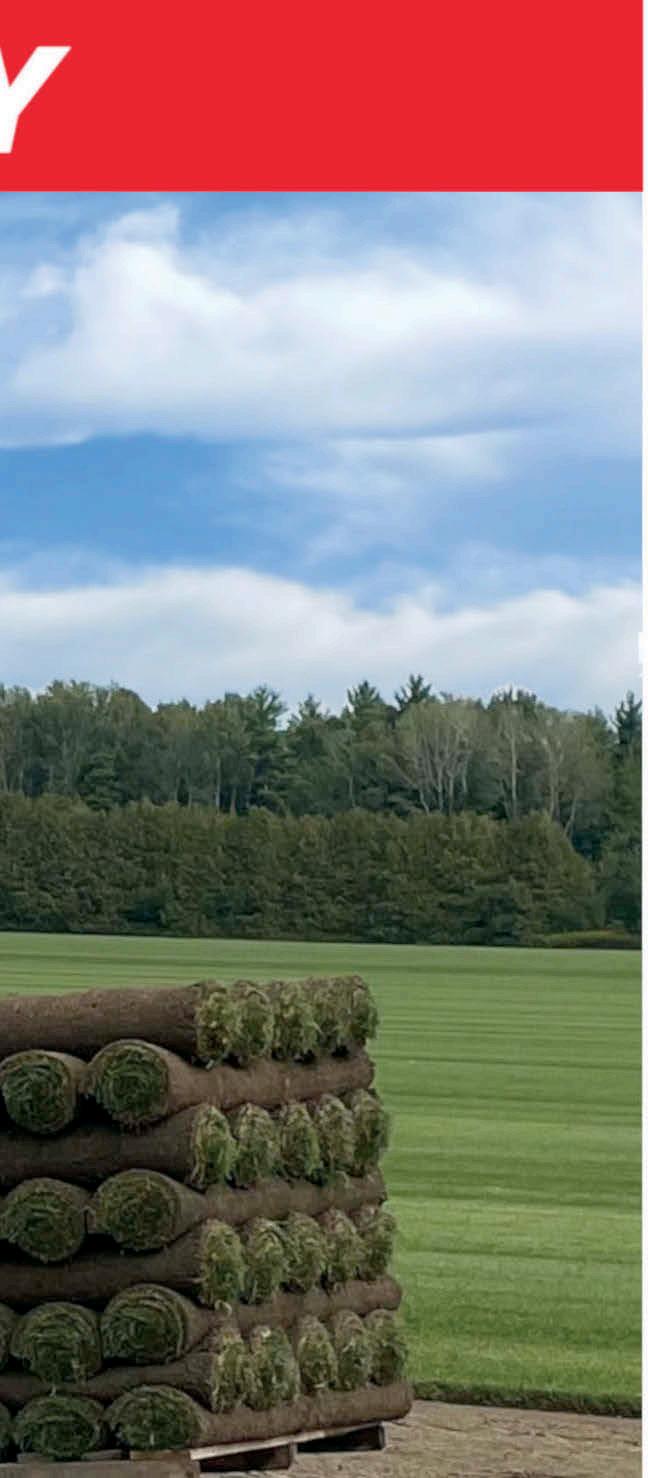

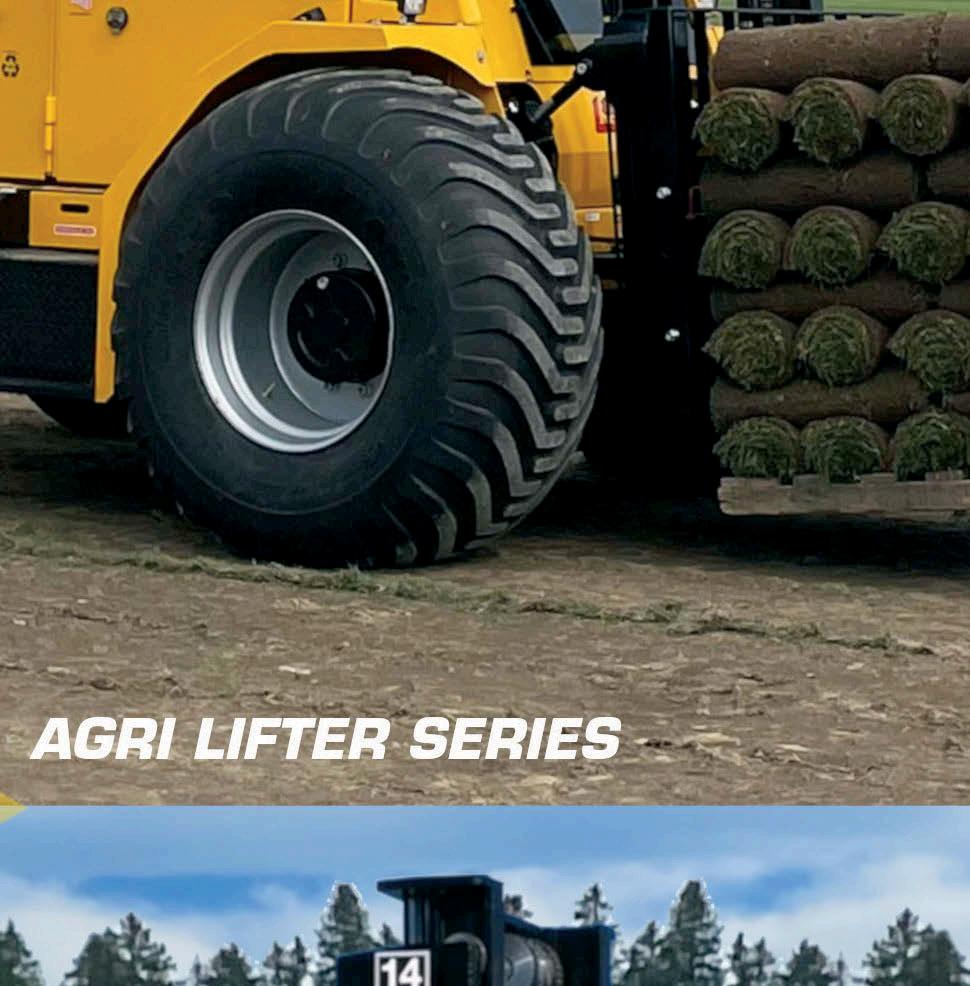
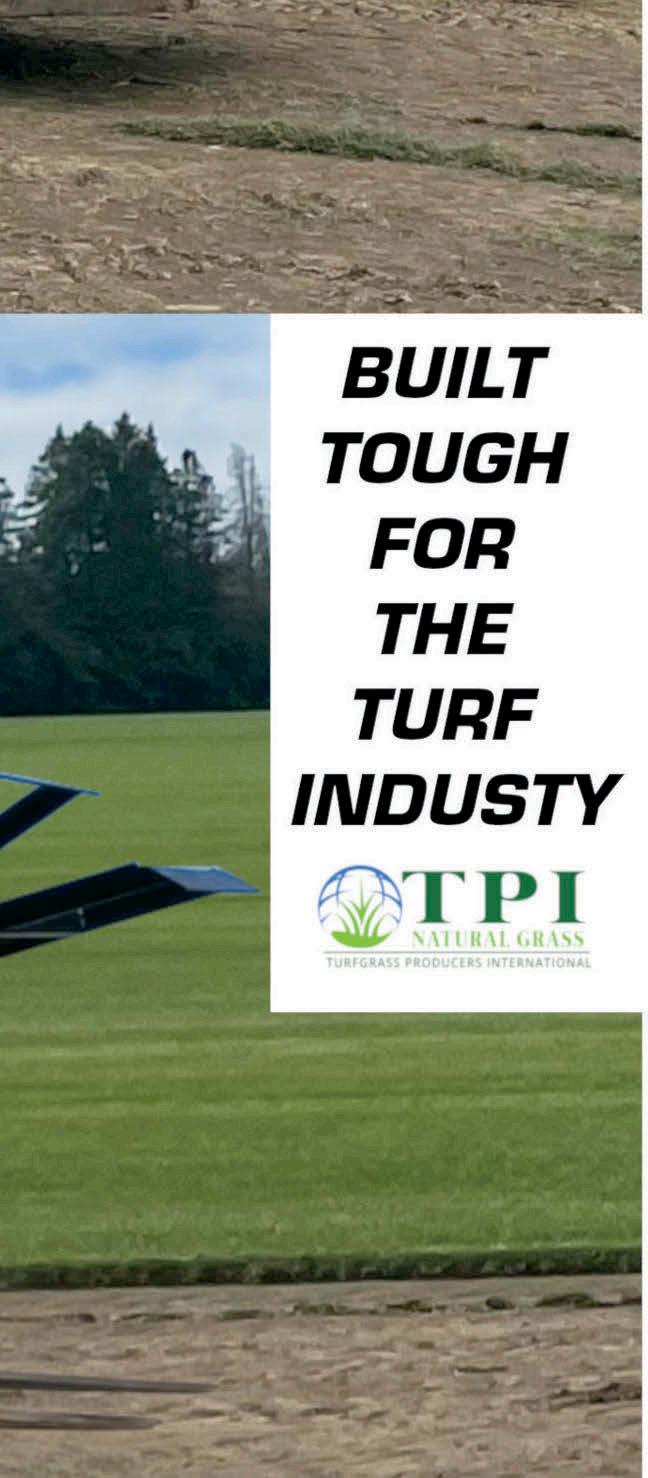



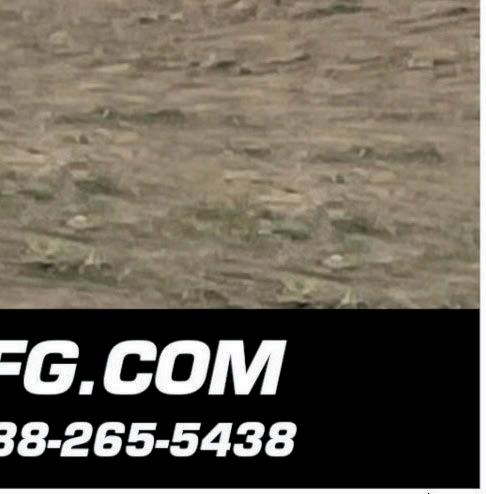
83 TPI Turf News September/October 2023
HAPPENINGS
Dr. James passed suddenly in 2018. Harriet continued to unselfishly love and support her family, embracing her new role as great-grandmother, when her granddaughter Amanda and her husband, Rusty Harrison, added son James Wayne Harrison to the family on February 13, 2020, and son Wesley Hart Harrison, on May 11, 2022. Harriet savored life, thoroughly enjoying the various stages throughout the years, and leaves a legacy both personally and professionally.
Australia Day Honors for A gricultural Scientist Peter McMaugh
As Australia’s The Daily Telegraph reported, “If you’ve enjoyed the rugby at Sydney Football Stadium or the races at Royal Randwick, chances are the man at the grassroots level who has made it all possible is Peter McMaugh. The agricultural scientist is Sydney’s turf warrior and has been made a Member in the General Division in the Order of Australia for his work spanning 55 years of green-thumbed grass breeding and development.” Most recently, the Australian Institute of Agricultural Science and Technology has honored Peter McMaugh with the Australian Medal of Agriculture Science, which recognizes individuals who have made outstanding, specific contributions to the advancement of Agriculture and Natural Resource Management (NRM). Peter McMaugh was named a Turfgrass Producers International (TPI) Honorary Member in 2004, recognizing his significant contributions towards the improvement and advancement of TPI and the turfgrass industry. The Daily Telegraph provided the following career background: McMaugh has not only bred a variety of couch grasses that grace the lawns of the Melbourne Cricket Ground, Fox Studios, Royal Randwick, Sydney’s Botanic Gardens, and polo fields at the late Kerry Packer’s property, but has also become the foundation of Australia’s turfgrass production industry. McMaugh also was involved in turfing major sporting venue the Sydney Football Stadium. McMaugh’s Windsor Green couch grass (known as Bermudagrass in the U.S.) has for 20 years graced the Royal Botanic Garden’s rose garden, which is visited by millions annually. Two years ago, Royal Randwick Racecourse solicited the grandfather-of-four to help design and turf its second Kensington track with Kikuyu. Varieties of grass take at least eight years to breed in the myriad of plant pots in McMaugh’s backyard at his home in Carlingford. The first variety in his collection of

fine-bladed grasses was released in 1983, providing the Australian industry with superior varieties, Winter Green and Windsor Green, from which other plant breeders have developed new superior couch grass.
Among his many achievements have been creating the name for Australia’s most recognized buffalo grass, Sir Walter, and developing the notion of a drop-in wicket in the early days of one-day cricket.
McMaugh established the country’s first turf research organization, Australia Turf Research Institute, in 1964, but he is reluctant to accept a nod for his scientific expertise, innovation, and commercial accomplishments. “I’m quite stunned that I’ve been honored. I’m a background person,” he said. “I shun the limelight but grass, well, it needs a higher profile. It’s a very important part of the city’s environment. It provides an oasis of clean air, oxygen—life without any green is a very deprived one,” he said. “I’ve had a wonderful professional career all over the world thanks to it.”
Sod Solutions Receives 2023 GardenComm Media Award


Sod Solutions recently received the 2023 Media Awards Silver Laurel Medal of Achievement for Digital Media: Video, presented by GardenComm: Garden Communicators International. This award recognizes individuals and companies who achieve the highest levels of talent and professionalism in garden communications. The 2023 competition had 121 entries in 39 categories. Recipients of the Silver Medal represent the best in their category and will now compete for Gold Medals.
Sod Solutions received the award for an educational video entitled “How to Lay Sod” from its lawn and garden blog for homeowners, Sod University. Sod University aims to empower consumers by educating them on lawn and garden care techniques that enable them to contribute to the planet’s health. The prize-winning video can be seen at the YouTube video link: https://www.youtube.com/ watch?v=W223d9N7RK0
Valerie Smith, Content Strategist, wrote and directed the award-winning video. She has been with Sod Solutions for five years and an active member of GardenComm for three years. GardenComm, Garden Communicators International, is an organization of professional communicators in the green and garden industry who are constantly reaching out to the consumer market.
84 TPI Turf News September/October 2023
Grass scientist Peter McMaugh at Royal Randwick racecourse that he grassed in 2000.
COVERING ALL YOUR TURF NETTING NEEDS

ECOCYCLE™ SOD NET





17' & Standard Width
20' Widest Roll on the Market
6" and 8" Poly Cores
Available in Green or Brown
Standard Strength and Heavy Duty
ECOCYCLE™ SOD WRAP
23" 29" 40" and 46"
Sports Net-Stronger for Heavier Rolls
Extra Length
Standard Strength and Heavy Duty
Each roll individually wrapped for protection
PALLET NET WRAP
Provides breathability and air flow
Keep integrity of rolls during transport
Hand rolls for easy application
85 TPI Turf News September/October 2023
Tamanet USA Inc. 2831 Ringling Blvd. C-112 Sarasota FL 34237 800-441-8262 714-698-0990 www.tamanetusa.com MANUFACTURED IN THE USA MANUFACTURED IN THE USA
TURFGRASS INDUSTRY NEWS
2023 Ryder Cup Plays on Turfgrasses from Pure Seed & Atlas Turf International
As the 2023 Ryder Cup approaches, the host venue, Marco Simone Golf & Country Club, stands ready with turfgrasses from Pure Seed and Atlas Turf International. For the first time in the competition’s history, the iconic duel between Europe and the United States will occur in Italy. When the 44th edition of the Ryder Cup begins in late September, the stage will be set with a complete portfolio of championship turfgrasses, including Pure Distinction Creeping Bentgrass, Pure Dynasty® Seeded Paspalum, and PureLinks Fescue.
Marco Simone, located in Guidonia just northeast of Rome, underwent a complete redesign in preparation for the Ryder Cup. Originally designed by Jim Fazio and opened in 1989, the golf course needed to be transformed to host the world’s largest golf competition. European Golf Design was selected for the job with lead architect Dave Sampson spearheading the redesign. For the turfgrass, the challenge entailed selecting the varieties best suited for the climate, possessing the ability to execute the designer’s vision, and most capable of delivering playability up to par with the legendary golf challenge.
The turfgrasses meeting the demanding criteria are nearly all developed by Pure-Seed Testing, distributed by Pure Seed, and co-marketed by Atlas Turf International. Pure Distinction Creeping Bentgrass is the greens selection. Tees, fairways, approaches, and collars feature Pure Dynasty Seeded Paspalum, and the roughs are Pure Links, a proprietary blend of tall and fine fescues.
Advanced Turf Solutions and Valley Green Become Exc lusive Distributor Partners for ProVista Kentucky Bluegrass
Advanced Turf Solutions, including its New England subsidiar y, Valley Green, is pleased to become the exclusive distributor of ProVista Kentucky Bluegrass from The Scotts Miracle-Gro Company.

ProVista Kentucky Bluegrass is an innovative variety engineered to produce dense green lawns with less mowing and fertilization. Compared to conventional Kentucky bluegrass, ProVista Kentucky Bluegrass grows at half the rate, is more shade tolerant, and is engineered for complete weed control.
“I’ve been involved in developing and testing this product for years,” said ProVista Business Development Manager Dr. Christian Baldwin of The Scotts Miracle-Gro Company. “When it was ready to bring to a wholesale market, we knew we needed a partner that understood the lawn care industry inside and out. ATS was a clear choice to be that partner.”
NASA and USDA to Increase Collaborative Efforts, Inc luding Ag Research
Editor’s note: The following information was included in an article from The Packer Staff in thedailyscoop.com on June 27. The USDA and NASA have signed a commitment strengthening the collaboration between the two agencies, aimed at increasing efforts to improve agricultural and Earth science research, technology, and agricultural management, along with the application of science data and models to agricultural decision-making, according to a news release. “From the heavens to the heartland, NASA and the Department of Agriculture are reaffirming our commitment to getting essential data in the hands of America’s farmers and preparing future generations to lead and strengthen America’s agriculture industry,” NASA Administrator Bill Nelson said in the release. The agreement affirms the USDA and NASA’s longstanding partnership on mutually beneficial collaborative activities that further education, communication, and outreach to inspire the youth in America to pursue careers in STEM and agriculture, according to the release. What’s more, this partnership will build on NASA’s Bridge Program to foster workforce development partnerships with higher-education partners, including Tribal and Minority Serving Institutions and the USDA’s newly launched NextGen program, which is investing $262.5 million to cultivate the next generation of diverse food and agriculture professionals, according to the release.
Farmers Remain Cautiously Optimistic About A gricultural Economy
Agricultural producer sentiment improved slightly in July as the Purdue University/CME Group Ag Economy Index rose two points to a reading of 123. Farmers were also more optimistic about their perception of current conditions and future expectations on their farms. The Index of Current Conditions rose five points to a reading of 121, while the Index of Future Expectations was up one point to 124. The Ag Economy Barometer is calculated each month from 400 U.S. agricultural producers’ responses to a telephone survey. This month’s survey was conducted July 10-14, 2023. Read the full Ag Economy Barometer report at https:// purdue.ag/agbarometer. The site also offers additional resources – such as past reports, charts, and survey methodology – and a form to sign up for monthly barometer email updates and webinars. Each month, the Purdue Center for Commercial Agriculture provides a short video analysis of the barometer results, available at https://purdue.ag/barometervideo. For more information, check out the Purdue Commercial AgCast podcast available at https://purdue.ag/agcast, which
86 TPI Turf News September/October 2023



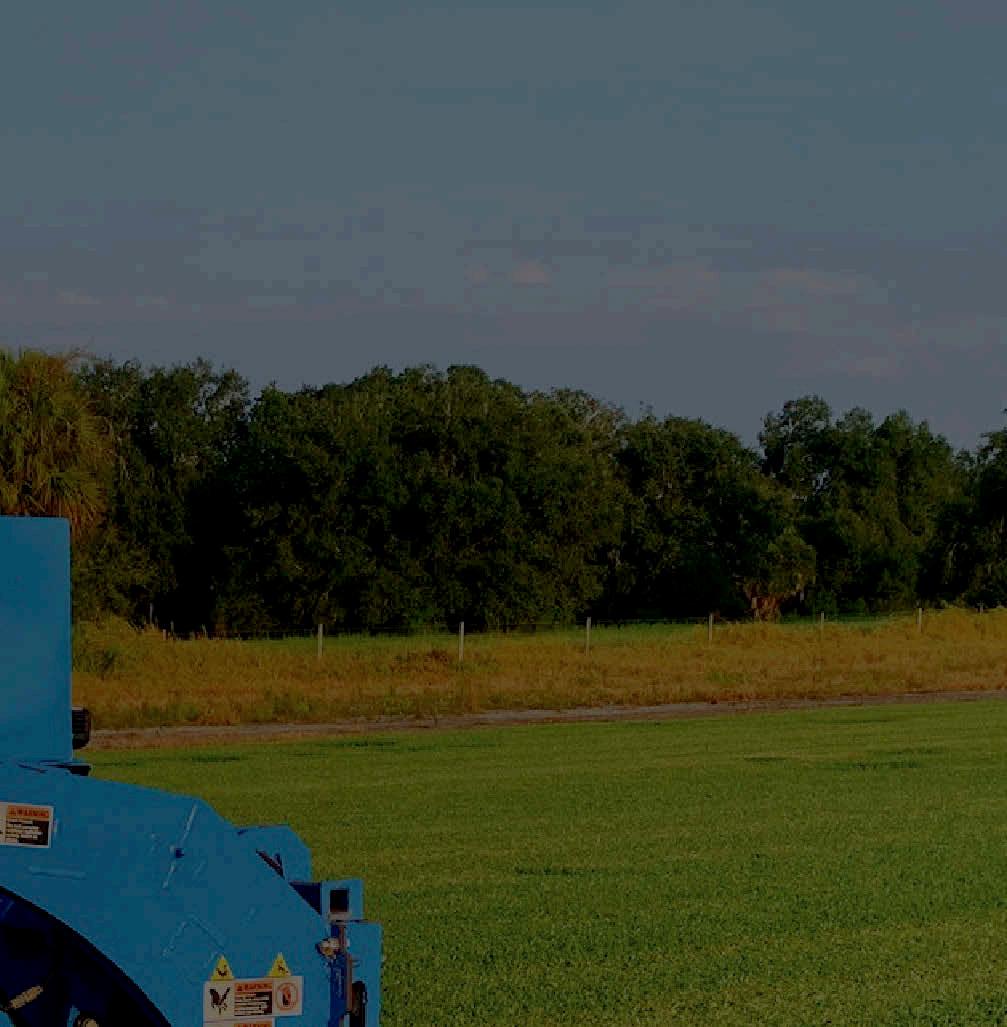



TURFGRASS INDUSTRY NEWS


includes a detailed breakdown of each month’s barometer and a discussion of recent agricultural news that affects farmers.
The Employment Situation—July 2023

On August 4, the Bureau of Labor Statistics, U.S. Department of Labor released the latest results from their surveys of U.S. non-farm establishments. While the information does not cover farms, the information can be helpful for farmer’s planning as they, in many cases, must compete for employees from the same pool of the U.S. population. The following statistics can be helpful in determining your potential choices in seeking employees and making hiring decisions. This news release presents statistics from two monthly surveys. The household survey measures labor force status, including unemployment, by demographic characteristics. The establishment survey measures nonfarm employment, hours, and earnings by industry.
Total nonfarm payroll employment rose by 187,000 in July, and the unemployment rate changed little at 3.5 percent, the U.S. Bureau of Labor Statistics reported. Job gains occurred in health care, social assistance, financial activities, and wholesale trade. Both the unemployment rate, at 3.5 percent, and the number of unemployed persons, at 5.8 million, changed little in July. The unemployment rate has ranged from 3.4 percent to 3.7 percent since March 2022.
Among the major worker groups, the unemployment rate for Asians declined to 2.3 percent in July. The jobless rates for adult men (3.3 percent), adult women (3.1 percent), teenagers (11.3 percent), Whites (3.1 percent), Blacks (5.8 percent), and Hispanics (4.4 percent) showed little or no change over the month.
Among the unemployed, the number of persons on temporary layoff decreased by 175,000 to 667,000 in July. The number of permanent job losers changed little at 1.4 million.
The number of long-term unemployed (those jobless for 27 weeks or more) was little changed at 1.2 million in July and accounted for 19.9 percent of all unemployed persons. The labor force participation rate was 62.6 percent for the fifth consecutive month. The employment population ratio, at 60.4 percent, remained little changed in July. The number of persons employed part time for economic reasons, at 4.0 million, changed little in July. These individuals, who would have preferred full-time employment, were working part-time because their hours had been reduced or they were unable to find full-time jobs. The number of persons not in the labor force who currently want a job was 5.2 million in July, little changed from the prior month. These individuals were not counted as unemployed because they were not actively looking for work during the 4 weeks preceding the survey or were unavailable to take a job.
Among those not in the labor force who wanted a job, the number of persons marginally attached to the labor force was essentially unchanged at 1.4 million in July. These individuals wanted and were available for work and had looked for a job sometime in the prior 12 months but had not looked for work in the 4 weeks preceding the survey. The number of discouraged workers, a subset of the marginally attached who believed that no jobs were available for them, changed little at 335,000 in July. The complete report is available at https://www.bls.gov/ news.release/pdf/empsit.pdf.
The Employment Situation for August is scheduled to be released on Friday, September 1, 2023, at 8:30 a.m. (ET).
Research Combines Global Economic Model with Ecosystem Benefit Models
Current trends in environmental degradation will lead to large economic losses in the coming decades, hitting the poorest countries hardest, according to a new study led by Purdue University and the University of Minnesota. The study also finds that investing in nature can turn those losses into gains. The findings, published in Proceedings of the National Academy of Sciences, develop a novel, global Earth-economy model to capture interactions between the economy and the environment. Crucially, these interactions include how nature benefits humans by pollinating crops, providing timber, storing carbon, and providing catch for marine fisheries, and how those benefits affect the economy overall.
“Traditional economic models almost completely neglect the fact that the economy relies on nature,” said study co-author Thomas Hertel, Distinguished Professor of Agricultural Economics at Purdue. “This new study required a detailed understanding of how and where land use patterns change as a result of economic activity, with enough spatial detail to understand the environmental consequences of these changes.”
“We have long thought of the economy and the environment as working against each other,” said the study’s lead author, Justin Johnson, assistant professor of applied economics at the University of Minnesota. “Investing in nature does not stifle the economy; it boosts the economy. But it has been difficult to model those interactions until recently.”
The new research looked at only a small subset of the ways that the economy and the environment interact, yet still found strikingly large effects. Hertel and his colleagues expect an entire line of research to continue developing along these lines. “We would like to broaden the Global to Local Analysis of Systems Sustainability (GLASSNET) coverage of ecosystem services,” he said. “There are many important services nature provides that aren’t quantified here –groundwater, for example. There’s a lot more to be done.”
88 TPI Turf News September/October 2023
2023 2 02 3

U.S. NATIONAL WEATHER SERVICE THREE MONTH CLIMATE PREDICTIONS


90 TPI Turf News September/October 2023







WEATHER WATCH















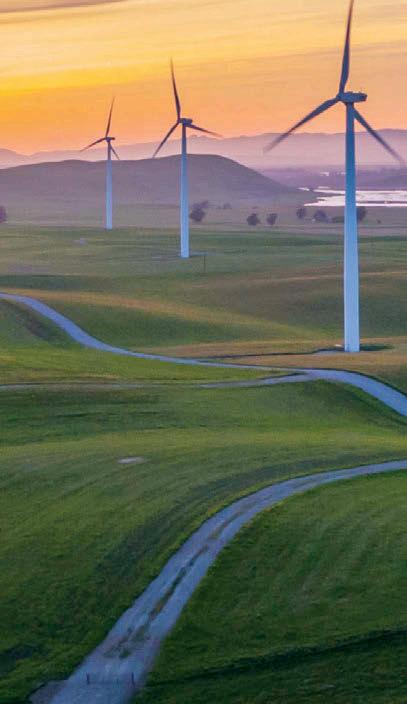


The Seasonal Precipitation Map above is an example of the resources available from Copernicus. This map shows the estimated deviation (anomaly) of precipitation for the month from the model climate in millimeters.
Copernicus is the European Union's Earth observation program, looking at our planet and its environment to benefit all European citizens. Vast amounts of global data from satellites and ground-based, airborne, and seaborne measurement systems provide information to help service providers, public authorities, and other international organizations improve European citizens' quality of life and beyond. In addition, the data generated becomes a useful tool for weather-sensitive industries, such as turfgrass sod production. The information services provided are free and openly accessible to users. To access the information, go to the link that follows. https://effis.jrc.ec.europa.eu/apps/effis.longterm.forecasts/
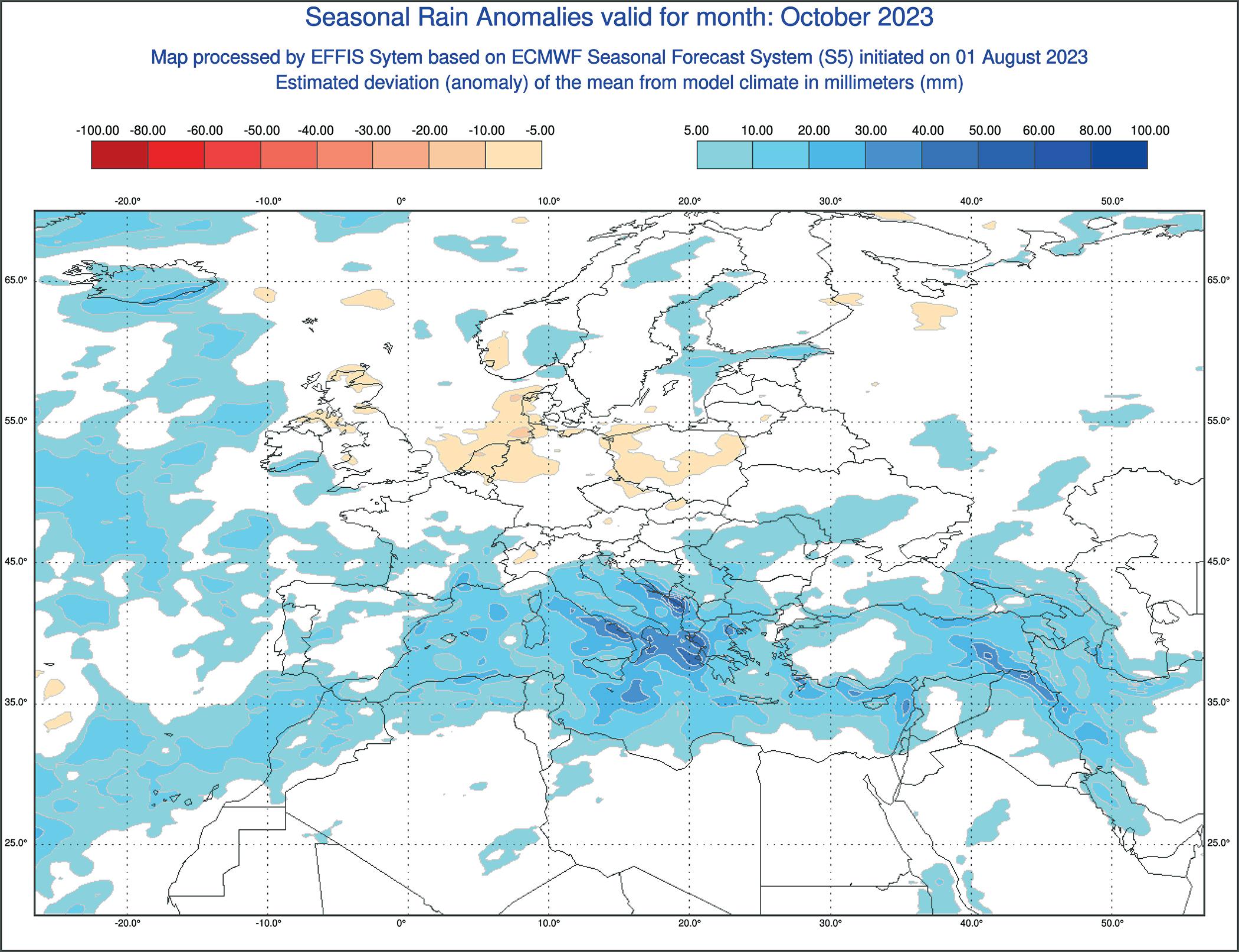
92 TPI Turf News September/October 2023











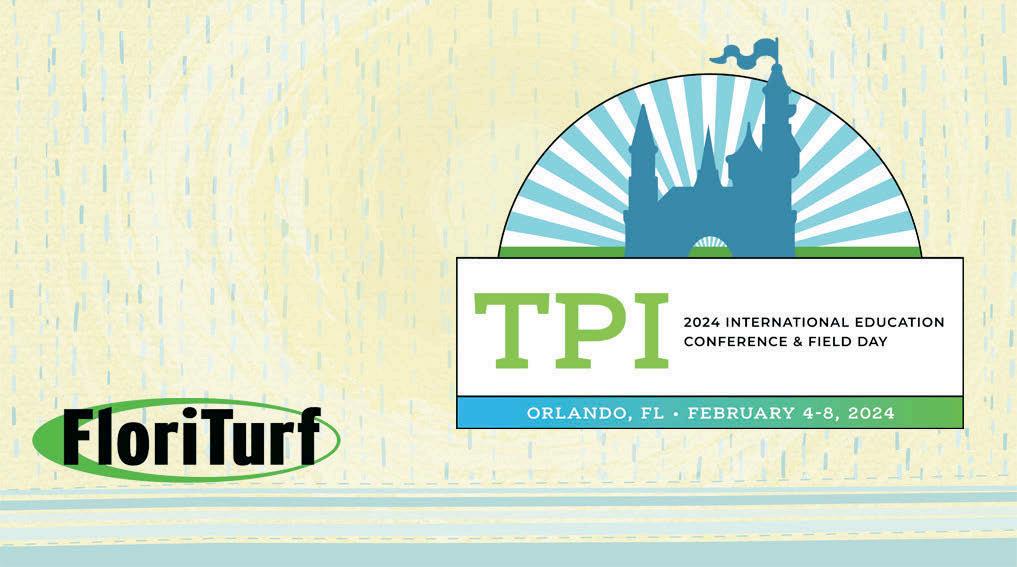







93 TPI Turf News September/October 2023 TURF MARKETPLACE Solid & Dependable Rotary Finishing Mowers New, Used & Refurbished Single Axle Truck Use Over 50 years of Visit www.TurfGrassSod.org
CLASSIFIED ADS
FOR SALE: 1560 Brouwer 16" slab cutter. Runs good and has 4052 hrs., Asking $13,500 or best offer. More pictures or video available upon request.
Please contact Mike Ecton at 859-333-9419 or ectonnursery@gmail.com.
FOR SALE: 2018 Kesmac Slab Harvester, 1466 hr. Asking $ 45,000.
Please contact Rick at fharper@simplexnails.com or call 229-924-2767.
FOR SALE: 2019 Kesmac 2150 **Ready to Sell**, low hours around 1500. Perfect condition, only selling because we bought a FireFly. Best Offer!
Please contact Jodie at thegrasscompany24@gmail.com or call 229-947-0447.
FOR SALE: Bush Hog, 3-point hitch backhoe, located in V ienna, GA. Asking $6,000 or best offer.
Please contact Jodie at jodiehays24@yahoo.com or call 229-947-0447.
FOR SALE: 2017 Brouwer RoboMax 24; Tractor Hrs: 4566; Harvester Hrs: 1962. Asking price $143,000.
Give us a call for more information at 913-254-9560.
FOR SALE: 2020 Trebro TSR; Engine hours: 3627; Harvester hours: 1610. It's in good condition only selling because we upgraded. Asking price $219,000.
Please contact Colton at colton@salesmidwest.com or call 913-254-9560.
FOR SALE: 2018 Kesmac 11 Gang Fairway Reel Mower; 8 b lades per reel, lightly used, located in Kansas, 67357. Asking $33,000.
Please contact Colton at colton@salesmidwest.com or call 913-254-9560.
FOR SALE: 2020 hardly used STEC MZ18X tiller, heavy duty 13' and 4" working width, 1,000 pto, 225-hp minimum request. Location, AR 72432. Asking $38,000. Please contact Colton at colton@salesmidwest.com or call 913-254-9560.
FOR SALE: 2010 Magnum 420SR 42" big roll sod harvester. S everal new parts and ready to go. You can see more pictures of this unit on our website: www.SalesMidwest.com Asking $59,000.
Please contact Colton Wollesen at 913-254-9560.
FOR SALE: 2004 Trebro Harvestack HS-123: Recently sold our farm and looking to move it as soon as possible. Asking $61,500 OBO; 8229 hrs.
Please call Craig at 218-348-8924 or email kerricksod@ gmail.com.
FOR SALE: Multiple items: 2 Brillion SL-12 Sure Stand S eeders.Always stored inside and like new. Each unit has front roller scrapers, and s-tine track scratchers, 11L-15 tires, one has an acre counter and warning lights.
Excellent condition. $14,000 each or $27,000 for the pair.1 Brillion Tandem hitch model DH 212used to pull both Brillion seeders at the same time. Hydraulically swing action goes from field mode to travel mode in seconds. 11L15 tires. Weathered a little but in very good condition. $4,500. Or buy the complete set of seeders and hitch for $30,000.Trebro AutoStack– 10,400 hours and in very good condition, used every day as our only harvester, so it has been very well maintained. Rebuilt engine and many components have been replaced. Very good condition. $85,000.2 – 11 gang Jacobsen fairway mowers. 1 unit has all new reels and double edge bedknives and complete reconditioning including rollers, done within the last year. $8500. The other unit was reconditioned 2 years ago and has about 50% reel stock remaining. $5500. Several more units in various condition.Neary Model 180-reel sharpening system. $4500.Simplex/Peerless Ideal 1000 Bedknife grinder.$3500.Land pride 22’ rotary mower, good condition $5500.
For more detailed information and pictures, email Ed at gr8turf@earthlink.net or call 608-752-4030 or 608-7517293.
TPI CLASSIFIED ADVERTISING— TARGETED TO TURFGRASS PRODUCERS WORLDWIDE
Buying or selling equipment, supplies, properties, or looking for employees or employment opportunities?
TPI classified advertising is the answer! Reach your target market with a free or low cost classified ad in Turf News magazine and on the TPI website at www.TurfGrassSod.org
The classified ad section is the first place many TPI members look when they receive the most recent issue of Turf News magazine and the most viewed area on the TPI website.
All classified ads are posted to the TPI website within 24 hours of approval and featured in the next issue of Turf News!
TPI Member: FREE / Non-Member: $50
Rates are determined in one-inch vertical increments. Please estimate approximately 65 words per inch. Photos are limited to the website and no more than two photographs per ad.
View full details at www.TurfGrassSod.org/classifieds
Deadline: 30-days prior to Turf News issue date (e.g., November/December Turf News issue, ad is due by September 29).
Upload your classified ad at: www.TurfGrassSod.org/classifieds o r send to Geri Hannah via email: ghannah@TurfGrassSod.org


Fax: 847-649-5678
Mail: Turfgrass Producers International
444 E. Roosevelt Road #346 | Lombard, IL 60148 U.S.A
All classified ads are subject to review; TPI does not endorse any ad and reserves the right to edit or decline any ad.
94 TPI Turf News September/October 2023
Visit TurfGrassSod.org to view the advertiser's photos or click on the camera icon in the electronic version of this page.
AD INDEX FOR SEPTEMBER/OCTOBER TURF NEWS MAGAZINE
WELCOME NEW & RETURNING MEMBERS
Matt Hesse Sabanto, Inc. 2625 N. Loop Drive Suite 2105 Ames, IA 50010 641-751-9315
matt.hesse@sabantoag.com
Doug Lipscomb
James Lipscomb & Sons, Inc.
DBA Riverview Turf 14308 County Road 12 South Foley, AL 36535 251-965-7132
douglipscomb1@gmail.com
Taylor Williams University of Tennessee
2505 EJ Chapman Drive
112 Plant Biotech Bldg. Knoxville, TN 37996 865-964-7284
Twill117@utk.edu
Jodie Hays The Grass Company 272 Flintview Drive Cordele, GA 31015 229-938-6740
thegrasscompany24@gmail.com
Michael Parizek Parizek Farms 15500 W. Frisco Dr. Yukon, OK 73099 405-556-0270
Mparizek92@gmail.com
Roger Morgan Readylawn
913 Shands Road, R.D. 6 Christchurch 7676 New Zealand 64 27 221 8700
roger@readylawn.co.nz
Kimberly Clegg Clegg & Sons’ Sod Farm, LLC
7080 S. Garrity Rd. Seymour, IN 47274 800-377-1421
info@cleggfarms.com
Shane Way Wayside Sod 144037 Hawkins Rd. Tillsonburg ON N4G 4G8 Canada 519-842-4468
office@waysidesod.com
95 TPI Turf News September/October 2023
Advanced Equipment Sales ……….....…........………. 71, 93 A-LIST …….……..….............……….....…...….…....…… 53 Brouwer Kesmac …….….……..............…….....…….... 67, 93 Cameron Financial …….……...…...............…......…..…… 93 FireFly Automatix, Inc. …………………..……………… 89 Irrigation Association ………......….…........……..……… 81 Jonathan Green & Sons, Inc. ………...….………..……… 49 KWMI ………….…………..…….……..…...…...……. 3, 93 Landmark Seed Company …….…..... Outside Back Cover Load Lifter Manufacturing ...................…......………..…. 83 Magnum ……………………....… Inside Front Cover, 44-45 Mountain View Seeds ………...............................………. 91 MVP Genetics ……...…….…………..…. Inside Back Cover Progressive Turf Equipment, Inc. ....................................... 5 R&R Products, Inc. ........................................................... 69 Sod Solutions® ………………….....….....…………………. 87 Southern Specialty Equipment …...…...…...……………. 93 TAMANET (USA) ……….…...………………..………... 85 The Lawn Institute ……….…….………………..………... 93 Trebro Manufacturing, Inc. ………...………….………… 13 Turfgrass Producers International …............... 17, 74-75, 93 Van Vuuren Machine…………….…………...…………… 79
TURFGRASS INDUSTRY CALENDAR

Editor’s note: The following information was up to date as of August 1, 2023. Please check the websites listed for the most current information as you do your planning.
2023
SEPTEMBER
September 10-13
ELEVATE National Landscape Conference Dallas, TX
https://www.landscapeprofessionals.org/ELEVATE/
September 12
Ohio Sports Field Management Fall Field Day Football Hall of Fame in Canton, Ohio https://ohioturfgrass.org/events/event_list.asp
September 12-14
T PI Future Leaders Legislative Visit Washington, DC https://www.TurfGrassSod.org/events/
OCTOBER
October 2
OTF Scholarship Golf Tournament Dublin, OH https://ohioturfgrass.org/events/event_list.asp
October 17-20
EQUIP Expo Louisville, KY
https://www.equipexposition.com/equip-magazine/equip-exposition-celebrates4 0th-anniversary-with-2023-show
October 25
NC Sod Producers Field Day Angier, NC https://www.ncsod.org/
October 29-31
Crop Science Society of America Annual Conference St. Louis, MO https://www.acsmeetings.org
NOVEMBER
November 7
Georgia Sod Producers Field Day Fort Valley, GA
https://urbanagcouncil.com/sod-producers-field-day/
November 13-15
Carolinas Golf Course Superintendents Association Conference Myrtle Beach, SC https://www.carolinasgcsa.org
November 15
SC Sod Producers Association Meeting Myrtle Beach, SC
November 27-30
Irrigation Show and Education Week
San Antonio, TX
https://www.irrigation.org/2023Show/
November 29-30
K ansas Turfgrass Conference
Manhattan, KS
https://www.kansasturfgrassfoundation.com/annual-ktf-conference.html
DECEMBER
December 4-7
OTF Conference and Show
Columbus, OH
https://ohioturfgrass.org/events/event_list.asp
December 5-7
New Jersey Green Expo Atlantic City, New Jersey
https://njta.wildapricot.org
December 12-13
Texas Turfgrass Association Winter Conference
Frisco, TX
https://texasturf.com/index.php/2023-save-the-date/
2024
JANUARY
January 22-25
Sports Field Management Association Conference
Daytona Beach, FL
https://www.sportsfieldmanagement.org/conference/
January 29-February 1
Golf Industry Show
Phoenix, AZ
https://gcsaaconference.com
FEBRUARY
February 4-8
TPI International Education Conference & Field Day

Orlando, FL
https://www.turfgrasssod.org/events/
If you are planning an industry event of interest to our readers please send the information to: creynolds@TurfGrassSod.org and put “Industry Calendar” in the subject line.
96 TPI Turf News September/October 2023








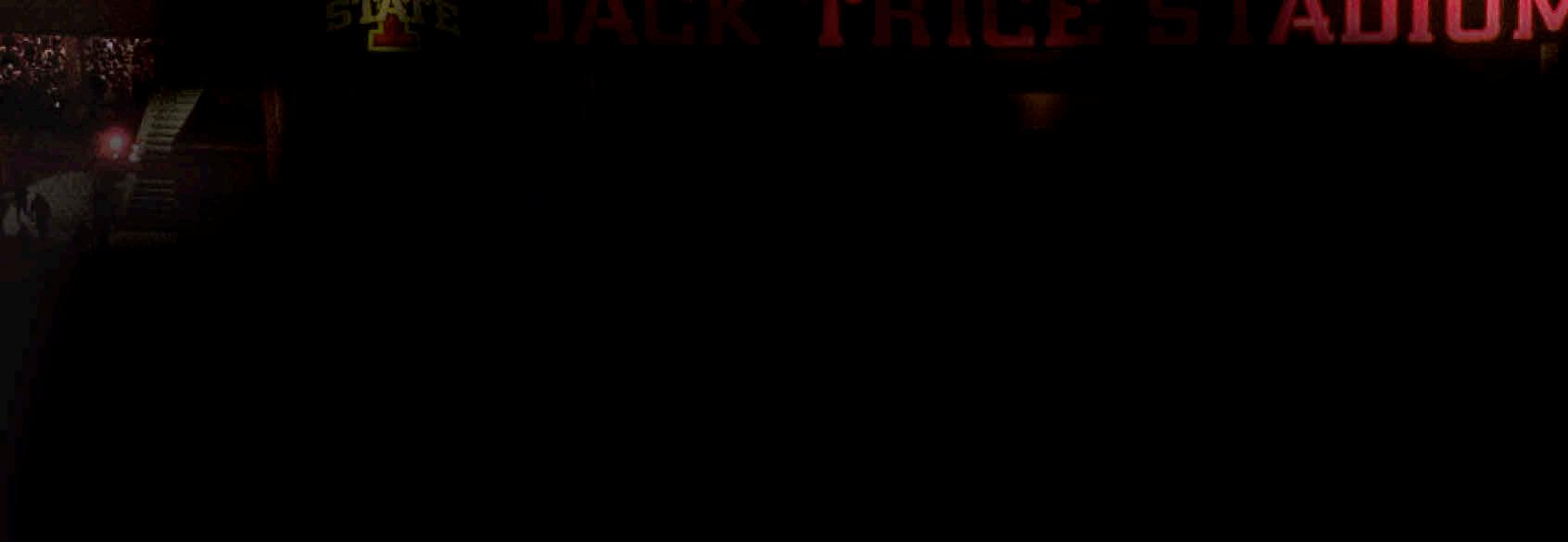






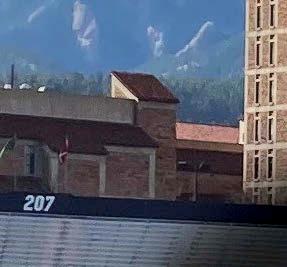




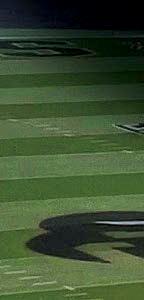

























































































































































































 By Casey Reynolds, PhD
By Casey Reynolds, PhD


























































































































































































































































































































































